










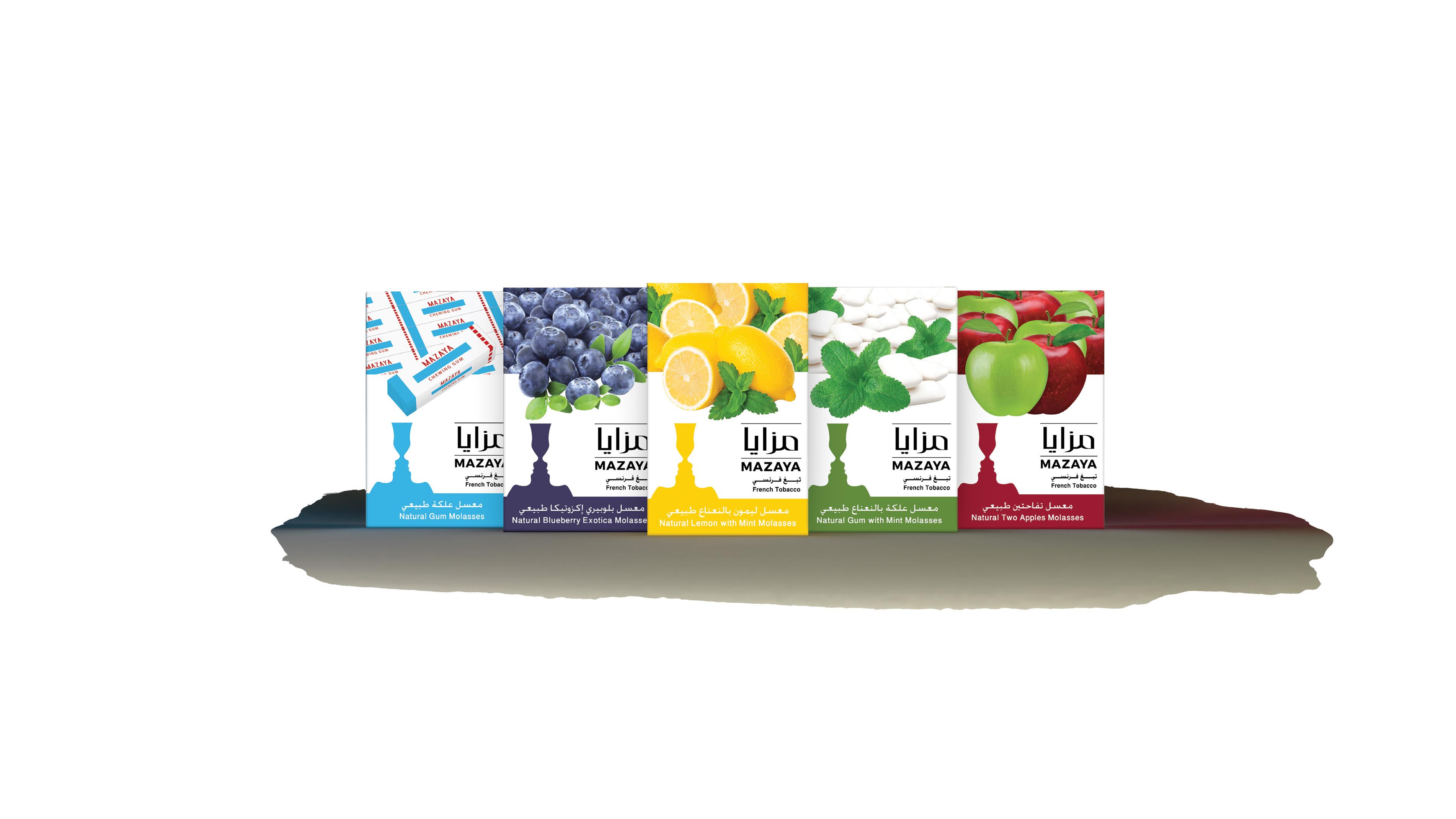


























Light-as-air dry oil spray instantly absorbs into hair for enhanced manageability and shine.









































Light-as-air dry oil spray instantly absorbs into hair for enhanced manageability and shine.


Travel retail’s renewed ascent has been gaining unprecedented momentum as operators embrace transformative strategies and revolutionary technologies that are reshaping passenger experiences worldwide. The convergence of sophisticated data analytics, immersive retail concepts and strategic diversification has been driving sustainable growth amid evolving market dynamics.
At the forefront of this experiential retail evolution stands Avolta’s “Predictably Surprising” framework, where the company’s five strategic pillars have been redefining customer engagement. Cruise retail has emerged as a premium channel, while the company’s organic growth and increase in Club Avolta membership reflect successful execution of contextual retail approaches that understand traveler intent and emotional states.
Record performance has marked Qatar Duty Free’s milestone 25th anniversary year. Supporting this success is the groundbreaking 36Q data platform, which has enabled real-time passenger behavior analysis and shifts merchandising decisions from assumptions to actionable insights. Daily Chef Noof’s modern Qatari cuisine and strategic partnerships with local brands provides wished-for cultural authenticity, creating touchpoints that resonate with evolving transit tourism strategies.
Data-driven transformation is reshaping global operations at Gebr. Heinemann, where the departure from democratic assortments toward curated luxury and accessibility has been generating stronger consumer engagement and increased basket sizes. Global expansion into markets including Jeddah, Noida and cruise retail has extended the company’s reach.
Despite regional tensions across the Middle East and Eastern Europe, which continue to influence travel patterns and operational planning, operators have maintained momentum through adaptive strategies and diversified geographic exposure.
As we head to Cannes this year, I’m energized by the opportunity to connect with the visionary leaders driving our industry’s transformation. The insights and innovations we’ll encounter will undoubtedly shape the stories we tell and the trends we track in the months ahead. Looking forward to seeing you there.

Kindest regards,

HIBAH NOOR Editor-in-Chief hibah@gtrmag.com
OCTOBER 2025 · VOL 37 · NO 6
Global Travel Retail Magazine (ISSN 0962-0699) is published seven times a year by Paramount Publishing Company Inc. The views expressed in this magazine do not necessarily reflect the views and opinions of the publisher or the editor. October 2025, Vol 37. No. 6. Printed in Canada. All rights reserved. Nothing may be reprinted in whole or in part without written permission from the publisher. Paramount Publishing Company Inc.
GLOBAL TRAVEL RETAIL MAGAZINE Tel: 1 905 821 3344 www.gtrmag.com
PUBLISHER Aijaz Khan aijaz@globalmarketingcom.ca
EDITORIAL DEPARTMENT
EDITOR-IN-CHIEF Hibah Noor hibah@gtrmag.com
DEPUTY EDITOR Laura Shirk laura@gtrmag.com
SENIOR EDITOR Wendy Morley wendy@gtrmag.com
SENIOR CORRESPONDENT Atoosa Ryanne Arfa atoosa@gtrmag.com
SENIOR WRITER Alison Farrington alison@gtrmag.com
ART DIRECTOR Jessica Hearn jessica@globalmarketingcom.ca
ADVISORY BOARD
Gary Leong Thomas Henningsen
CIRCULATION & SUBSCRIPTION MANAGER accounts@globalmarketingcom.ca

We’re pioneering the travel experience revolution. Combining the best of Autogrill, Dufry, HMSHost & Hudson.

26 Beyond the milestone
As Qatar Duty Free (QDF) marks a record-breaking 25th anniversary with over 25 new openings and 18% sales growth, Chief Retail and Hospitality Officer Thabet Musleh reveals how data-driven personalization, strategic talent acquisition and cultural authenticity are positioning QDF for its next phase of global expansion
40 Predictably surprising
Avolta CEO Xavier Rossinyol speaks with GTR Magazine about the company’s multi-channel evolution, from experiential retail concepts to cruise expansion, as the travel retail giant targets sustainable growth through innovation and collaboration
102 A tale of technologies
Travel retail is moving into a new era where AI, contactless payments and Just Walk Out technology bring greater speed, personalization and operational efficiency, while opening new possibilities for travelers, retailers and airports
116 New era, new beauty
Driven by growing consumer literacy and the rise of dermacosmetics, the medicalization of beauty sees healthcare professionals playing a role in shaping current beauty norms. GTR Magazine turns to the experts to learn more about this integration and how brands are exemplifying the shift
30 The risk of structural decline
Dag Inge Rasmussen, Chairman & CEO at Lagardère Travel Retail, says with the support of more relevant product ranges, more easily navigable stores and locally inspired environments, it is time to get creative and reinvent the duty free offer to effectively respond to the needs of the modern traveler
34 Record-breaking momentum accelerates
Dubai Duty Free Managing Director Ramesh Cidambi reveals how experiential arrivals retail, strategic luxury expansion and digital innovation are driving the company toward a projected annual revenue of US$2.2 billion
46 Strategic curation
Gebr. Heinemann CCO Inken Callsen is reshaping the travel retail channel through strategic curation, data-driven decision-making and a renewed focus on luxury and accessibility that is driving commercial impact across diverse global markets
52 Connecting continents
Newly appointed MEADFA President Abdeslam Agzoul shares his vision for collaboration, sustainability and growth across the Middle East and Africa
58 Back at the helm
Returning to ARI Middle East as CEO during its 35th anniversary, Nuno Amaral outlines his plan for operational excellence and strategic expansion across the region, while continuing his global role as ARI’s Chief Operations Officer
64 Complete control
Beaute Luxe transforms from African distribution specialist to integrated travel retail operator with direct airport stores in India and a flagship perfumery in Kathmandu, Nepal, managing the entire beauty value chain from brand sourcing to customer experience


66 Powering growth
Sunil Tuli, APTRA President and Group Chief Executive at King Power Group (Hong Kong) shares his insight on the association’s current priorities across more than 45 distinctly different markets
68 The profitability puzzle
The Shilla Duty Free has been seeing encouraging signs of recovery, with revenues climbing and passenger demand strengthening across its key travel markets. The company is investing in experiences, loyalty and sustainability to secure long-term growth amid shifting dynamics
72 Wellness takes flight
From immersive lounges and gardens to fitness zones, airports are transforming flights and layovers into opportunities for relaxation, renewal and rejuvenation
78 “The Milei effect” transcends borders
Considering the popularity of President Milei and the removal of currency controls in Argentina earlier this year, the country is set to experience continued economic growth and inspire political courage beyond its borders
82 On the horizon: accelerated expansion
With retailers increasing investment in the sector, GTR Magazine examines the current state of the border retail market in Latin America. Experts discuss growth opportunities, new initiatives and digital innovation
84 Hike in tourism
According to Chief Operating Officer Lara Plaza, London Supply Group survives on tourism, which means it needs to have the right offer all of the time, and be quick on its feet
86 Luxury at sea
For cruise lines, luxury elevates margins and reinforces positioning. It is the new standard, reshaping passenger expectations and setting a new frontier for the world’s most prestigious brands
90 Journey with purpose
ARI is driving sustainability through a global network of ESG Champions. These employees were selected to lead initiatives tailored to their local business units, bringing the retailer’s 2025-2030 ESG strategy to life
92 The ultimate channel for innovation
TFWA President Philippe Margueritte says to remain relevant, the travel retail industry needs to integrate new technologies and create environments where the airport becomes the destination, plus more on TFWA’s Innovation Square in Cannes
98 State of crisis
Ongoing political and economic tensions between Canada and the United States have created unprecedented uncertainty for travelers and businesses. GTR Magazine speaks with FDFA for an update on the decline of cross-border travel and its appeal to the government for support
108 Biometrics: the digital backbone of travel
From the implementation of facial recognition to the curation of the retail journey, GTR Magazine examines the benefits, challenges and future of biometric technology in travel retail
120 Transcending boundaries
In this Fragrance Report, GTR Magazine looks at Gen Z’s relationship with the category and how scent has evolved into a medium of selfdiscovery, exploration and creative expression
124 Fenty Beauty’s Caribbean milestone
Rihanna’s inclusive, trend-setting beauty brand is now available in over 20 locations in the region
126 Mix & match
Coty SVP Mette Engell discusses how Gen Z’s demand for personalized scent experiences is reshaping travel retail strategy through layerable formats, sustainability innovation and immersive retailtainment activations

























128 Crafting from instinct
Ajmal Perfumes is transforming traditional Middle Eastern perfumery through creative freedom and emotional storytelling, scaling globally while keeping its soul intact
130 Serpentine strikes
Roberto Cavalli’s blockbuster fragrance debut at Dubai Duty Free signals a strategic pivot toward Middle Eastern markets as the company eyes global expansion through travel retail exclusivity
132 Leading retail innovation
Tairo Group excels in the Caribbean and Mexico TR with the help of CapEx furniture, reaffirming its commitment to retail excellence
134 Spending on impulse
From crafting brand visibility and shopfloor retailtainment to catering to various snacking moments and budgets, confectionery brands are finding ways to mitigate consumer confidence in travel retail
138 Confectionery: a powerful conversion category
GTR Magazine takes a closer look at Nestlé International Travel Retail’s 2025 in this case-style article. In addition to a regional overview, the company details the range of initiatives its implementing to drive shopper conversion
142 Packing alpaca
From Q1 2026, Sol Alpaca plans to expand into strategic airports across Europe and Asia, prioritizing high-traffic locations strongly aligned with its core values: authenticity, sustainability and textile excellence
144 Transparency, craftsmanship and quality
German jewelry house Coeur de Lion targets expansion in the global market, underlining its commitment to craftsmanship and quality
146 Innovation, storytelling and aspirational design
Tateossian looks to increase its footprint in the global channel, with cruise market and key airport hubs key targets
148 Crystal clear
Swarovski’s balanced global footprint drives growth through collaborative partnerships, exclusive collections and micro-capillarity strategies as the brand capitalizes on expansion in the Middle East and across the Americas
150 Travel smart
Canadian luggage manufacturer Heys is set to showcase breakthrough collections and airport partnerships in Cannes, as travel retail becomes increasingly central to its global growth strategy
152 Sparking change
With an emphasis on animal welfare, food security, community rebuilding and more, Tito’s Handmade Vodka’s philanthropic platform “Love, Tito’s” supports non-profits that are meaningful to employees and fans alike
154 Sober-curious
Travelers are rethinking how wellness fits into their lifestyle, especially when it comes to alcohol and tobacco. The “sober-curious” mentality is gaining momentum, and travel retailers such as Gebr. Heinemann are responding
158 Decoding Gen Z
Gen Z is approaching spirits with priorities shaped by digital culture, shifting values and fluid brand loyalty. This generation’s palate calls for authenticity, social responsibility and meaningful engagement, pushing the industry to innovate
164 Leading the charge
Rawan Elayyan, Head of Travel Retail at Mazaya, discusses plans to amplify the shisha company’s differentiation through curated activations and exclusive product offerings, while detailing her vision for building lasting consumer connections and establishing Mazaya as a category leader
166 Beyond the bottle
In this Wine Report, GTR Magazine speaks with representatives from across the category for an update on market trends and challenges, as well as on the integration of experiential retail in the channel
174 Premium momentum
MONARQ Group’s diversified approach and Japanese whisky expertise are driving robust growth across cruise, duty free and domestic channels, with strategic partnerships fueling expansion into new markets

Cambodia marked a historic milestone in September with the inauguration of Techo International Airport (KTI), the nation’s largest aviation infrastructure project and one of the world’s biggest airports by land area.
Strategically located south of Phnom Penh, KTI begins operations as a state-of-the-art hub designed to expand connectivity for travel, trade and investment. The opening was marked by the arrival of the first commercial flight operated by Air Cambodia, greeted with a traditional water salute.
Developed by Cambodia Airport Investment Co., Ltd. (CAIC) — a subsidiary of Overseas Cambodian Investment Corporation (OCIC) in joint venture with the State Secretariat of Civil Aviation (SSCA) — KTI highlights Cambodia’s dedication to infrastructure development and its growing role in regional connectivity. With capacity for 13 million passengers annually in its first phase, the airport is set to transform Phnom Penh into a growing aviation hub, strengthening tourism, expanding trade flows, and enhancing Cambodia’s international connectivity.
To offer international standards at KTI, CAIC has appointed leading partners including Vinci Airports, Lagardère Travel Retail, Newrest, and Singapore Airlines Engineering Company to manage operations, retail, catering, and aircraft maintenance. These collaborations position KTI to serve regional travelers and gradually expand long-haul routes, laying the foundation for stronger global connectivity.
Techo International Airport is designed to expand connectivity for travel, trade and investment

Duty Free Americas (DFA) and The Estée Lauder Companies (ELC) have joined forces in a strategic global retail partnership to launch ELC brands across DFA stores.
This exciting collaboration marks a significant milestone in elevating prestige beauty experiences for international travelers and will be a key driver in ELC’s accelerated expansion ambitions in the Americas.
“We are very excited to launch this partnership with The Estée Lauder Companies and its exceptional portfolio of beloved brands,” says Jerome Falic, Chief Executive Officer, Duty Free Americas. “This collaboration is underpinned by our shared commitment to delivering best-in-class retail experiences for international travelers. By integrating ELC’s world-class brand portfolio and deep consumer understanding with DFA’s expansive retail net-
work and operational expertise, together we are uniquely positioned to drive further growth, enhance in-store engagement, and set a new benchmark for excellence in travel retail.”
Through this retail partnership, ELC’s diverse portfolio of iconic brands will be available to international travelers through DFA’s robust retail network, offering travelers access to exceptional beauty products and personalized in-store engagement.
“We are delighted to enter a strategic global retail partnership with DFA, a leader in travel retail operations,” adds Olivier Dubos, SVP and GM, Travel Retail Worldwide, The Estée Lauder Companies. “This partnership is anchored in consumer centricity – the driving force behind our Beauty Reimagined strategy.



Philip Morris International (PMI) Global Travel Retail (GTR) and Lagardère Travel Retail continue to strengthen their partnership, setting new benchmarks in premium travel retail and brand engagement. Their focus remains on delivering exceptional legal-age consumer experiences across Europe’s travel hubs.
The launch of the new multi-category solution at Geneva Airport’s Aelia Duty Free showcases their ongoing commitment to innovation and excellence in the travel retail sector.
The shop installation showcases a state-of-the-art retail concept, combining advanced design with a dynamic and diverse product offering in the tobacco and nicotine category. It is said to reflect the shared strategy of both partners to elevate the role of premium, consumer-centric execution that resonates only with legal-age nicotine users seeking more than just destinations.
The Geneva retail solution presents PMI GTR’s latest innovations as part of its multi-category transformation strategy, designed to offer experiential and memorable shopping environments. It also reinforces PMI GTR’s com-
mitment to transforming the tobacco category - from traditional sales to impressive shopping experiences - tailored to legal-age nicotine users with diverse preferences who are also seeking better alternatives.

The TFWA management committee elected Alessio Crivelli, Global Travel Retail Director from EssilorLuxottica, as the association’s Vice President Marketing during its management committee meeting on September 5. His mandate will run with immediate effect until the next election which will be held in October 2026.
In a statement the TFWA Board said, “We’d like to extend a warm welcome to Alessio Crivelli as our new Vice
President Marketing. Representing EssilorLuxottica, a company that is a worldwide leader in our industry, he brings a professional background uniquely suited to this role, with an outstanding track record in marketing across renowned brands including Adidas. His Italian heritage will enrich the diversity of our board, and his presence will give greater voice to a community that champions the premiumization of our industry with distinction and style.”





This summer, Avolta has once again teamed up with London Gatwick to inspire and delight travelers with a new summer campaign, “You Deserve the World.”
Running from July through to the end of September in the UK, the campaign brings a refreshed in-store experience to Avolta’s World Duty Free stores in both the North and South Terminals.
“You Deserve the World” taps into the joy of self-treating, using bold and engaging point-of-sale messaging to create moments of uplift and connection throughout the shopper journey. Striking visuals paired with playful straplines – such as “Duty Free – More Like Guilt Free” and “Treat Before Take Off – Always!” – are designed to grab attention and encourage travelers to pause, browse, and reward themselves. Oversized props and themed displays provide photo opportunities for customers, alongside per sonalized services such as bottle engraving.
Whether it’s a luxury beauty item, a premium bottle of spirits, or the perfect pair of holiday sunglasses, Avolta’s
curated offering across all key categories invites passengers to enjoy a little something extra before their trip even begins. This year’s campaign is also supported by a strong digital presence, with vibrant, content and messaging running across World Duty Free’s and Gatwick’s social media platforms, to drive footfall and extend the campaign’s energy beyond the airport walls.

Following an impactful brand refresh, the launch of their GTRX trio and the global ‘Everything Considered’ campaign this year, Pernod Ricard Global Travel Retail and Aberlour have opened the first ever Aberlour Boutique, in the Departures YP concourse of Terminal 1, Taiwan Taoyuan International Airport.
Designed in partnership with Pernod Ricard GTR’s longstanding partner Everrich Duty Free, the 350-square-meter store sits at the heart of one of Asia’s most dynamic travel retail locations, Taiwan. It artfully combines the heritage, storytelling and full range of Aberlour’s meticulously crafted Speyside single malt with a unique consumer experience that connects to the very soul of Taiwan.
It was opened with a theatrical ribbon-cutting ceremony on August 27, with Everrich’s President, Kevin Chiang and















Pernod Ricard GTR’s CEO, Laurent Pillet in attendance. After a rousing lion dance performance, Chiang and Pillet spoke to the strength of their partnership in achieving a world first brand store for Aberlour and the exclusive product journey their teams have created for travelers, before toasting the future success of the boutique and leading a convivial tour of the space.
Echoing the June activation in Taipei Airport – which marked the start of Aberlour’s global roll-out in travel retail – the new boutique is dressed in accordance with the new brand visual identity; the iconic red representing Aberlour’s distillery oak doors, the beige of Scottish barley fields and the warm gold of Aberlour’s fine amber liquid –a celebration of its craft, heritage and commitment to the natural environment.









































Heinemann Americas has unveiled a bold new cruise retail concept aboard Royal Caribbean’s Star of the Seas, further strengthening a partnership that has grown steadily since 2019.
With ten distinct retail venues on board, the vessel delivers a next-level shopping experience, featuring everything from exclusive Royal Caribbean logo merchandise, fine watches, and fashion jewelry, perfumes and cosmetics, as well as vintage luxury leather goods and timepieces. A standout highlight: the highly curated collection of prestige and rare spirits, crafted to surprise and captivate connoisseurs with selections found nowhere else at sea.
The new retail offer builds on the success of Icon of the Seas, with a focus on curated exclusivity, elevated design, and category innovation across four distinct store formats.

Operating as Rio de la Plata Duty Free, Bernabel Trading manages travel retail onboard several Buquebus ferries sailing between Argentina and Uruguay. The company is preparing to introduce a new vessel to its fleet, which will replace those selected to be discontinued and further its commitment to the in-store and onboard experience.
When it comes to leveraging digital investment to provide an enhanced customer experience, Bernabel Trading is concentrated on in-store design and promotion via the implementation of screens to increase engagement. Speaking about consumer mix and spending patterns, Martin Laffitte, Director at Bernabel Trading, notes, the only difference across retail categories has to do with the economic stability of the two countries and whether Argentina
or Uruguay is in better shape. According to Laffitte, 70% of passengers are from the region; 30% are from outside of the region.
Speaking about the greatest opportunities for growth in the travel and tourism sector in the next decade in Latin America, he says the region is advancing, which is good for business and the company is always trying to improve: the vessel, the structure, the experience. Fortunately, Laffitte isn’t too concerned about the imposing of tariffs on business; its pricing has not changed and he doesn’t foresee that being the case in the future. “In our case, we mainly import from the region where products are manufactured,” he adds.








Muscat Duty Free has reinforced its reputation as a regional innovator with the launch of Malayali Beer, becoming the first duty free operator in the Middle East to introduce this distinctive brand.
The launch event, held at the JW Marriott, was attended by prominent leaders from Muscat’s F&B industry, reflecting the brand’s significance and Muscat Duty Free’s commitment to delivering unique experiences to travelers.
The evening was a celebration of culture and innovation, featuring live music, a lively Polka dance performance, and the traditional Panjavadhyam music, creating an engaging and vibrant atmosphere. Guests mingled, explored the brand’s story, and experienced firsthand the unique story behind Malayali Beer.
Renat Rozpravka, CEO of Muscat Duty Free, said, “We are proud to be the first in the Middle East to introduce Malayali Beer. This launch reflects our vision to continually enrich our offerings and create memorable experiences for passengers.”
Malayali Beer, celebrated for blending international brewing standards with cultural authenticity, offers a refreshing taste and an engaging story that resonates with global travelers. Its introduction in Muscat is said to provide passengers with an exclusive opportunity to experience a brand that combines heritage and modern appeal.

The International Association of Airport and Duty Free Stores (IAADFS) Chairman Rene Riedi has announced that Michael Payne will be stepping back from his role as President and CEO of IAADFS.
“Michael will continue to serve as a chief advisor to the Board on matters relating to advocacy, governance and program content, but will continue to move away from the day-to-day operational activities dealing with membership services, budget items and related areas,” says Riedi. “As we go through some of our scheduled strategic changes and redefining our scope as an organization, we want to

be able to take advantage of his knowledge and relationships and are pleased to have his continued involvement and support. We plan to have Michael actively participating in Cannes to focus on his areas of responsibility and helping to promote the next Summit.”
Steven Antolick, who was promoted in 2023 to the Executive Director position, will continue to manage the operational requirements for the association, including membership development, budgets and Summit meeting requirements.

In a bold move to elevate the duty free shopping experience, Ospree Duty Free has rolled out its first year-long campaign, titled “Duty Free Now Free.”
The campaign launched in June 2025 across all participating airports in India. With Mumbai Airport at the forefront – boasting the largest portfolio of brand partners – this initiative aims to transform every duty free purchase into a gateway for exclusive travel and lifestyle privileges.
According to Ospree Duty Free, “Duty Free Now Free” “isn’t just a retail campaign; it’s a digitally powered, travelinspired reward ecosystem that offers consumers perks equivalent to the value of their shopping.”
Each transaction at Ospree Duty Free unlocks benefits across Adani’s diverse infrastructure and service businesses, including:
• Access to Pranaam premium airport services
• Parking privileges
• Value-added travel bookings through Yatra and Ixigo
• Additional perks from hospitality and infrastructure partnerships within the Adani ecosystem like Cococafe, Adani Lounge, Common House Brewery, Skybites-Inflight Meals
• Shoppers can redeem the rewards by scanning a QR code at checkout. A personalized voucher is sent directly via WhatsApp upon entering basic details like name and contact number, ensuring a hassle-free, touchless experience
The Swedavia Group – which owns, operates and is developing ten airports throughout Sweden – has released traffic statistics for August 2025, indicating positive development in both international and domestic travel.
In the course of the month, approximately three million airline passengers flew via one of Swedavia's ten airports. This is a total increase in passengers of 5% compared to August 2024.
Jonas Abrahamsson, President and CEO of Swedavia, says, “August was a strong month, with both international and domestic travel up 5% year-on-year at our ten airports. Stockholm Arlanda had the strongest development, with
an 8% increase. It’s gratifying that the airlines continue to invest in Sweden, and that during the summer season, Swedavia enhanced our offerings by opening another 22 new routes.”
Sweden's largest airport, Stockholm Arlanda Airport, had the largest overall increase in passengers, followed by Göteborg Landvetter Airport, Luleå Airport and Umeå Airport. Arlanda, Landvetter and Malmö Airport had the greatest increase in internationally bound passengers. After Arlanda, Luleå Airport and Umeå Airport saw the biggest increases in domestic travelers, followed by Åre Östersund Airport.











As Qatar Duty Free (QDF) marks a record-breaking 25th anniversary with over 25 new openings and 18% sales growth, Chief Retail and Hospitality Officer Thabet Musleh reveals how data-driven personalization, strategic talent acquisition and cultural authenticity are positioning QDF for its next phase of global expansion
by HIBAH NOOR
Qatar Duty Free’s (QDF’s)
25th anniversary year has delivered both record performance and operational transformation. The retailer posted 18% year-on-year sales growth in 2024 while delivering on its promise to open more than 25 new concepts across Hamad International Airport this year, from Daily Chef Noof's modern Qatari cuisine to Last Call’s hybrid retail-F&B format.
“Passenger response to our recent openings has been exceptionally strong across categories,” says Thabet Musleh, Chief Retail and Hospitality Officer, Qatar Airways Group. “Daily Chef Noof has quickly become a standout for travelers wanting to experience Qatari flavors in a modern way, while Day2Day
Eats proves that convenience can go hand-in-hand with quality.”
The expansion extends beyond F&B innovations. QDF opened Concourse D & E operations and secured luxury brands enjoying strong regional momentum but limited travel retail exposure, such as Brunello Cucinelli. These developments reflect a deliberate strategy blending authentic, locally rooted concepts with timely global brands.
Real-time retail intelligence
QDF’s 36Q data platform represents the most significant shift in how the retailer approaches merchandising and brand partnerships. Now several months since launch, the system has been successfully tracking passenger behavior, shopping

patterns and interactions across the airport in real time.
“36Q has allowed us to shift from assumptions to action,” Musleh explains.
“We’re now able to see how different passenger groups behave, shop and interact across the airport in real time and that changes everything.”
The platform enables brands to adjust campaigns without relying on seasonal forecasts or static data. QDF has leveraged the insights gleaned from 36Q to refine campaigns, rethink merchandising and introduce targeted pop-ups responding directly to traveler preferences.
“We’re also seeing stronger, more collaborative conversations with our brand partners because we’re speaking the same language, one that’s grounded in

shared data and focused on enhancing the passenger journey,” Musleh adds.
Earlier this year, QDF strategically added senior executives Caroline Hannah Sartory to lead customer journey and digital experience, Ewan Lawson to strengthen brand voice and communications, and Hanno Hellwig to drive category strategy.
“Bringing in new leadership marks an important step in how we’re evolving as a business,” Musleh asserts. “It’s about strengthening the team with people who bring different perspectives, deep expertise and a fresh lens on the challenges and opportunities ahead.”
The retailer’s workforce has tripled over three years to more than 4,000
employees representing 78 nationalities. The appointment of six women executives this year reflect QDF’s commitment to diverse leadership development.
The new spaces in Concourses D and E apply the customer-centric principles of data-led planning, diverse product mix and clear experience focus. The retail curation strikes balance between global luxury positioning and everyday accessibility.
QDF has incorporated lessons from existing spaces to improve layout and visibility. The integrated ecosystem with Hamad International Airport and Qatar Airways provides flexibility to adapt spaces based on passenger profiles.
“For example, if a concourse con-
sistently serves U.S. departures, we can shape the retail and F&B offer to suit those travelers’ preferences, creating a more relevant and engaging experience for each market we serve,” Musleh explains. One such offer is the new “Last Call” concept, a combined retail and dining space created for US-bound passengers, who often lose shopping time because of additional security checks.
QDF’s digital initiatives center on purposeful implementation. The retailer’s upcoming e-commerce platform is set to add an expansive and convenient shopping channel for passengers, while Privilege Club continues to add genuine value through hyper-personalized offers. Using passenger data, QDF can deliver

curated recommendations for families and exclusive perks for frequent flyers.
AI technology will soon power transit area digital displays with automatic content switching based on passenger profiles. “But no matter how advanced the technology, we never lose sight of the human element,” Musleh emphasizes. “Great retail is still about timing, tone and connection. That’s why we continue to train our teams to read situations, anticipate needs and create meaningful, in-person experiences on the ground.”
Local relevance has emerged as a key differentiator through concepts like Daily Chef Noof and partnerships with Qatari brands including Slicy and Flat White. These collaborations reinforce QDF’s commitment to providing what travelers overwhelmingly desire.
“These partnerships have reinforced our belief in the power of cultural storytelling,” Musleh says. “Travelers today are looking for a sense of place, even in transit, and we’re responding by weaving Qatari culture more meaningfully into our retail and F&B offer.”
The approach creates layered experiences where passengers can discover local craftsmanship alongside international brands. This defines QDF’s “transit tourism” strategy, extending beyond the terminal through sporting partnerships supporting Qatar’s global profile.
“It’s about creating a journey that feels layered and inclusive, where a passenger can discover local flavors and craftsmanship one moment, then engage with iconic international brands the next,” Musleh states. “That layered and inclusive approach defines our ‘transit tourism’ strategy by curating experi-
ences that feel authentic and accessible, with something for every traveler, every time.”
Sporting partnerships align with QDF and Qatar Airways Group’s pursuit of excellence. Qatar’s position as host to world-class events creates opportunities for immersive retail experiences extending beyond traditional sponsorship.
“We see sporting partnerships as a natural fit for QDF and the wider Qatar Airways Group, as we all strive for excellence, innovation and continual refinement of our respective crafts,” Musleh says. “Sport captivates a global audience in much the same way an airport connects the world, making it a powerful extension of the passenger experience.”
The “Live the F1 Life” campaign transformed HIA into a Formula 1

environment featuring interactive zones, exclusive merchandise and curated F&B offerings that drove measurable engagement and sales.
“With campaigns like ‘Live the F1 Life,’ we moved past traditional sponsorship into curated moments that brought the thrill of live sport into the terminal through interactive zones, exclusive merchandise, and curated F&B offerings,” Musleh points out.
Future activations emphasize deeper integration, using data to personal-
ize offers around major events while designing spaces that invite participation. “The focus now is on integration – making these experiences feel less like activations and more like extensions of the journey,” Musleh says. “The goal is to connect the energy of global events with commercial opportunities in a way that feels like a natural extension of the airport experience.”
Future positioning QDF reportedly sits 28% ahead of
targets for doubling the business within three years. The retailer’s focus remains on staying ahead of traveler expectations as new passenger generations reshape airport experience desires.
As Musleh asserts, “Whether it’s through new geographies, new digital channels, harnessing new technology, or new experience formats, we’re building towards a more agile and connected QDF, one that’s ready to meet tomorrow’s travelers wherever they are.”

With the support of more relevant product ranges, more easily navigable stores and locally inspired environments, it is time to get creative and reinvent the duty free offer to effectively respond to the needs of the modern traveler
by LAURA SHIRK
During a keynote address earlier this year, Dag Inge Rasmussen, Chairman & CEO at Lagardère Travel Retail, noted the greatest concern the industry faces is the risk of decline in spend per passenger across the core duty free categories. He cited the restructuring of the retailer’s travel essentials brand RELAY as an example of how Lagardère Travel Retail is focused on delivering what the consuming traveler really wants: more options and greater convenience, and drew a comparison between the restructuring and duty free.
“We have to question whether we are always offering the right product, in the right place, at the right price. Just as we did with RELAY, we need to review our product mix and ensure it is still relevant to travelers,” Rasmussen tells GTR Magazine in a follow up interview.
“In our view, locally sourced goods across all product categories will play an especially vital role in the future of the duty free sector.”
The recent transformation of RELAY demonstrates how heritage brands can evolve to remain relevant in a fastchanging travel environment. While the brand had been historically reliant on the core categories of books, press and tobacco, by diversifying and reinforcing its product mix to include convenience, snacking and portable tech, RELAY turned a shining light on local items and souvenirs. In doing so, Lagardère Travel Retail helped to give fresh dynamism to RELAY’s main offer and responded more effectively to the needs of the modern traveler. The RELAY concept is now fit for growth, and it is believed the duty free channel needs to transform similarly with the help of more relevant

product ranges, more easily navigable stores and welcoming, locally inspired environments.
On ways to avoid structural decline and reinvent the duty free offer, Rasmussen says, adaptability, agility and local relevance are key. “In all our stores, we should aim to create differentiated, culturally rich experiences that enhance core categories with freshness and diversity. Success lies in offering immersive, dynamic and flexible store formats, and will require close collaboration with airports to trial innovative concepts,” he explains. Rasmussen goes on to say, in some areas, hybrid locations may be









suitable. For instance, where duty free and snacking or dining combine in a seamless, easily navigable space.
The retailer defines locally sourced products as a powerful lever of differentiation, traveler engagement and commercial performance. Its target of having 30% local products in its duty free shops responds directly to the traveler’s growing appetite for authenticity and uniqueness. “It also reflects our belief that embracing local culture makes commercial sense,” he states. “In Lima, this strategy is brought to life in our extensive local offer in duty free, and also through our food hall, Nación Sazón, which celebrates Peruvian cuisine and identity. By empowering our local teams to design bespoke offers, we drive growth while responding to travelers’ demand for something different.” It is apparent whatever concepts Lagardère Travel Retail deploys, the




retailer relies heavily on “a genuine spirit of partnership” between operator and landlord. Rasmussen refers to Lima as an excellent example of what can be achieved when such a partnership exists.
The move toward a profit-sharing model
The opening of the new terminal at Lima Jorge Chavez Airport is a milestone for Lagardère Travel Retail in Latin America. With 4,000 square meters of retail and 3,300 square meters of dining, the initiative reflects the retailer’s ambition in the region. “We are conscious that we remain a challenger in Latin America, but that mentality helps drive our determination to set new standards in travel retail and dining, and to create value for current and future partners,” says Rasmussen. “Lima showcases our ability to deliver flagship operations in partnership with local stakeholders, while reinforcing our commitment to
adaptability, local empowerment and trust. It also demonstrates our capacity to meet the high expectations of airports and travelers, and gives us confidence in our ability to succeed elsewhere in the region.”
In the case of Lima Airport, Lagardère Travel Retail moved away from the traditional concession model toward a profit-sharing model, which allows both landlord and operator to invest in and optimize the business together. “If we want to be creative in the way we get travelers to enter our shops, then we have to be creative in the way we structure our business model,” explains Rasmussen. Built on trust, a successful profit-sharing model requires transparency and a close alignment of objectives. According to Rasmussen, this structure supports innovation, enables responsiveness to market volatility and fosters a stronger partnership. The one in play at Lima Airport
has already yielded tangible results. “While not universally applicable, it is a valuable option, especially at a time of uncertainty and unpredictability,” he says.
Rasmussen maintains that Lagardère Travel Retail remains a challenger in Latin America; the retailer continues to study the region to see where it can bring value. Preserving confidence in this industry is a key factor of success. When it comes to how the retailer is contributing to the regaining of traveler confidence, Lagardère Travel Retail is committed to ensuring the duty free price promise. “We need travelers that are confident in the future, in the economy,” he shares. On this front, the retailer also takes active steps to support local communities through inclusive hiring and by investing in teams that reflect the regions it serves.



newly refurbished Arrivals
experiential zones
Dubai
Duty Free
Managing Director Ramesh Cidambi reveals how experiential arrivals retail, strategic luxury expansion and digital innovation are driving the company toward a projected annual revenue of US$2.2 billion
by HIBAH NOOR
Dubai Duty Free’s positive performance trajectory has intensified through 2025, with record half-year sales of US$1.128 billion and August revenues reaching US$177 million, marking 15% year-on-year growth. Managing Director Ramesh Cidambi’s transformation of arrivals retail through experiential zones and strategic digital integration is reshaping passenger engagement patterns while driving the retailer toward estimated annual revenues of US$2.2 billion.
Year-to-date sales through August reached US$1.48 billion, representing 6.93% growth over 2024. August’s performance surpassed the operator’s previous peak of US$161 million reached in August 2018, with sales averaging US$5.70 million per day during the month.
Arrivals transformation delivers Dubai Duty Free’s refurbished Terminal 3 Arrivals store spans 1,300 square meters with a wide entrance topped by a 57-meter LED screen. Les Caves de Champagne, developed through partnership with Moët Hennessy, anchors the front of the space.
“We are very happy with the passenger response to the newly refurbished Arrivals shop in Terminal 3 and we have received very positive feedback from our staff and customers,” says Cidambi. “The first thing you notice about the new shop is the wide and inviting entrance; the shop runs to around 1,300 square meters.”
Four experiential zones within the space demonstrate measurable commercial impact. From January to June 2025, the location generated US$9.3 million

Managing Director of Dubai Duty Free
in sales, marking 7.83% growth over the same period in 2024. July delivered a dramatic 68.36% year-on-year surge with US$1.44 million in sales, driven by longer dwell times and increased spending.
Tasting areas have become powerful conversion engines. “The sampling of wine, whisky and other spirits are proving crucial to conversion,” notes Cidambi. “The tasting sections, which include Salon Prive, Wine O’Clock and the Mixology section, really encourage the passengers to sample and the conversion rate from a tasting to purchase is nearly 60%, which is very high.”





Category performance surge
Spirits performance within experiential zones reveals the power of curated retail environments. Whisky sales increased 91.78% with volume rising 74.50%, while tequila posted 130.27% sales growth alongside 123.26% volume increases. Wine sales rose 46.29% and Champagne climbed 55.06%, reflecting strong performance in upscale zones.
The Beer Garden delivered 29.13% sales growth and 28.13% volume increases, proving casual spaces drive meaningful engagement. Other categories also benefited from improved presentation and navigation. “Another thing that resonates with our customers is the improved representation of the non-alcohol category,” says Cidambi. “The product range includes beauty, confectionery, tobacco and consumer technology.”
Shifting passenger behavior
Traveler engagement patterns are transforming Dubai Duty Free’s strategic approach to arrivals versus departures retail. Historically dominant departure sales face competition from increasingly engaged arrivals customers seeking immediate indulgence and destination connection.
“We are seeing a significant shift in travelers’ behavior, particularly in our arrival shops, which now features four innovative experiential zones following its recent renovation,” observes Cidambi. “Arrivals are no longer a passive phase of the journey.”
Customers across demographics are using the new Terminal 3 arrivals experiential zones not just for shopping but for photography and social media content creation. The spaces are evolving beyond convenience into curated environments that showcase destination appeal and deliver seamless welcome experiences. “We see arrivals retail as a vital touchpoint for early engagement, brand building and incremental revenue,” says Cidambi. “It’s no longer a secondary channel but a strategic frontline opportunity.”
Technology implementation focuses on enhancing rather than replacing human interaction. Dubai Duty Free introduced Scan, Pay & Go in October 2024, allowing customers to shop and pay entirely through mobile devices, though adoption reveals continued preference for human interaction. “We introduced the Scan, Pay & Go solution in October
2024,” says Cidambi. “However, in reality many customers still gravitate toward staffed counters.”
That said, mobile POS systems generated over US$356,000 in sales across more than 6,300 transactions in July alone. “Customers like the fact that a member of staff completes transactions on handheld devices, offering the speed of tech with a personal touch,” notes Cidambi.
Payment ecosystem expansion includes Alipay+, which comprised 36% of wallet-based transactions during the first half of 2025 while contributing 47% of sales value. Current options span UPI and Terrapay, with cryptocurrency integration planned for the near future.
August 2025 performance reinforced broad-based strength across Dubai Duty Free’s product range. Confectionery led in sales growth at 68.90%, followed by gold at 28.55%, perfumes at 13.13%, and cigarettes and tobacco recording 11.05% increases. “It is a great sales achievement and August’s record adds to the impressive streak of records set earlier this year in January, February, April, May and July,” says Cidambi. Fashion boutiques in Terminal


3’s Concourse A and Concourse B increased 10.86% compared to August 2024. Cartier posted the strongest performance among boutiques with 29.33% growth. Average daily boutique transactions rose to 254 from 237 in August 2024, while average transaction value increased to AED8,004 (US$2,180) from AED7,748 (US$2,109).
Confectionery’s standout performance from January to June reflected 62% growth, with Dubai chocolates contributing significantly. Boutiques delivered strong results with 11.38% increases across the network.
“Both the Eid holidays were good for us this year and this summer. Though it’s a bit complicated, the spend per passenger is better than last year,” notes Cidambi. “Terminal-wise, spending is stronger in Concourse B of Terminal 3 mainly because our fashion offers are strongest in Concourse B.”
Geographic performance patterns
Regional market analysis reveals varying growth trajectories across Dubai Duty Free’s passenger base. US-bound travelers generated the highest growth at 27.94%, followed by Middle East passengers at 19.78% and Indian sub-
continent travelers surging 17%.
All major terminal areas posted exceptional growth compared to August 2024. Concourses A and B each rose 17%, Concourse C grew 16.45%, and Concourse D increased 7.91%. Terminal 2 Departures recorded 13.60% growth, while Al Maktoum International Airport experienced remarkable 56.91% increases.
Arrivals shops posted 11.72% growth despite increased Terminal 3 competition. Spend per passenger improvements reflected nearly US$4 increases per departing passenger and penetration rates at least half a percentage point higher than previous August periods.
The second-half strategy centers on strengthening Concourse A’s fashion offering through new boutique openings. Louis Vuitton and Cartier boutiques are scheduled to open in September, with a temporary Chanel shop launching in December.
“In Concourse A we are strengthening the fashion offer with the opening of Louis Vuitton and Cartier boutiques in September and a Chanel (temporary shop) in December. That should bring
Concourse A up to the same level of Concourse B,” says Cidambi.
Concurrent renovation work will introduce a new “Gifts from Dubai” concept store by December, alongside refurbishment of Concourse A perfumes and cosmetics shops. These initiatives build on momentum already visible in luxury performance, where boutiques account for almost 10% of total sales.
Dubai Duty Free’s approach to maintaining record performance emphasizes continued renovation, refurbishment and strategic boutique openings alongside meaningful customer engagement and service excellence from welltrained staff.
“Our priority for the remainder of this year is to sustain the strong revenue growth achieved over the past seven months, with five of seven months setting new monthly records,” says Cidambi. “We will also continue to engage meaningfully with our customers and to offer a high level of customer service from a well-trained and motivated workforce.”



Avolta CEO Xavier Rossinyol speaks with GTR Magazine about the company’s multi-channel evolution, from experiential retail concepts to cruise expansion, as the travel retail giant targets sustainable growth through innovation and collaboration
by HIBAH NOOR
Avolta’s momentum has been building throughout 2025, with the company reporting strong H1 results that included 5.7% organic growth and a 30% increase in Club Avolta loyalty membership to over 13 million members. Against this performance backdrop, CEO Xavier Rossinyol’s strategic vision centers on what he calls “Predictably Surprising,” a framework built around five growth-engine pillars that span duty free, duty paid, F&B, spaces and digital channels.
The company’s financial strength has been reinforced by successful debt refinancing, including a €500 million (US$585 million) seven-year senior notes issuance in May at 4.5% interest to refinance existing debt. This financial flexibility supports Avolta’s ambitious expansion plans across multiple channels and geographies.
The company’s significant expansion into cruise reflects a strategic pivot toward premium, immersive environments where retail and dining integrate seamlessly into the travel experience. This expansion has gained momentum with Avolta’s partnership across Norwegian Cruise Line’s fleet, including the launch of Norwegian Aqua, featuring first-at-sea standalone Breitling and Tag Heuer stores.
“We see cruise as an increasingly premium channel, and one that offers a unique opportunity to connect with travelers in a more immersive, longerstay environment, in which both retail and dining are an integral part of the journey,” Rossinyol states. “Growth will then be driven by tailoring the offer to fit each cruise profile, using our own data and insights to really personalize the experience, and underpinning it all

with world class customer service from our knowledgeable store teams.”
Within the five-pillar strategy, retail and F&B have emerged as the most advanced in terms of transformation. This is seen in recent milestone openings such as the company’s first F&B outlet in Brazil at São PauloCongonhas Airport, which features the Vista Corona concept combining a full-service restaurant and grab-and-go sections across 334 square meters.

*Source: Nielsen Total US Universe 52 weeks ending 11/2/24
Hudson Café at Sharjah International Airport showcases Avolta’s hybrid “Refuel, Recharge, Restock” concept, integrating retail, bookstore and F&B operations with exclusive Toblerone experiences through partnership with Mondelez World Travel Retail

“Retail and F&B are perhaps furthest along in transformation. Introducing hybrid formats, we’ve been bold in reimagining the customer experience, embracing local sourcing, and leading on inclusion,” Rossinyol notes.
The company has also expanded its border retail presence, opening a 1,000-square-meter store in Foz do Iguaçu, Brazil, marking its third nonairport Latin America location.
While retail and F&B transformation has advanced significantly, other pillars of the strategy remain works in progress. “Spaces and digital remain the most experimental as we continue to explore and push the boundaries of what travel environments can be,” says Rossinyol. “They offer great potential in terms of reshaping the future of our business.”
Technology and service
Avolta’s approach to integrating tech-
nology with luxury service focuses on removing operational friction while enhancing human interaction. The company has implemented various technological solutions, from data-driven mini-apps in China to frictionless checkout systems, alongside high-touch offerings like the lounge-style VIP area for Club Avolta members inside the Toronto Duty Free store.
“Our approach is to use technology to remove friction and free up our teams to focus on what matters most, which is delivering expert, in-person customer service,” Rossinyol explains. “In some cases that means frictionless checkout options or AI-driven personalization. In others, it’s about offering curated, exclusive experiences for our most loyal members.”
The strategy ensures each touchpoint feels “effortless, premium, and tailored to the traveler’s journey,” creating a cohesive experience across different
service levels and technological implementations.
Looking ahead, Avolta aims to expand experiential concepts like Presentedby in Abu Dhabi across multiple locations and formats over the next three to five years. The 210-square-meter concept, which won a Platinum Award at the 2025 London Design Awards, combines sneakers and streetwear with sustainable 3D-printed materials.
“Our goal is to move beyond traditional retail and create spaces that surprise, engage and stay with the traveler long after they’ve left the airport,” Rossinyol says. “Concepts like Presentedby are a great example of this, designed to bring emerging experiential digital elements together with entertainment, community and storytelling into the heart of the travel experience.”
For these immersive concepts, Avolta

has redefined how it measures impact. “For us success isn’t just measured in terms of sales, but also how long people stay in the space, how they interact with it, how often they come back, and how these experiences strengthen their overall connection to the Avolta brand,” says Rossinyol.
Despite ongoing airport pressures and shifting travel patterns, Rossinyol remains confident in the company’s 5-7% organic growth targets, citing diversification as a key advantage. “Our diversified business strategy is designed to flex with shifting travel patterns, allowing us to generate sustainable growth across a variety of different areas,” he says.
Primary growth drivers include increasing spend per passenger through innovative product assortments and premium experiences, says Rossinyol. “A key driver is increasing spend per passenger, with innovative and new product assortments, for example, as well as through more premium experiences that travelers want to engage with, and invest in.”
Avolta’s category management strategy has evolved beyond traditional vertical structures. “We’re moving more into what we call contextual, or experiential retail. It’s about understanding the traveler’s intent in the moment — are they celebrating, relaxing, gifting, grabbing something quick? By designing around these moods and moments we can deliver more relevant and engaging experiences,” Rossinyol explains.
While category expertise remains important, it now operates within a broader framework of behavioral understanding, he says. “Category expertise remains important of course, and now it’s linked to a broader understanding of traveler behaviors and emotional drivers.”
The depth and timing of brand partnerships has intensified, with collaboration beginning earlier in the development process. “What’s evolving now is the depth and timing of that collaboration. We’re increasingly co-creating from the very beginning, whether that means developing exclusive formats, designing omnichannel experiences, or launching limited editions and pop-ups tailored to specific locations,” Rossinyol notes.
Sustainability initiatives extend across multiple dimensions of Avolta’s operations, from workforce development to community engagement and environmental responsibility. “Sustainability remains a central part of our business strategy, embedded in our culture and integrated into our ways of working,” says Rossinyol.
The company’s approach prioritizes human development. “Our focus is on empowering our people, engaging our communities and creating sustainable travel experiences, making a difference where we are. We’re committed to developing our people to grow and learn, amplified by our continuous improvement culture as well as the opportunities offered by the scale and breadth of our business.”
Community engagement initiatives include water-related projects, beach cleanups and education programs in Brazil’s favelas, while environmental efforts encompass the award-winning WAS products that repurpose waste materials into eco-design furnishings, and sourcing 93% of electricity from renewable energy sources.



Heinemann’s expansion into cruise retail demonstrates the practical application of its centralized knowledge strategy across diverse channels

Gebr. Heinemann CCO Inken Callsen is reshaping travel retail through strategic curation, datadriven decision-making and a renewed focus on luxury and accessibility that’s driving commercial impact across diverse global markets
by HIBAH NOOR
Travel retail operator and distributor Gebr. Heinemann is transforming how it approaches product curation and market expansion. The company’s strategic pivot away from broad, democratic assortments toward curated, impact-driven selections represents a shift in industry thinking, delivering measurable results across several categories.
“We have fundamentally evolved our approach by introducing global negotiations, thereby consolidating our purchasing power across all regions and channels,” says Gebr. Heinemann Chief Commercial Officer Inken Callsen.
“This shift allows us to act globally, leverage our collective know-how and then apply it strategically to local market needs.”
Heinemann’s expansion into new markets including Jeddah, Noida and Keflavik plus Royal Caribbean and AROYA Cruises applies this centralized knowledge strategy while maintaining cultural fit through local partnerships.
Data-driven curation
Central to Heinemann’s strategy is a comprehensive initiative focused on data-driven SKU rationalization. This approach has restructured decisionmaking processes and generated

commercial impact by embedding data analysis across all areas of the business.
“Our global assortment initiative is centered on clarity, efficiency and customer focus,” explains Callsen. “By embracing a data-driven approach, we are able to define and manage our assortment with greater precision and commercial impact. We actively encourage our partners to work closely together with us to develop a shared vision for effective impact based on data and collaboration.”
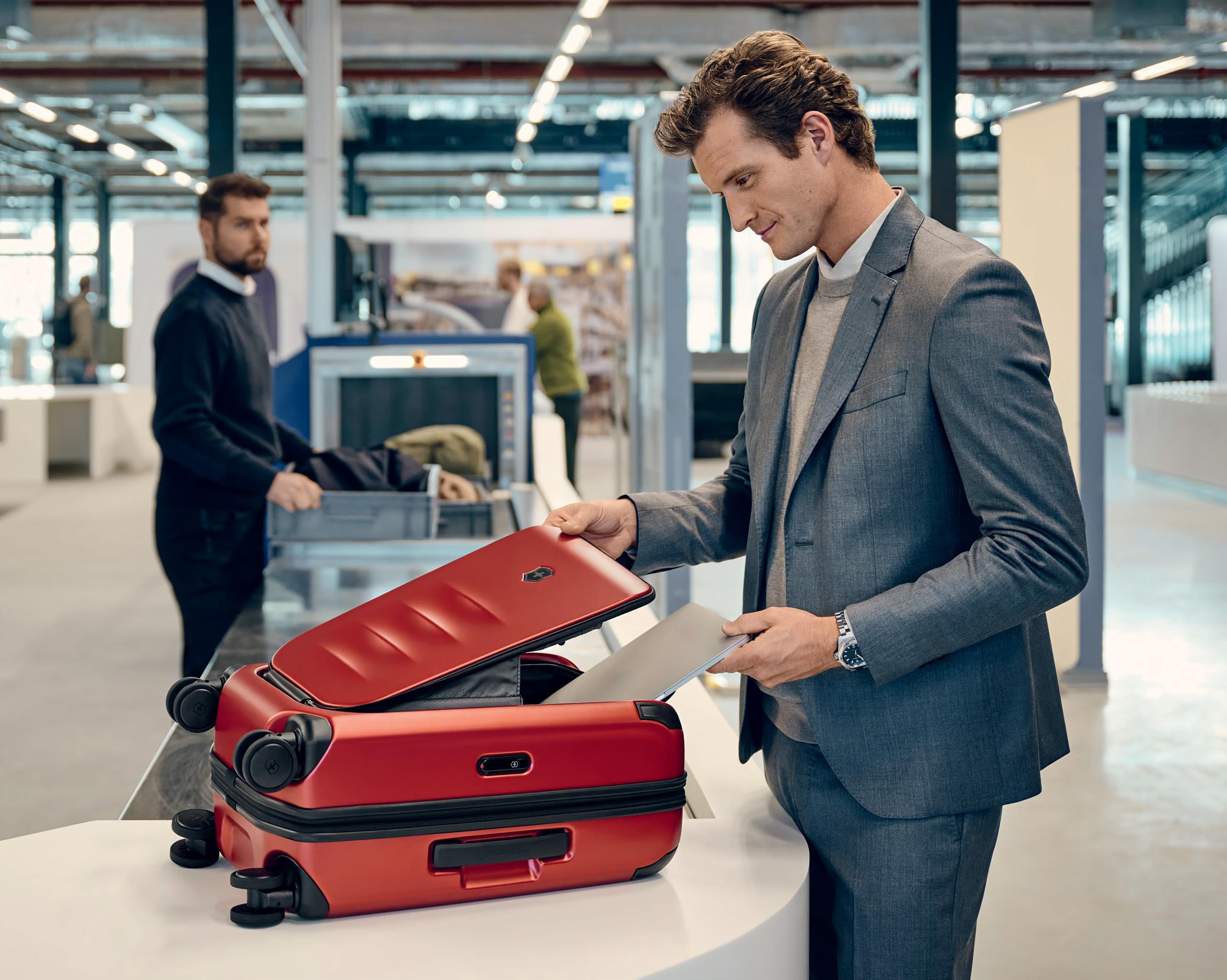

















































































Our Spectra 3.0. Durable and stylish Carry-on. Front-opening compartment for priorty access to essentials. The ideal choice.

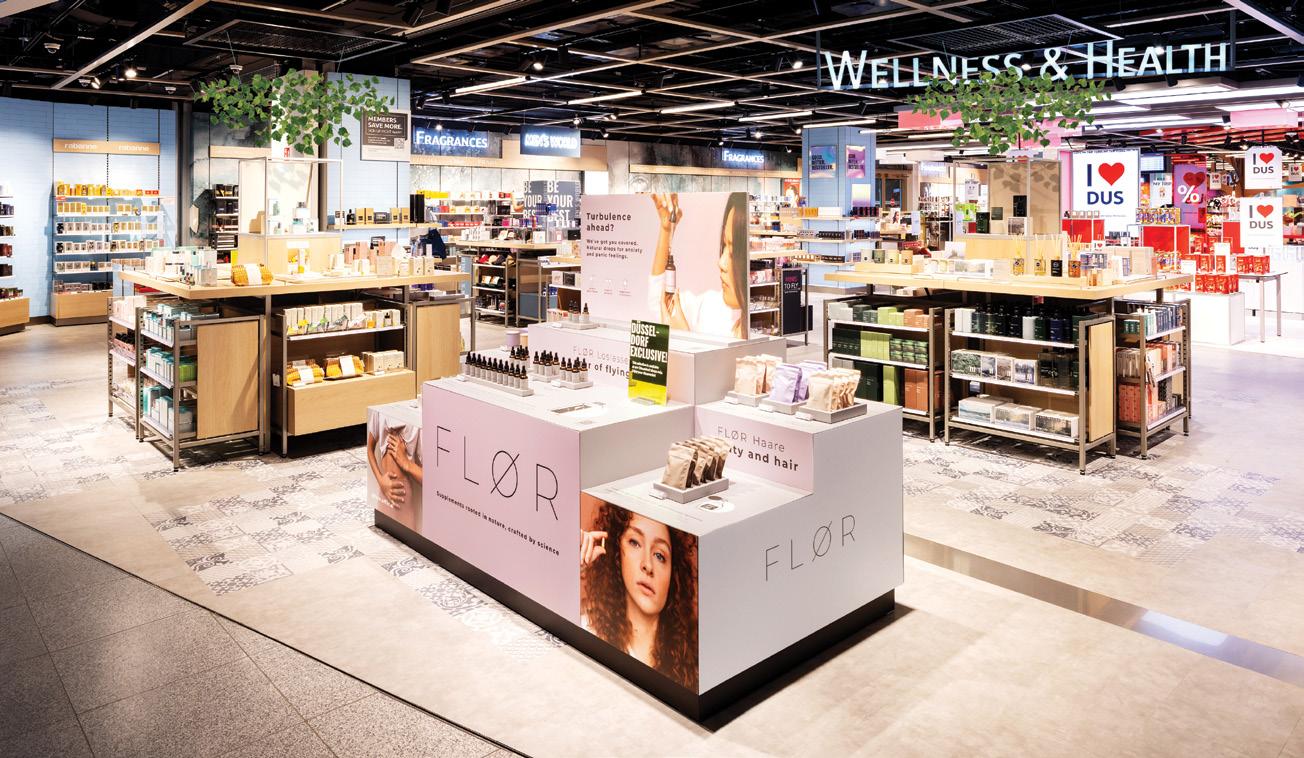
Heinemann’s strategic evolution marks a pivotal shift in product selection philosophy. “We are moving away from broad, democratic assortments toward a more curated and impactdriven strategy,” states Callsen. “Our focus is on luxury products, niche selections, travel retail exclusives and entrylevel options that offer accessibility without compromising on experience.”
The strategy includes innovative formats such as smaller pack sizes and travel retail-exclusive editions that make luxury more attainable for wider audiences. “By simplifying the offer and creating space for innovation, we are seeing stronger consumer engagement and an increase in basket sizes across markets,” notes Callsen.
Category performance data from 2024 reveals the effectiveness of the company’s strategic approach. Beauty achieved 24% growth, Fashion & Accessories increased 28%, and Liquor, Tobacco and Confectionery rose 17%. However, the first half of 2025 has shown that the environment for travel retail remains challenging.
“This has a noticeable impact on overall growth,” says Callsen. “Nevertheless, we continue to actively develop our categories with a strong focus on innovation, relevance and customer experience.”
Callsen notes that Beauty has expanded with the introduction of new concepts, including the expansion of
beauty services and the launch of wellness and health. Niche luxury fragrances are driving category growth while Test & Learn zones showcase trending brands favored by Gen Z consumers, allowing Heinemann to evaluate potential for broader rollouts. Callsen mentions that the company maintains three-year development partnerships with established suppliers including L’Occitane, Puig and Coty.
The Fashion & Accessories category is benefitting from new luxury marketplace implementations. According to Callsen, “We are seeing strong momentum through the implementation of new luxury marketplaces, for example in Antalya with our joint venture partner ATU Duty Free, and in Jeddah,” she says. “Istanbul, with its exceptional luxury marketplace, continues to be a major growth driver. Within FA, subcategories such as Sunglasses and Toys are performing particularly well. We are currently developing a new kids’ concept that includes Toys and other relevant subcategories, and we are continuously enhancing our retail concept for Sunglasses.”
Heinemann is seeing mixed performance indicators in Liquor, Tobacco and Confectionery, though premium tequila is outpacing the broader spirits market. “A highlight is our global exclusive Reserva de la Tequila, developed in partnership with Proximo,” says Callsen. “This demonstrates the impact of exclusivity and the power of collaboration.”
Tobacco is particularly flourishing in Middle East and African markets while next-generation product investments are generating positive returns through specialized airport implementations.
Confectionery faces pressure from elevated cocoa costs, driving focus toward exclusive products and targeted promotional activities. “We are closely monitoring consumer reactions, working to mitigate any potential impact through travel retail exclusives and innovative promotions,” says Callsen.

Heinemann’s enhanced retail concept for Sunglasses reflects strong performance in the Fashion & Accessories subcategory

Changing preferences
Showing 29% growth in several locations in 2024, the success of specialty fragrances reflects changing traveler preferences. “Niche beauty is striking a powerful chord with today’s travelers, who are increasingly seeking individuality, authenticity and exclusivity,” observes Callsen. “Niche fragrances are often only selectively available in domestic and online markets, which makes them especially desirable in the travel retail environment.”
The company has identified this category segment as particularly suited to travel retail’s unique positioning, and is investing accordingly. “We are expanding this segment through dedicated spaces in key locations creating experiences that highlight the uniqueness of these brands,” says Callsen. “Niche fragrances have proven to be a strong growth driver, maintaining both price integrity and sales performance without the need for discounts. In contrast, broader assortments often rely on price
discounts to perform, which is one of the reasons we initiated our global assortment project.”
Sustainability and social responsibility form core elements of Heinemann’s corporate strategy. “In 2024, we made significant progress toward our 2030 goals within all four dimensions of our global sustainability strategy, which are Environment, Social, Governance and Responsible Value Chain,” says Callsen.
By the end of 2024, 70% of Heinemann’s purchasing volume was covered by independent third-party assessments such as EcoVadis and B Corporation certifications. The company has expanded its network of green partnerships to include joint green business plans with Diageo, Tony’s Chocolonely and EssilorLuxottica.
“One tangible example is our exclusive chocolate pack with Tony’s Chocolonely,” Callsen expands. “For every pack sold, we donate €1 to the
Tony’s Chocolonely Foundation, supporting education, healthcare, climate protection and gender equality in cocoa-growing regions.”
Heinemann takes a proactive role in driving supply chain change. Two years ago, the company’s first Sustainability Summit brought together freight forwarders, truck manufacturers and start-ups to develop action plans.
“We have seen a measurable reduction in CO₂ emissions by 28%,” says Callsen. “In September 2025, we hosted a second summit. This time, we invited our key suppliers to align on joint goals in order to secure sustainability along the entire value chain.”
The environment for travel retail remains challenging in 2025. “Geopolitical conflicts, economic uncertainty and evolving regulatory frameworks continue to shape both our operations and consumer behavior,” says Callsen. “In this context, we have to accept that instability is no longer an exception –it is a constant.”
Callsen emphasizes the need for industry cooperation that transcends traditional competitive boundaries. She advocates rethinking contractual frameworks and concession agreements to allow for greater operational flexibility and shared risk management across the industry. “This requires the entire industry to work more closely together, really living collaboration beyond company borders, thereby fostering agility and space for innovation,” she explains.
“But it goes beyond commercial terms; it is also about how we lead and how we work,” she continues. “We are operating in a fundamentally different world, and that calls for new leadership styles and management capabilities. Navigating uncertainty successfully means being adaptable, transparent and forward-looking, qualities that we have taken to heart and that will guide us on our way forward.”
Discover our range, from to a variety of flavors

X-Low

For Trade Only. Not for Distribution to Consumers.
*PMI reported global shipment volumes and in-market sales estimates of nicotine pouch units, from July 2023 to December 2024.
MULTIPLE PODS. RE-USABLE DEVICE.
For Trade Only. Not for Distribution to Consum ers. ONE VAPE HAS IT.



These products are not risk free and provide nicotine, which is addictive Only for use by adults.


Newly appointed MEADFA President Abdeslam Agzoul shares his vision for collaboration, sustainability and growth across the Middle East and Africa
by ATOOSA RYANNE ARFA
Since its founding in 2001, the Middle East and Africa Duty Free Association (MEADFA) has served as an important voice for duty free and travel retail across the Middle East and Africa, bringing together regional players to promote growth and collaboration.
Now, newly appointed MEADFA President Abdeslam Agzoul leads the charge through a time of shifting market dynamics and evolving traveler expectations. With more than 20 years of experience in travel retail and hospitality, including senior roles across Europe, the
Middle East and Africa, Agzoul plans to expand MEADFA’s membership, raise the region’s profile internationally and make ESG an industry priority. Speaking with Global Travel Retail Magazine (GTR Magazine) ahead of the TFWA World Conference and Exhibition in Cannes, Agzoul outlines his vision to strengthen collaboration, bridge global and local priorities and drive sustainable growth across the region.
GTR Magazine: Congratulations on your appointment as President of MEADFA! Can you share a bit about your profes-

Abdeslam Agzoul brings over 20 years of experience in travel retail and hospitality
sional journey in travel retail and what drew you to this industry?
Agzoul: Thank you very much. I feel truly honored to serve MEADFA in the position of Chairman. I began working in travel retail and hospitality over 20 years ago in Barcelona, starting in a
business controlling role with the Areas Group. Since then, I’ve had the opportunity to take on various roles across different companies and countries. I first joined Avolta in 2006 and remained until 2016, before returning in 2023 as CEO for the Middle East and Africa.
What has always drawn me to this industry is the spirit of travel itself –particularly the discovery of cultures and the rich histories of different regions. Travel retail is a unique window to the world, constantly evolving and offering new perspectives through the diversity of our customers.
GTR Magazine: As you begin your new term, what are your main goals for MEADFA and how do you envision working to achieve them?
Agzoul: Over the next two years, I plan to focus on a few priorities. One is strengthening our organization by
attracting more members (especially larger players) and providing meaningful support to all members, with a particular focus on small and independent operators. Another is establishing a strong and unified position at the upcoming MOP4 gathering to ensure our industry is recognized as clean, transparent and collaborative. I also plan to elevate ESG as a central pillar of our industry by implementing the ESG charter and ensuring that Africa is given the visibility and recognition it deserves within the global travel retail landscape.
To achieve these goals, reinforcing the role of the MEADFA Board and empowering our technical committees – the backbone of MEADFA – will be essential. Increasing engagement with key stakeholders and partners, including industry associations, landlords and regulatory bodies such as ACI and Customs authorities will also be a priority. We will also need to improve
communication with our members to ensure alignment, transparency and shared progress.
GTR Magazine: You’re taking on this role at a time of rapid change. What are the most pressing priorities you believe MEADFA must address first and how do you plan to ensure member markets across the Middle East and Africa feel heard and supported?
Agzoul: One of our top priorities is to understand the latest trends in travel retail and the evolving expectations of new generations. In our region, this is especially relevant. Gen Z and Millennials are projected to represent over 70% of global travelers by 2040, and their behaviors and values are reshaping the industry.
We must also embrace technology and data as key drivers of business transformation. Leveraging insights and

japan’s nature
digital tools will be essential to staying competitive and relevant. We also want to bridge the gap between global and local. This means helping local operators become more globally connected, while encouraging international players to adapt more locally. This dual approach will strengthen the ecosystem across our diverse markets.
To ensure our members feel heard and supported, we plan to reinforce our communications through multiple channels, including our newsletter, regular town halls and of course, our annual conference. We will also facilitate access to insights and studies that help members make informed decisions and stay ahead of trends. Last but not least, we plan to encourage deeper interaction within the community – between vendors and operators, and among peers – so that MEADFA becomes a true platform for collaboration and shared growth.
GTR Magazine: Given the diverse market dynamics across the Middle East and Africa, what do you see as the key similarities and differences within the region?
Agzoul: Despite their diversity, the Middle East and Africa share several important similarities. They both are massively investing in connectivity, particularly in air transport. Both regions are developing airport infrastructure, strengthening national carriers and building ecosystems around airports. They are also working to improve mobility through supportive laws and regulations. Both regions also have young, mobile populations with strong aspirations for connectivity and travel and have held resilience in the face of geopolitical challenges. Over the past decade, both regions have demonstrated remarkable adaptability and strength. These shared traits create a strong foundation for growth.










GTR Magazine: How do these shared traits shape the main opportunities and challenges for businesses operating in the region?
Agzoul: I see three major opportunity areas in particular.
One is geography. Africa’s vast landscape demands improved mobility and infrastructure, and air travel is often the only viable solution. Similarly, in the Middle East, air travel remains the safest
and most efficient mode of transport. The region’s strategic location as a bridge between East and West further reinforces its role as a global travel hub.
Another is demographics. Personal and family ties drive travel across both regions. With a predominantly young population, the potential for growth in air traffic is enormous. In Africa alone, over 95% of the population has never flown – representing a future market of 1.3 billion potential travelers.
Then there is growth potential. We are already witnessing the rise of a strong middle class in the Middle East. This trend is expected to continue, bringing increased demand for travel and retail experiences.
These dynamics present both opportunities and challenges. Businesses must adapt to local realities while leveraging regional strengths. The key will be to remain agile, inclusive and forwardlooking.
GTR Magazine: In what ways can MEADFA evolve its strategies to better foster collaboration, advance sustainability and drive meaningful outcomes across the region?
Agzoul: To move forward meaningfully, MEADFA must continue to strengthen collaboration with key stakeholders, particularly airports and landlords. We also need to work more closely with regulators to promote greater transparency and facilitate travel through improved visa policies, exchange controls and passenger allowances.
At the same time, we must never lose sight of the customer. Customercentricity should remain at the heart of every initiative, both within the industry and within MEADFA’s role as a catalyst and facilitator.
MEADFA’s various forums, and especially our annual conference, provide a vital platform for dialogue and alignment among stakeholders across the region.
I also want to pay special tribute to the efforts of the ESG Committee, under the leadership of Dr. Munif Mohammed. MEADFA has been a pioneer in sustainability, launching this journey years ago and achieving significant milestones. Importantly, we’ve succeeded in tailoring our ESG initiatives to reflect the unique needs and realities of our region, ensuring that sustainability is not just a global trend, but a locally relevant commitment.






by ATOOSA RYANNE ARFA

Nuno Amaral has returned to Bahrain to lead ARI Middle East (ARIME) as the company celebrates its 35th anniversary, a milestone in the region’s travel retail landscape. With decades of experience overseeing ARI’s global operations, Amaral is focused on driving passengercentric strategies, operational excellence and technology-led innovation across ARIME’s portfolio. Speaking with Global Travel Retail Magazine (GTR Magazine), he shares insights on catering to diverse passenger demographics, expanding the business footprint and delivering on ESG commitments.
Returning to ARI Middle East as CEO during its 35th anniversary, Nuno Amaral outlines his vision for operational excellence, passengercentric strategies and strategic expansion across the region, while continuing his global role as ARI’s Chief Operations Officer
GTR Magazine: First of all, congratulations on your new role! What excites you most about returning to lead ARI in the Middle East?
Amaral: I’m delighted to be back in Bahrain as CEO of ARI Middle East! I maintain my responsibilities as Global Chief Operations Officer with ARI, so I am still very involved in operations across the global portfolio, but the Middle East has always been a special and exciting region for me.
I’m happy to say that business is thriving. TRSS Abu Dhabi Duty Free is the most recent addition to our portfolio and has continued to raise the bar when it comes to the global travel retail experience since opening its doors in 2023. Also, 2025 marks the 35th anniversary of ARIME. We remain the largest multi-site operator in the region – it’s a big milestone for us and something we are incredibly proud of.
GTR Magazine: What are some lessons learned from your earlier tenure that you believe will be most valuable today, especially considering the changes the travel retail industry has undergone?
Amaral: We must always put the passenger at the heart of what we do. The Middle East, just like every other region, has a diverse passenger demographic. It’s essential that we have an in-depth understanding of passengers across each of our locations and adapt our offering accordingly.
We adopt a bespoke approach across our locations, from product assortment to unique store identities and sense of place experience. Passengers expect that more than ever – the cookie cutter approach is not an option.
It has been fantastic to see Abu Dhabi delivering on the promises of the original tender. We were awarded the business during my first tenure in the


Middle East so it’s great to be back and to see this vision realized.
GTR Magazine: What's the biggest challenge you see for travel retail in the Middle East right now?
Amaral: It has been a turbulent time across the region with ongoing geopolitical conflicts. Despite that, travel has remained steady. We have operated in the region for the past 35 years, so we are confident in its resilience.
There have been great improvements in the retail offer from Indian subcontinent duty free operators. Passengers from these regions are an important demographic in the Middle East, so we must continue to raise the bar with our offering and keep this passenger base engaged.
GTR Magazine: What are your immediate strategic priorities for ARIME, and how will these align with ARI’s global vision?
Amaral: Our business objective has always been to retain and maximize current operations and grow with the right opportunities. We have excellent partnerships in the region and have negotiated a number of contract extensions in the past year. We’re keen to expand our footprint and maintain the leading position that we have established over these past 35 years.
We are also working closely with our business units to deliver on the 2030 commitments set out in our recently relaunched ESG strategy, Journey with Purpose. Each business is at a different stage in their ESG journey, but we have set some ambitious targets and we’re excited to work together towards achieving them.
GTR Magazine: What are your main objectives for driving operational excellence? Are there specific countries where you see the greatest opportunity for improvement?
Amaral: We’re committed to deliver-
ing joy to passengers across each of our locations, and our Customer Value Proposition gives us the strategic framework to do this. It outlines the non-negotiables of our retail operations, from best-in-class customer service to sense of place to improving convenience. These are the building blocks to delivering an exceptional retail experience.
Our Future Customer Initiative identified a number of opportunity spaces for our business, meaning we can pinpoint the best areas of growth for each of our locations and best cater to passenger demographics. We always focus on retail standards and operational excellence. As part of this, we will be strengthening the team in the ARIME Bahrain office. They will work closely with each of our business units to continue to elevate the passenger experience.
GTR Magazine: What role do you see technology playing in enhancing the customer experience and driving growth?

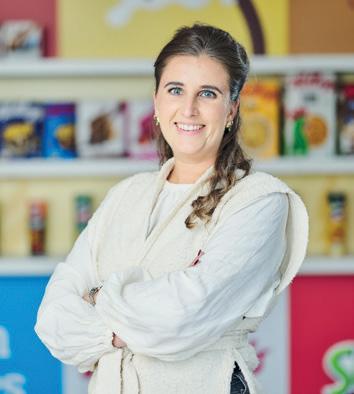



Amaral: We see opportunities to expand our online retail capabilities through our ecommerce platforms and drive convenient solutions for passengers, such as click and collect or home delivery services. Social media plays an important role in ensuring relevance and communicating with the passenger pre-travel. Our teams do a great job engaging passengers across key platforms like Instagram and TikTok.
ARI is working on a new AI Center of Excellence, which will embed AI capabilities across our business. I’m excited for this journey to see how we can optimize our day-to-day functions, drive efficiencies and increase our agility as a business.
GTR Magazine: How will ARIME adapt its strategies to cater to the unique consumer preferences and market dynamics within different countries in the Middle East region?
Amaral: Each of our locations has a unique identity and bespoke offering tailored to its specific passenger demo-
graphic. We have been able to get even more granular with our segmentation and strategy following our Future Customer Initiative project. This involved a recalibration of our Customer Segmentation Model, which is now more intuitive and can be better utilized across all areas of the business to really tailor our offering.
GTR Magazine: What initiatives do you plan to implement to foster a strong team at ARIME?
Amaral: I’m excited to strengthen an already brilliant team and build an even more capable support function here at ARIME’s base in Bahrain to drive continued growth. People are the heart of our business and we will continue to foster a culture of inclusivity, diversity and excellence. Our brand behaviors and our people values are embedded in everything we do and our teams live these every day. It’s important that our teams feel valued, empowered, and love what they do. That’s the only way that we can deliver joy to the passenger.
GTR Magazine: Looking ahead, what are the biggest opportunities and challenges you foresee in the next 3-5 years?
Amaral: The market is increasingly competitive, with ongoing business consolidation and new players entering the market. It challenges us all to raise the bar in what we do and continuously elevate our offering.
Value and perception is important in travel retail – not simply price alone, but the overall experience. With fluctuations in macro-economic uncertainty, this will greatly impact whether a passenger decides to make a purchase in travel retail.
We continue to engage our brand partners to leverage the travel retail channel, supporting first-to-market launches and airport exclusives. Leaning on this partnership not only provides a captive audience to brands, but also keeps the offering new and exciting for passengers, creating compelling reasons to shop on their journey.



Beaute Luxe transforms from African distribution specialist to integrated travel retail operator with direct airport stores in India and a flagship perfumery in Kathmandu, Nepal, managing the entire beauty value chain from brand sourcing to customer experience
by HIBAH NOOR
Beaute Luxe has moved beyond its role as leading selective beauty distributor in Africa and India to control the entire travel retail value chain. The group now manages everything from brand sourcing to direct customer sales across more than 260 points of sale.
The transformation spans multiple operational areas. Beaute Luxe has secured new brand partnerships with Sol de Janeiro, Lalique, Superdry, Elie Saab and Chopard, expanding a portfolio that already includes Yves Saint Laurent, Jean Paul Gaultier and Hermès. The company handles complex logistics and product delivery across African and Indian markets where infrastructure challenges demand specialized solutions.
“With these strategic openings, Beaute Luxe is no longer just an intermediary; we are becoming a global player, able to guarantee both our partners and end customers perfect consistency between selection, availabil-
ity and experience,” says David Dayan, CEO of Beaute Luxe.
Beyond distribution, Beaute Luxe provides selective retail partnerships with airports and retail partners through customized furniture design, its own in-house training program and premium promotional activities. Thanks to its 15 boutiques in Indian airports — including Goa, Kolkata and New Delhi — Beaute Luxe has created a dedicated internal academy to shape its staff with the unique “Beaute Luxe touch.” This ensures that teams deliver a premium customer experience and promote the company’s portfolio of brands at the highest standards.
“Our partnership in India with Beauty Concepts, led by Rajiv Bahety, has been a real success,” Dayan says. “Our perfumeries have far exceeded expectations in terms of revenue and footfall.”
The company’s vertical integration

creates a complete operation with over 45 prestigious brands, managing every stage from assortment design to pointof-sale customer experience.
“The Kathmandu flagship store embodies this ambition,” Dayan expands. “Dedicated to premium and high-end fragrances, it offers an international showcase in a rapidly growing tourist destination. As for the proprietary airport boutiques, they mark a new era for Beaute Luxe: that of a distributor becoming a retailer, ensuring brands premium visibility while strengthening control over the customer relationship.”
The approach targets emerging markets, where Beaute Luxe is able to apply its understanding of both local consumer preferences and operational challenges. Present across more than 42 countries, with direct retail operations backing its distribution network, Beaute Luxe is expanding its travel retail presence in Africa and India.
The company’s plans are far from complete. Dayan plans to replicate this integrated model in other high-potential markets, making international beauty accessible while maintaining luxury retail standards in Africa.

Smoking seriously harms you and others around you
APTRA Executive Director,

Sunil Tuli, President of Asia Pacific Travel Retail Association (APTRA) and Group Chief Executive, King Power Group (Hong Kong) shares his insight on the association’s current priorities across 45+ distinctly different markets
by SUNIL TULI
Asia Pacific is the long-term engine of travel retail, driven by new industries, surging youth populations and emerging market powerhouses including India, China and Indonesia. The region constitutes a huge proportion of the Global South and plays an increasingly significant role in shaping global politics, trading patterns and alliances. This is excellent news for travel retail’s future, despite current industry challenges.
In India, the world’s fastest-growing market, travel retail is being seen for its pivotal role in aviation, earning a growing reputation for its non-aeronautical contribution to infrastructure growth. This creates highly attractive opportunities for investors and brands across categories, though successful navigation requires significant insights.
APTRA’s series of India conferences,
the third of which is scheduled in Bangalore, 25-27 March 2026, is designed with that in mind. We provide timely market intelligence spanning aviation, travel retail and the domestic market consumer landscape, enhanced with research from partners including Voiceback Analytics, m1nd-set, credit card companies and consulting firms such as YCP Auctus.
APTRA is on a mission to help the industry grow in this burgeoning yet complex market. We work closely with operators and brands to influence policy at federal and state level including, for example, arrivals allowances. Since early 2024, we have significantly increased the profile and reputation of travel retail in India, influencing and informing government and the investment community and, in so doing, we are contributing to future market opportunities for brands and operators.
Beyond India, we actively engage on
several regional policy issues to protect and defend travel retail’s reputation and commercial interests, ensuring policymakers understand its unique dynamics and GDP contribution. We’re also developing slow-moving, long-term advocacy strategies to expand the industry. These efforts require significant investment and careful navigation across a region of diverse cultures.
A current priority is working with the Duty Free World Council and other regional associations to defend the reputation of the travel retail tobacco market ahead of the fourth Meeting of the Parties (MOP4) for the World Health Organization’s (WHO) Illicit Trade Protocol (ITP) in Geneva, 24-26 November.
I will be attending TFWA in Cannes together with Anne Kavanagh, APTRA’s Executive Director. We look forward to meeting with community members and welcome anyone keen to leverage the benefits of APTRA to grow their business.
APTRA’s next conference is the APTRA North East Asia Forum in Hong Kong, 3-5 December 2025. Looking ahead to 2026, we are planning additional targeted events, research and insights to bring continued added value to our members.





The Beauty&You concept in Hong Kong provides an interactive beauty experience with hands-on product testing, expert consultations and curated brand activations
The Shilla Duty Free has been seeing encouraging signs of recovery, with revenues climbing and passenger demand strengthening across its key travel markets. The company is investing in experiences, loyalty and sustainability to secure long-term growth amid shifting dynamics
Hotel Shilla, parent company of The Shilla Duty Free, reported in its second-quarter results that the travel retail division grew sales by +2.1% year-on-year to US$614.9 million, highlighting strong performance in this area. Airport duty free revenues led the way, rising +6.4% in line with growing passenger levels. This growth partly offset a −3.2% decline in downtown duty free sales, where recovery has been more gradual.
Despite topline growth, the business posted an operating loss of US$8.2 million, compared to a US$5.1 million profit recorded in the same period last year. Negotiations are also ongoing with Incheon International Airport over rental fees, as The Shilla and fellow retailer Shinsegae Duty Free seek fairer terms in light of mounting costs.
“While Korea duty free is recovering
by ATOOSA RYANNE ARFA
toward pre-pandemic levels following the endemic transition, the recovery pace remains sluggish due to reduced purchasing power resulting from the global economic downturn and shifts in tourism trends from shopping to experiences,” a representative from The Shilla notes.
Even so, the company sees strong reasons for optimism. Passenger numbers are climbing, and policies such as the temporary visa waiver for Chinese group tourists create opportunities to stimulate spending. “We expect business conditions to improve gradually,” the spokesperson adds. “We plan to continue efforts to enhance performance by strengthening targeted marketing aligned with changing tourism trends and customer needs, as well as reinforcing product capabilities that lead consumption trends.”
Today’s customers respond to elevated experiences that create a sense of place and occasion. In response, The Shilla Duty Free has launched a series of strategic activations designed to capture new segments and drive engagement. Our ultimate goal is to deliver a differentiated duty free shopping experience,” states a representative, emphasizing the importance of these investments in setting the company apart from its competitors.
At Singapore Changi Airport, The Shilla partnered with Penhaligon’s on a “sense of place” animation inspired by the city’s lion emblem, offering travelers an airport-exclusive tote bag as a gift with purchase. The “Make Travel Magical with Shilla” campaign brought Disney’s Mickey Mouse and Friends to the airport, giving travelers a “Catch &


The Shilla Duty Free launched an exclusive Hennessy Paradis x Loewe collaboration, combining luxury spirits with high-end fashion, delivering an immersive, premium retail experience
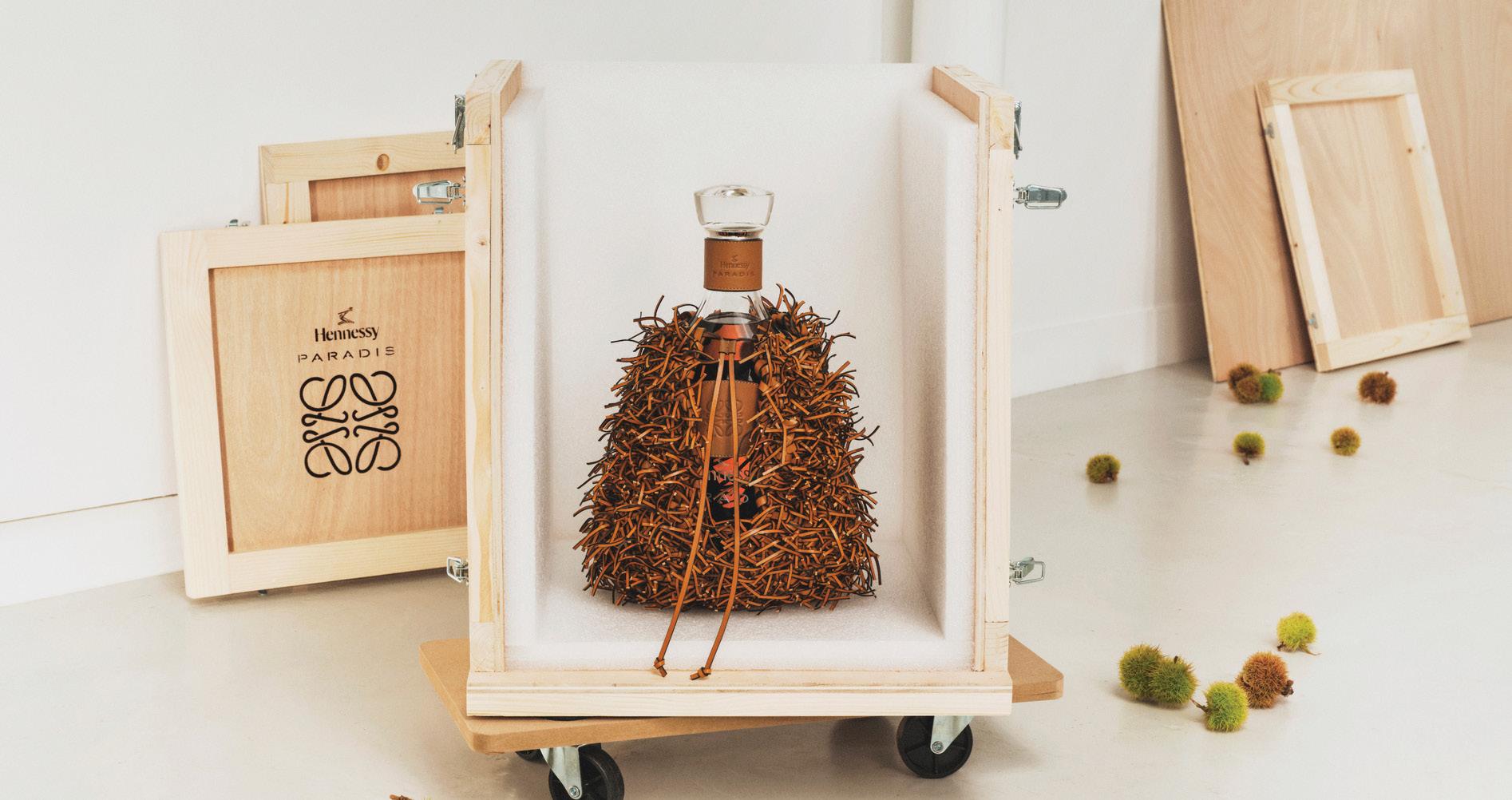
Win” game, themed photo spots and limited-edition Disney gifts with qualifying purchases. Permanent concepts such as the Beauty&You store in Hong Kong and exclusive collaborations such as Hennessy Paradis x Loewe further demonstrate the company’s commitment to deliver memorable, immersive retail experiences.
The Shilla Duty Free continuously introduces new products aligned with evolving customer needs and trends, “Securing profitability remains a critical priority, and we will continue our ongoing efforts to enhance profitability across multiple areas,” states The Shilla Duty Free’s representative. They will also maintain their sales activities to develop new revenue channels.
The Shilla also links profitability to loyalty and sustainability, using both as foundations for a resilient business model.
The S.Rewards membership program exemplifies this strategy. Customers earn up to 0.5% of purchases as Rewards
Points, redeemable like cash, while seven membership tiers, from Bronze to Black Prestige, deliver perks such as lounge access, priority pickup and discounts with partners including Expedia, My Real Trip, SSF SHOP and Yellow Balloon. This multi-tiered approach strengthens customer retention and builds long-term value for the company.
Parallel to these efforts, Hotel Shilla has intensified its ESG initiatives. “We have officially declared our commitment to ESG management and established an ESG Committee to ensure systematic
implementation of ESG practices,” the spokesperson says.
The ESG strategy rests on four pillars: Sustainable Shilla (healthy growth), With the Shilla (collective advancement), In the Shilla (employee well-being), and The Green, The Shilla (environmental commitment). By embedding these values in governance and communication, The Shilla Duty Free maximizes corporate value while appealing to an increasingly conscious consumer base, proving that purpose and profitability can thrive together.



From immersive lounges and gardens to fitness zones, airports are transforming flights and layovers into opportunities for relaxation, renewal and rejuvenation
by ATOOSA RYANNE ARFA
Air travel often leaves passengers drained by long lines, flight delays and the constant buzz of terminal traffic. In response, leading airports are turning transit time into opportunities for wellness. Singapore's Changi Airport (SIN), Japan's Kansai International Airport (KIX) and Hong Kong International Airport (HKG) recognize the toll of long journeys on mind and body. Traveler wellbeing stands as a strategic priority, with a holistic approach that addresses physical, mental and nutritional needs.
Cafe Lounge NODOKA, located landside at KIX and open to all visitors, features café seating, private rooms and an artificial lawn with tents and hammocks that evoke a mountain retreat. Guests can sip free drinks, browse books, listen to music or nap on bead cushions, while snacks, alcoholic beverages, newspapers, magazines, Wi-Fi and seven showers add comfort.
In March, KIX introduced two new lounges as part of Terminal 1’s renovation. “These lounges were designed not only to enhance passenger conve-
nience but also to elevate the relaxation experience for international travelers,” says Fumio Owada, Corporate Executive Vice President (CCO-Non Aeronautical). KIX Lounge Kansai, which celebrates the region’s cultural hospitality, spans 2,970 square meters with 658 seats and offers massage chairs, showers, private and family rooms, as well as quiet areas for calls or online meetings. KIX Lounge Premium, at 800 square meters with 143 seats, emphasizes calm with a wind-inspired theme. It provides massage chairs, showers, private rooms, a manned bar and made-to-order meals. Wellness at KIX extends to sustainability. Through the Fry to Fly Project, airport restaurants recycle waste oil into Sustainable Aviation Fuel (SAF), an initiative led by JGC Holdings, Japan Airlines and Kansai Airports to power planes with domestically produced SAF.









The international area also reflects four moods – Fun, Peaceful, Active and Curious – with the Peaceful zone dedicated to nature and calm. The central plaza offers a free relaxation area, while the final phase of Terminal 1’s renovation, opening next summer, will expand wellness-focused retail and dining options.
“These facilities are particularly beneficial for customers who are tired from long flights and transits, as well as for a variety of health-conscious customers,” Owada shares.
“Changi Airport has tapped into the power of human senses, incorporating subtle design elements to ensure every traveler enjoys a calm, seamless and memorable journey,” says a Changi representative.
Scent and sound play a central role in creating a welcoming, calm atmosphere. Across its four terminals, the airport diffuses its signature Orchid Tea fragrance – a blend of orchid, rose, ylang-ylang
and spices – while carpeted floors soften noise. The “Quiet Terminal Initiative,” launched in 2018, removed boarding announcements to maintain a tranquil atmosphere.
Design choices amplify the calming effect. Terminal 2’s 2023 expansion includes immersive features such as the Wonderfall, a 14-meter digital waterfall, and Dreamscape, a garden with a real-time digital sky. “Immersive digital installations provide a refreshing escape from typical stresses of air travel,” the representative explains.
With more than 600,000 plants, Changi houses some of the world’s most extensive airport gardens. “These vibrant green spaces not only reinvigorate weary travelers, but also elevate the airport's visual appeal,” the spokesperson adds.
Activity is equally important. The Fit&Fun Zone at Terminal 2 offers interactive play areas, trampoline pods and pendulum chairs to relieve fatigue. At Jewel Changi Airport, travelers can join yoga, barre and pilates classes at
the Minmed Wellness Collective, cycle past the Rain Vortex or take a 3.5km ride to Jurassic Mile, home to life-sized dinosaurs. Fitness enthusiasts can scale Climb@T3’s 12-meter bouldering wall or book private Gym Pods.
Food rounds out the wellness experience. “Changi Airport recognizes that eating well plays a vital role in supporting travelers’ overall wellbeing,” says its representative. Dining options range from plant-based meals at Greendot Plus to collagen-rich broths at Beauty in The Pot, with menus curated for fresh, energizing nutrition.
Recharge, refresh, restore
At Hong Kong International Airport managed by the Airport Authority Hong Kong, free themed zones near boarding gates provide passengers with dedicated spaces for wellness. The Recharge Zone provides reclining chairs amid greenery while the Wonder Zone immerses travelers in movies, virtual reality and games. At the Arrivals Hall, the digital Waterfall Gardens surround
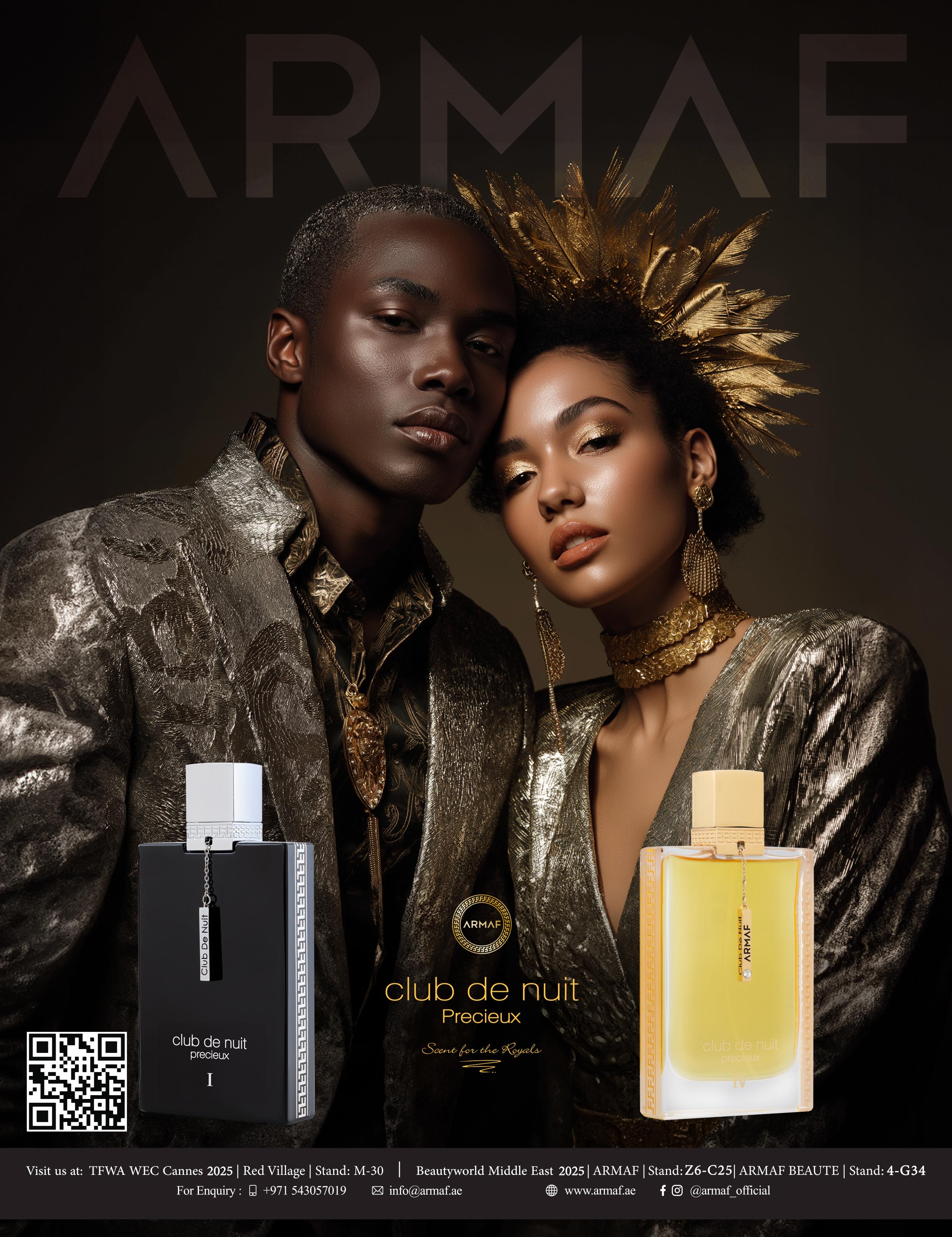

visitors with nature-inspired sights and sounds.
Within the restricted area, the Oriental Massage Center provides premium massages, while a new French spa, opening by the end of 2025, will offer hair, nail and facial services alongside exclusive treatments. “The new spa employs the concept of 'Journey to the Sky' by blending Hong Kong's famous skyline and world-class natural landscapes,” says Alby Tsang, Director, Retail & Property Development of Airport
Authority Hong Kong. The spa will also feature a signature “Shiatsu” massage area, private suites, a nap station and an experience room.
Sportswear brands such as Lululemon and Decathlon, sustainable food and souvenir selections from trendy Hong Kong brand Slowood, and food options ranging from salads and juices to herbal and halal dishes also support a variety of wellness needs.
HKIA prioritizes sustainability through initiatives such as the Weather
FACTS predictive cooling system and green design features, including floorto-ceiling windows and lightweight canopies. Weather FACTS automatically collects hourly data such as temperature, humidity, cloud amount, wind direction, solar radiation and more to build a big data model that forecasts cooling demand over 24 hours. The system pre-adjusts the chiller to deliver the appropriate cooling volume, maintaining passenger comfort while optimizing energy efficiency.


Over 40,000 sq. metres of spectacular shopping. Thousands of limited editions and travel exclusives. Hundreds of the world’s most desirable brands. But only one glorious destination: Dubai Duty Free.
A look at the

Considering the popularity of President Milei and the removal of currency controls in Argentina earlier this year, the country is set to experience continued economic growth and inspire political courage beyond its borders
by LAURA SHIRK
Contrary to the coverage of opposition media, in the hands of President Javier Milei and his libertarian model, Argentina is showing clear signs of recovery and seeing a historic change in macroeconomic indicators. This follows years of stagnation, uncontrolled inflation and structural imbalances. As published by Argentinian-based digital news outlet La Derecha Diario, according to data from the National Institute of Statistics and Cenuses, the country’s GDP (gross domestic product) increased by 5.8% year-on-year in the first quarter of 2025.
“This growth is not an isolated phenomenon, but part of a consistent pattern that spans various areas of the real economy. Private consumption, the main driver of domestic demand, increased by a remarkable 11.6% year-
on-year in the same period. Even more noteworthy is the growth in investment, measured as gross fixed capital formational, which reached an extraordinary 31.8% year-on-year. This level of investment is especially relevant, as it indicates renewed business confidence in the macroeconomic climate and in the sustainability of the structural reforms implemented,” reads the source.
Milei, who took office in December 2023 amid crisis, has proposed an overhaul of Argentina’s fiscal and structural policies and worked to reactivate investment and realign incentives – while rebuilding trust among its people. Displaying a direct leadership style that challenges the status quo and measurable results, “the Milei effect” is now transcending borders.
Given the fact that Argentina’s last
center-right president, President Mauricio Macri, attempted to lead based on a comparable ideology and failed, John Price, Managing Director at Americas Market Intelligence, calls Milei’s experiment interesting. The difference: the popularity of Milei. “He’s in front of a microphone every day talking about concrete achievements made in the last 24 hours…He is constantly reminding people of the progress that’s being made,” says Price. By controlling and driving the narrative, the president keeps people off the street, keeps unions at bay and manages to continue governing despite his party having a very small number of seats in Congress. Price notes as long as President Milei holds the support of 50% of the population than Argentina’s governing bodies and courts will not turn against him.


The removal of currency controls in Argentina earlier this year is also a key differentiating factor. This now allows hedge funds and pension funds to send money into the country’s capital market and buy assets, thereby strengthening its currency, generating investment and giving purchasing power to the average Argentine. According to Price, this applies not only to extractive sectors such as mining, oil, gas and agriculture, but also to the retail economy which has been under invested in for over a decade. Price expresses, “We’re seeing investments in new stores and investments in the service economy, and this is the gamechanger that everyone [has been] waiting for in Argentina.”
Speaking about the effect of Argentina’s evolution abroad, Price says, while Milei’s policies will have an impact on other countries in the region, he doesn’t expect to see Libertarian parties necessarily winning elsewhere. “[As a political concept, it’s still underdeveloped, but it will be hard for the next government in Chile, Colombia or Ecuador to ignore what’s going on in Argentina. They will see the success there, then they will have the political courage to make the dramatic cuts that have been a big part of Milei’s turnaround.]”

According to m1nd-set data, 257 million international flights are forecasted in 2025 across Latin America, reaching 119% recovery versus 2019. Discussing contributing factors, Enrique Urioste, President & CEO, Latin America & Caribbean, Avolta, believes this figure reflects broader shifts that have emerged post-pandemic including the rise of bleisure travel and the change in work-life balance mindset among younger generations. “These changes in mindset and flexibility are helping drive the resurgence in international travel. At this stage, we don’t anticipate significant impact on these forecasts from current geopolitical tensions, however we continue to monitor the situation closely,” he shares.
On the Trump administration’s travel ban leading to the halting of tourism traffic flow of legal residents to Latin America and the Caribbean, Urioste expresses as with many other disruptions, the retailer can expect this situation to normalize over time. “The benefit of our business model is our scale, which gives us resilience: travelers continue to travel, and while disruptions may disrupt, we continue to see that travelers simply adapt their travel to a different location,” he notes.
According to the Urioste, Latin America’s travel sector has strong long-term potential, especially if political and economic stability continues. With rising demand in markets like Brazil, Argentina and the Caribbean, the region is well-positioned for sustained growth. He says, “We are ready to meet the needs of the travelers to Latin America, and together with our partners, continue to work to make a travel experience revolution come to life.”
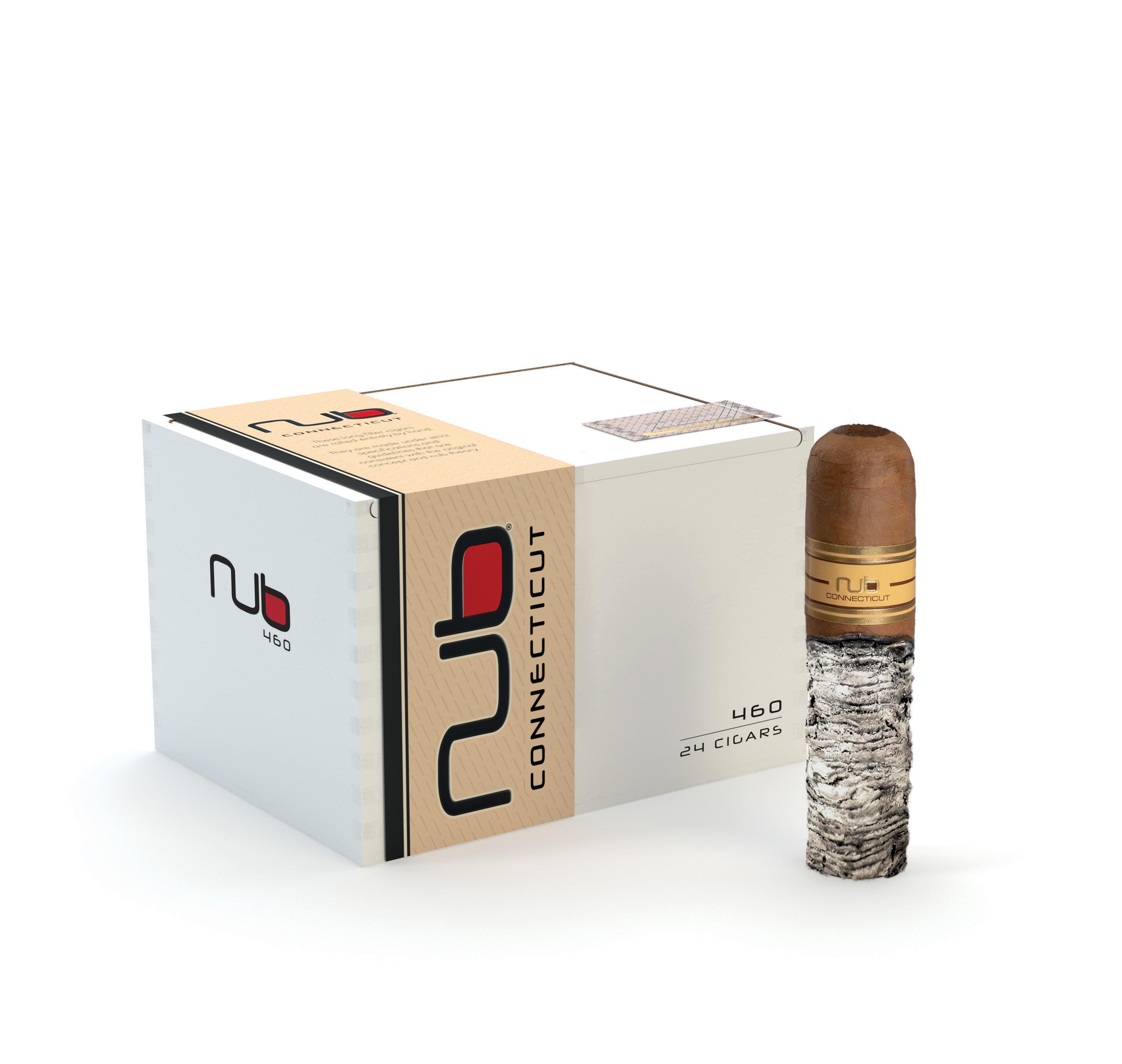

Duty Free Americas Uruguay & Panda Shop CEO Andres Mendelsohn says because of the company’s ability to adapt to changing consumer preferences, categories like perfumes, cosmetics, electronics, beverages and groceries have delivered particularly strong results
With retailers increasing investment in the sector, GTR Magazine examines the current state of the border retail market in Latin America. Experts discuss growth opportunities, new initiatives and digital innovation
by LAURA SHIRK
In August, Avolta opened its second Brazilian border store at the Catuaí Palladium Shopping Center in Foz do Iguaçu, Brazil, underlining its commitment to advancing border retail in Brazil – and the region. At 1,000 square meters, the store offers all key duty free categories and delivers a premium sensory and seamless experience. The unveiling took place shortly after the retailer opened its duty free location at the international bridge connecting Fray Bentos, Uruguay, and Gualeguaychú, Argentina, and marks Avolta’s third non-airport store in Latin America.
Speaking about the current state of the border retail market in Latin America, Rafael Parodi, Business Development Director at Siñeriz, explains the market is active, especially along Brazil’s borders with Argentina and Paraguay, and to a lesser degree with the more mature market of Uruguay. He recognizes growth opportunities in the market require a sense of creativity and stem from offering innovative experi-
ences, tailored assortments and quality service.
Andres Mendelsohn, CEO, Duty Free Americas Uruguay & Panda Free Shop, remarks, “As we continue to navigate an evolving global retail landscape, the border retail market in Uruguay has shown sustained growth, driven by strategic product diversification and an unwavering focus on the customer experience.” Mendelsohn notes because of the company’s ability to adapt to changing consumer preferences, categories like Perfumes, Cosmetics, Electronics, Beverages and Groceries have delivered particularly strong results.
“At Duty Free Americas Uruguay, we are deeply committed to curating a distinct product mix that balances aspirational and exclusive brands. This approach has resonated with our clientele and remains central to our commercial strategy. By continuously evolving our offering, we’ve achieved notable success in meeting the expectations of
today’s increasingly discerning consumers,” he shares.
Although fluctuations in exchange rates and regional price disparities do present occasional challenges, Mendelsohn says these are often short-lived and the rise in cross-border tourism and consumer mobility has further amplified demand for integrated retail environments. “Our customers continue to prefer border duty free shopping thanks to our compelling value proposition, enhanced by prime locations that offer both convenience and an elevated shopping experience,” he says.
Duty Free Americas Uruguay (DFA Uruguay) Panda É Tudo Complex in Rio Branco demonstrates this evolution. Designed as a comprehensive shopping destination, Panda Free Shop opened in 2018 and has continued to grow in local importance. Consisting of over 10,000
square meters of duty free retail space, with ample parking, it offers a range of amenities including food courts, immigration services, a modern bus terminal, a casino and recreational areas for children.
According to Parodi, what most affects the border retail market in the region is the impact of U.S. policies. This requires complex navigation alongside operational challenges like currency fluctuations, logistic and supply chain issues and customer diversity. Building on the theme of creativity and innovation, Siñeriz has created two new spaces at its 10,000-square-foot flagship store in Rivera, Uruguay: a niche fragrance experience and a wine shop-in-shop. Developed in partnership with Buenos Aires-based fragrance specialists Edition Privee, the first features an olfactory wall aimed at transforming the way items are displayed. Organized by
country and complemented with gourmet foods and home ware items, the second is a redesigned wine selection. Both developments will be introduced in the second half of this year.
As shared by Mendelsohn, the expansion of duty free operations on the Brazilian side of the border presents new competitive dynamics where personalization and agility are more critical than ever before. “Cross-border consumers increasingly seek fast, seamless, and engaging retail experiences.”
To meet the demand for digital transformation, the integration of PIX – a real-time payment system regulated by Brazil’s Central Bank – has been a major success for DFA Uruguay among its Brazilian clientele. The retailer’s partnership with RukiPay, a service which
enables up to 12 installments via mobile app, has also further enhanced flexibility and convenience at the point of sale. Beyond payment, DFA Uruguay is investing heavily in technological training and multi-cultural staff development to ensure quality service across diverse customer segments, as well as the modernization of its supply chain systems to maintain optimal stock levels.
“Looking ahead, Latin America’s border retail sector is poised for accelerated expansion. Tourism growth, digital innovation, and evolving payment solutions are reshaping the industry,” he says. “DFA Uruguay is strategically positioned to lead this transformation. However, success will require continuous investment in differentiated experiences – ones that engage the mobile consumer and deliver the full value of what Duty Free Americas and Panda Free Shop have to offer.”


According to Chief Operating Officer Lara Plaza, London Supply Group survives on tourism, which means it needs to have the right offer all of the time, and be quick on its feet
by LAURA SHIRK
Elaboratng on its motto “To adapt and survive,” Lara Plaza, Chief Operating Officer at London Supply Group, acknowledges that Argentina is a rollercoaster as a place to conduct business, so the family-owned company is accustomed to the ups and downs that align with its constantly changing economy.
“We survive on tourism, which means we need to have the right offer all of the time, and be quick on our feet,” she says. According to Plaza, Latin America is challenging in general, especially considering the current United States administration. “The decision-making [of the United States] affects everyone, the world. So, it’s a very uncertain world to do business and you have to make your own differentiation in order for people to keep choosing you.”
On trend and tight-lipped
On the move to stay ahead of industry trends, the group likes to provide the
latest novelties whether that’s in terms of category development or technology. In July, it teamed up with Lindt to bring Dubai-style chocolate exclusively to Latin America. The product offering was available at its Duty Free Puerto Iguazú store on the border of Brazil. However, Plaza says it is a challenging product to bring to the market because of its short shelf life. Since the lead time to travel to Latin America is long it’s difficult to coordinate the chocolate’s arrival and rollout.
“We’re always looking for new brands to join. For instance, we were the first [duty free company] to have Patrón in Latin America, and we built the brand together. Now, the brand belongs to Bacardi and we’re still partnering and developing the brand in the region. Right now, tequila is super-hot, but when we talk to the suppliers, they always recognize that we were the first ones to open our doors. That is the kind of model we follow,” she explains.

Speaking about its technological advancement, Plaza remains tightlipped on London Supply Group’s plan for implementation, revealing only that there is more to come.
Serving visitors to Iguazú Falls, one of Latin America’s greatest tourist attractions, the group’s Duty Free Puerto Iguazú border store covers around 10, 000 square meters of commercial space and features leading international brands across retail categories.
When it comes to the greatest opportunities for growth in travel and tourism, Plaza points out fortunately the retailer operates in destinations that hold significance among tourists. There has been a steady uptick in visitors year-round. “We are lucky in the fact that people are wanting to visit,” she comments. With the exception of the pandemic, business for the retailer has not stopped growing over the last 10 years.



For cruise lines, luxury elevates margins and reinforces positioning. It is the new standard, reshaping passenger expectations and setting a new frontier for the world’s most prestigious brands
by WENDY MORLEY
Onboard cruise ships, a sophisticated luxury ecosystem has emerged that rivals the world’s premier shopping destinations. This transformation reflects more than changing passenger expectations; it signals cruise retail’s evolution into a legitimate channel for the world’s most prestigious brands.
What began as duty free convenience has evolved into destination shopping. The best cruise retail operations now serve as floating luxury districts, offering experiences that passengers often cannot access on land. For luxury brands, cruise ships represent not just a new channel but a new type of flagship, one that travels the world, reaching affluent consumers in their most receptive moments.
The numbers tell the story. Global cruise passengers reached 34.6 million
in 2024, with projections climbing to 42 million by 2028, according to the Cruise Lines International Association. This captive, affluent audience has caught the attention of luxury retailers worldwide.
The experience economy
Research reveals that 87% of cruise guests say their shipboard purchases are influenced by brand theater, immersive environments that tell a brand’s story through interactive displays, personalized service and carefully crafted atmospheres.
Unlike airport travelers rushing to catch flights, cruise passengers have time. They’re relaxed, in vacation mode, and genuinely interested in discovery. Retailers are capitalizing on this unique dynamic, creating experiences that extend far beyond the ship itself through virtual try-on technology, pre-cruise browsing platforms, and post-voyage



















services that maintain the relationship long after disembarkation.
Industry leaders are also deploying artificial intelligence to enhance both operations and guest experiences. Advanced forecasting systems analyze years of transaction data to optimize inventory, while personalization engines help staff recommend products based on passenger preferences and behavior patterns.
When Avolta unveiled its eight-shop complex aboard Norwegian Cruise Line’s Norwegian Aqua last July, it sent an unmistakable message that cruise retail deserves the same investment and attention as the company’s premier airport locations.
The Aqua collection offers boutiques for Breitling, TAG Heuer and Norqain, fashion houses including Bally and Ralph Lauren, and digital innovations like the Fragrance Finder and Whisky Finder. Avolta has also introduced preowned luxury goods to its cruise retail, tapping into the resale market’s explosive growth while offering passengers access to coveted pieces at sea.
The strategic significance extends beyond individual brands. By creating spaces that rival high-street flagships, Avolta is establishing cruise ships as
legitimate luxury retail destinations rather than convenient but compromised shopping venues.
Heritage and new
Starboard Cruise Services has focused on attracting the most prestigious names in luxury. In July, Starboard announced its long-term partnership with Princess Cruises, beginning with the new Star Princess. Among the highlights is the world’s first at-sea Chanel beauty shop-in-shop, an unmistakable sign that heritage Maisons now view cruise ships as legitimate showcases for their brands.
On Ritz-Carlton’s Luminara superyacht, Starboard’s Cartier, IWC Schaffhausen and Piaget boutiques offer private viewing appointments and in-suite shopping services, creating the intimacy and exclusivity that define luxury retail and offer genuine luxury experiences that happen to be at sea.
Starboard’s introduction of emerging brand Sif Jakobs Jewellery on Virgin Voyages’ Scarlet Lady demonstrates cruise retail’s growing appeal to newer luxury brands seeking affluent, international audiences.
Exclusivity as strategy Harding+ has carved out its niche through limited editions and collab-
orative products designed specifically for the cruise channel. The company’s launch of a Citizen “Tsuyosa” limited edition aboard P&O Cruises’ Iona creates scarcity and collectability while aligning with the ship’s narrative.
Aligning luxury launches with the narrative of the ship and using exclusivity to reinforce both brand value and passenger engagement, Harding+’s data-driven approach to customer preferences allows for hyper-personalized offerings, including limited edition collaborations with niche brands.
Perhaps no company’s evolution better illustrates cruise retail’s transformation than Diamonds International. Long known for gemstone expertise in Caribbean port shops, the company made its most ambitious move in 2025 with a comprehensive partnership covering Oceania Cruises and Regent Seven Seas Cruises’ entire fleets.
Guests on Oceania Allura and Seven Seas Mariner can now explore a retail collection that blends established luxury with fresh innovation. Alongside Breitling timepieces and Crown of Light diamonds, the offering spans fashion, watches, luggage and lifestyle goods from names such as Ferragamo, Panerai and Tumi.
Two brands are making their at-sea debuts. Fair Harbor, which turns ocean plastics into sustainable apparel, and Alustre, whose diamond-infused beauty line extends from skincare to fragrance. Together they signal a shift toward modern, eco-conscious luxury while keeping the emphasis on exclusivity and refinement.
The cruise industry’s retail transformation reflects a broader shift in luxury consumption. Today’s affluent travelers expect consistent, high-quality experiences across all touchpoints. For cruise lines positioning themselves as luxury experiences, their retail partnerships will play an ever-larger role in defining the overall experience.
Double cask matured for the perfect balance of depth and flavour.


ARI is driving sustainability through a global network of ESG Champions. These employees were selected to lead initiatives tailored to their local business units, bringing the retailer’s 2025-2030 ESG strategy to life
by ATOOSA RYANNE ARFA
ARI is putting sustainability into action through a global network of ESG Champions – employees chosen to drive change at a local level across the company’s business units. These Champions are tasked with translating the retailer’s revised 2025-2030 ESG strategy, Journey with Purpose, which launched on Earth Day this past April, into initiatives tailored to each location.
The team of ten ESG Champions spans ARI’s global operations and includes Sujat Ameen (Bahrain Duty Free), Katherine Buagayan Espinosa (Abu Dhabi Duty Free), Antigoni Pafiti (Cyprus Duty Free), Sonja Dajevic (Montenegro Duty Free), Daniel Thompson (ARI North America), Claire Breathnach
(ARI Ireland), Israa Othman (Ahlan Avenue), Suresh Gudepu (Muscat Duty Free), Edite Louro (Portugal Duty Free), and Roger Cossey (Caribbean ARI Inc.).
“We felt that the most effective and empowering way to implement this new strategy across our business was to have those who are passionate about sustainability lead the charge within each business unit,” shares Tracy Ross, interim ARI ESG lead and ARI Middle East (ARIME) head of planning and design.
No formal training or prior ESG experience was required to become a Champion. “Quite simply, we needed people who were passionate about ESG and about driving change,” says Ross. “We encouraged people to put themselves forward for the roles. They have taken on the responsibility on top of

their day-to-day roles, so our Champions are serious about doing better as a business.”
Champions will focus on the four pillars of People, Planet, Product and Passenger. Monthly meetings allow idea-sharing and problem-solving, while quarterly Business Unit Scorecards track achievements and KPIs. Each Champion is also encouraged to build a team of Green Ambassadors to support rollout and embed sustainability across the organization.
While each unit is part of the wider ARI group, they are at different stages of their sustainability journey due to cultural nuances and regional legislation. “Our business is diverse, and so too must be our approach,” shares Ross. Having a locally-appointed ESG Champion at each business unit means that the strategy can be adapted to best

suit operational needs while working towards common goals.
Embedding ESG across any organization comes with challenges, and the Champions are designed to be a crucial part of addressing them at ARI. “We are intrinsically linked with the ESG strategies of our airport partners and the existing operational processes,” explains Ross, noting that progress differs across regions – particularly in waste management and data capture –as well as the varying ESG goals of their partners. “Without these champions on the ground, strategy implementation, measurement and reporting would be challenging.”
“As with every strategy or change of mindset, the only way to truly embed it is from the top down and instill the passion for change,” concludes Ross. “This program reinforces the importance of working together towards a common good, which is what ESG is all about.”

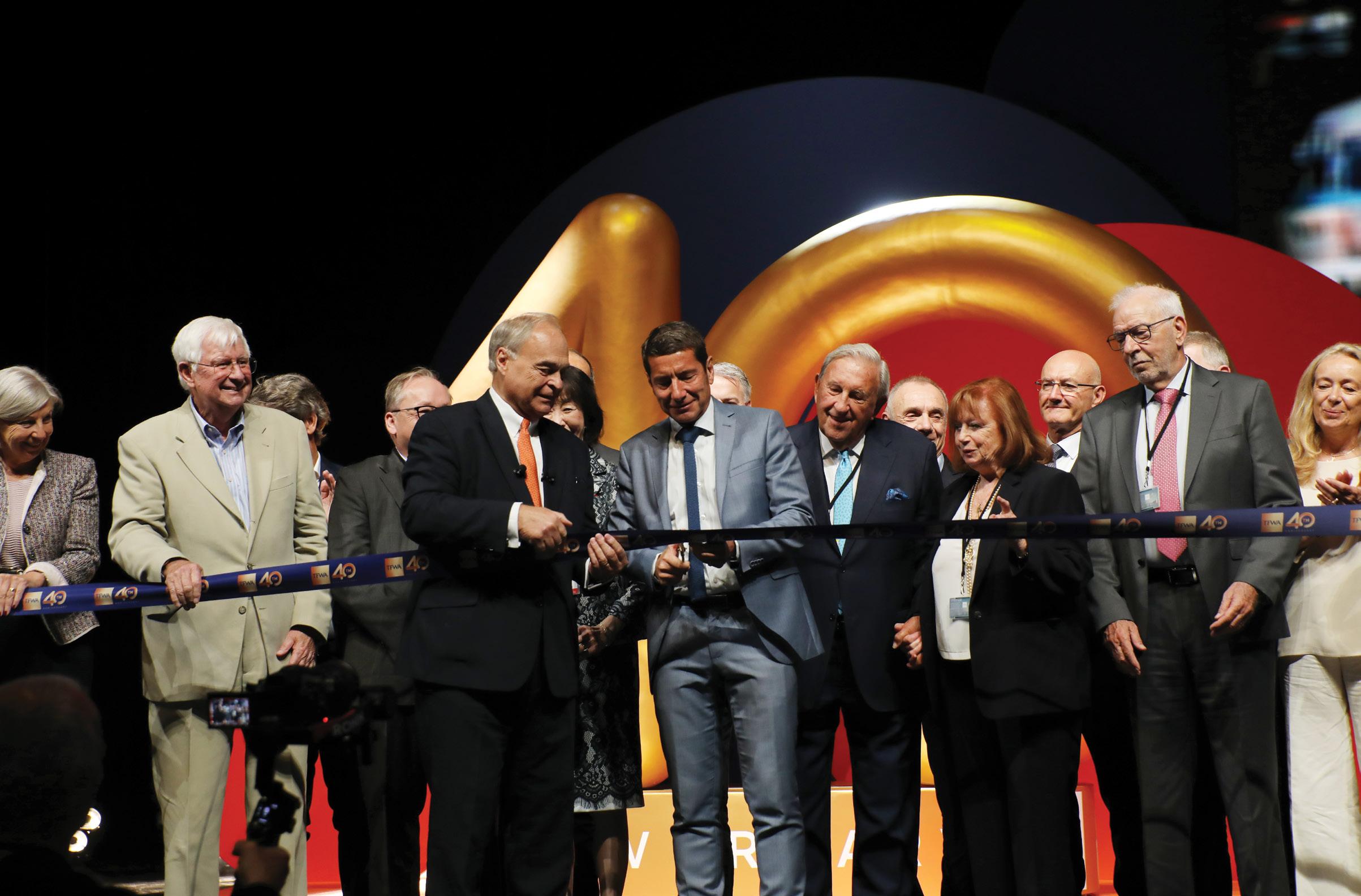
TFWA President Philippe Margueritte says to remain relevant, the travel retail industry needs to integrate new technologies and create environments where the airport becomes the destination, plus more on TFWA’s Innovation Square in Cannes
by LAURA SHIRK
“Newness” is a key expectation of travelers these days. As described by TFWA President Philippe Margueritte in interview with Global Travel Retail Magazine, innovation is vital for the association’s members across all product categories. In many cases, new products contribute between 10% and 20% of brand sales in travel retail. According to TFWA research, conducted in partnership with m1ndset among 5,000 duty free shoppers, 65% reported purchasing a new product and 18% tried a brand for the first time.
“This ratio is significantly higher than in domestic retail and reflects the
unique mindset we adopt when traveling,” comments Margueritte. “Travel often pushes us out of our comfort zones – encouraging exploration, openness to new cultures, and readiness to try something different. That spirit carries into the shopping experience. Travel retail is, in many ways, the ultimate channel for innovation.”
Margueritte is swift to note innovation does not only apply to a brand’s product portfolio. With Generation Z soon poised to become the number one consumer group for both brands and airports, he says retail innovation is equally critical. Consumers of the age group are not simply purchasing items –

they are collecting meaningful experiences. “To remain relevant, travel retail must continuously surprise, integrate new technologies, and create environments where the airport itself becomes a destination,” he says.
It is here that Margueritte says the industry has a clear disadvantage in comparison to high street retail, as browsing time in duty free is reported to be three times less (between three and five minutes). With this in mind, innovation in retail is necessary to improve conversion rates. Only adding to the challenge, procedural elements at the airport such as check-in and security have seen little improvement in



















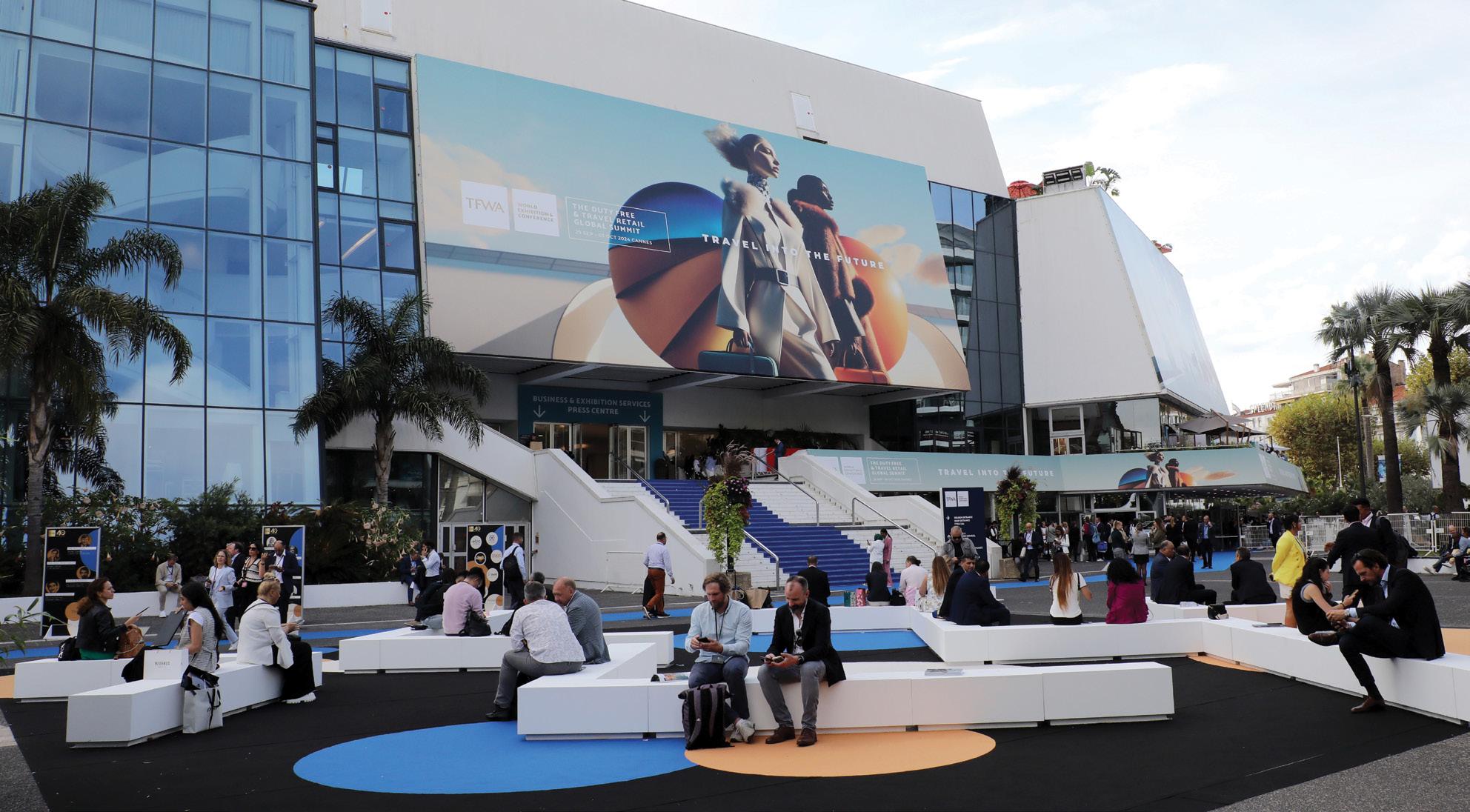
recent years. With travelers increasingly arriving closer to departure time, this further reduces shopping opportunities. Streamlining these processes is another area where innovation is “urgently needed.” When it comes to artificial intelligence (AI) in duty free, he believes the opportunities are limitless and the technology is ready – the industry just needs to implement it quickly and intelligently.
“AI will play a transformative role as travel retail is uniquely positioned thanks to the quality and accuracy of its data. With AI, we can create a more personalized, efficient, and memorable shopping journey, tailored to individual traveler profiles,” remarks Margueritte.
However, he says, unlocking the full potential of AI and improving the travel shopping journey hinges on the industry’s ability to collect and share quality data – while ensuring transparency and confidentiality. Post-pandemic it is evident stakeholders across the value chain recognize the importance of collaboration and the days of competing solely over price have come to an end.
“TFWA will work to create secure, scalable data-sharing models that

respect privacy while empowering strategic thinking,” states Margueritte. The association expects to share more concrete progress on this initiative by the beginning of 2026.
The association’s new Innovation Square at this year’s TFWA World Exhibition
& Conference reflects the same line of thinking. Located at “the very heart of the exhibition” in front of the Palais des Festivals in Cannes, France, the dedicated space will span nearly 400 square meters and serve as the backdrop to two TFWA workshops taking place on Tuesday and Wednesday morning. Access to the Innovation Square is strictly by invitation only.
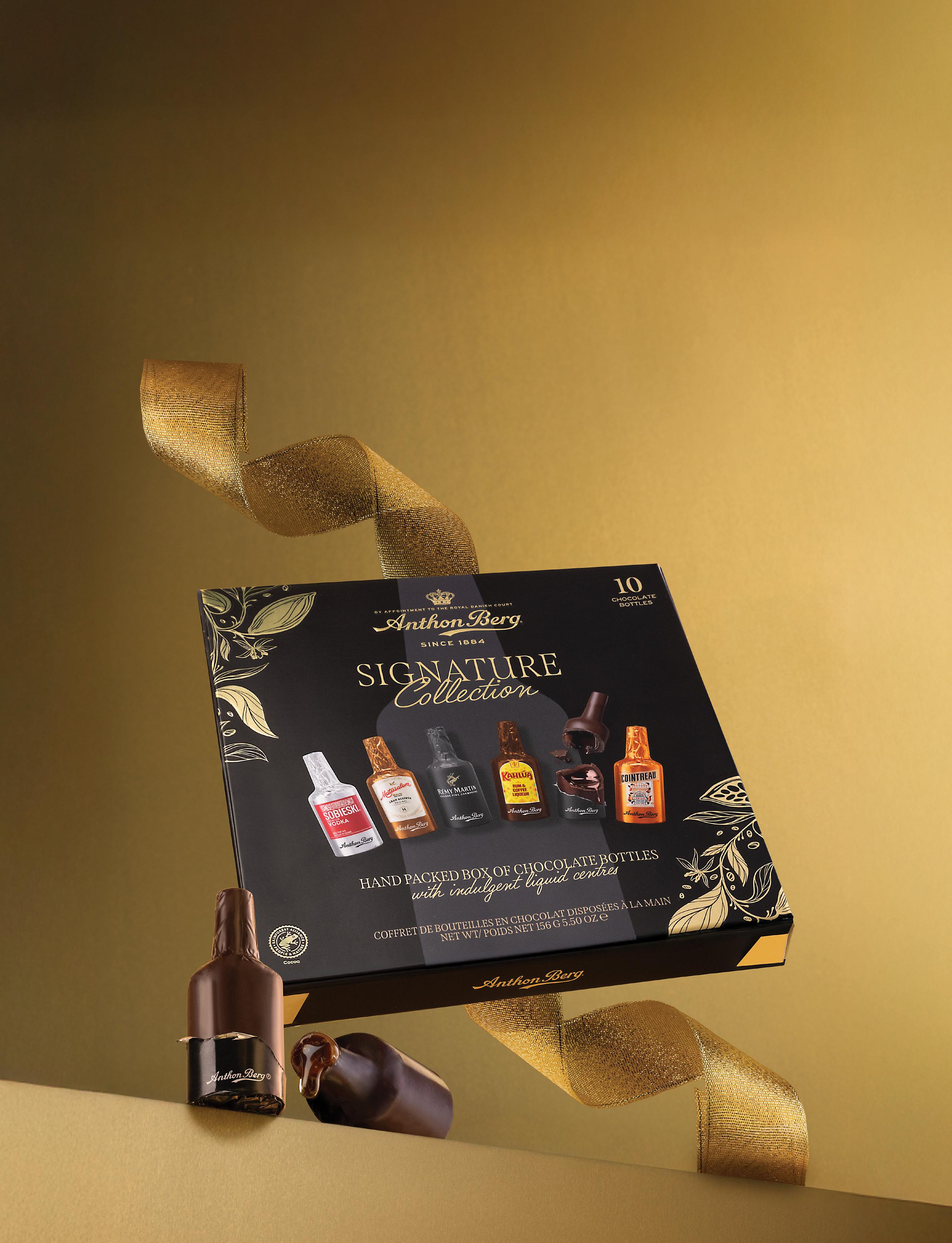
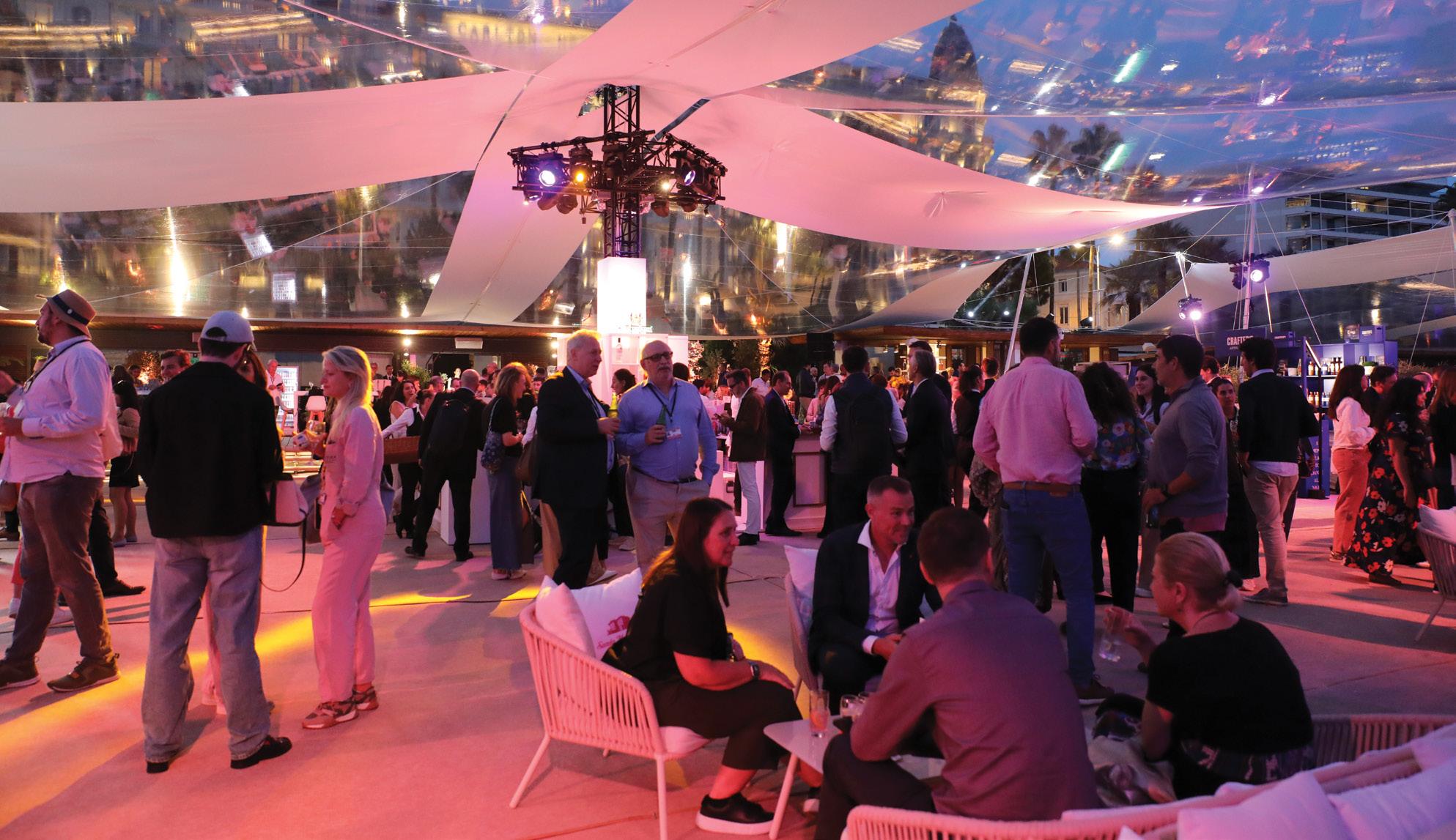
Avolta has been named as the Innovation Square Lead Partner, underscoring the retailer’s commitment to driving forward-thinking solutions and shaping the future of innovation. It will operate the space in partnership with exhibiting brands showcasing innovation throughout the daytime hours of the event. The Innovation Square is also supported by an After Hours Partner. Lacoste will welcome delegates to the exclusive space on Monday evening for a private event designed to foster meaningful connections among industry leaders.
“At midday on Monday, September 29, TFWA President Philippe Margueritte, the TFWA board, and a host of partners will join a hand-picked delegation for the official inauguration of the Innovation Square,” shares the association.
According to the TFWA President, the space will bring together brands, retailers, airports and operators to spotlight their leadership in areas including customer experience, technology, sustainability and AI.
“Learning is central to our mission. The venue will host early-morning workshops, designed to spark conversation and share best practices. In the evening, our immersive 100-square-meter LED screen will light up as a background to private networking events and cocktail gatherings, continuing the spirit of discovery and inspiration into the night.
“Innovation Square is not just a display; it is a celebration of creativity and progress where all stakeholders will be able to spotlight groundbreaking achievements and projects,” he explains.
Beyond the launch of Innovation Square, from its TFWA Lounge at Carlton Beach to its broader activation program, the association will bring excitement for exhibitors and visitors in Cannes this year. While overall attendance was slightly down at TFWA Asia Pacific in May, Margueritte notes the number of buyers held steady and airport participation increased. TFWA also reached a record 1,100 ONE2ONE meetings scheduled at the show.
On the topic of ongoing political uncertainty, he points out while the imposition of tariffs can undermine consumer confidence and create market instability, uncertainty is the new normal, and travel retail is resilient. “What remains a certainty, is our strong will, deeply rooted in our DNA to discover the world and learn from others. That spirit continues to drive our industry forward, and with travel numbers expected to double in the next two decades, we remain optimistic,” he says.
Where one might see challenges, Margueritte sees a landscape of opportunities. To encourage the fostering of innovation within the industry, TFWA aims to generate greater value for travel retail. “As TFWA President, my mission is to inspire and foster more creativity, and I’m thrilled to see how the team is progressively embarking on a journey to bring more excitement to our exhibitions, more services to our members, all this embracing sustainability. Many exciting projects are underway – stay tuned!” he concludes.

Sault Ste. Marie Duty Free in Ontario. Despite Canadian land border duty free stores reeling from the direct impact of the trade war, they have still not received any assistance from the federal government

Ongoing political and economic tensions between Canada and the United States have created unprecedented uncertainty for travelers and businesses. GTR Magazine speaks with the Frontier Duty Free Association for an update on the decline of cross-border travel and its appeal to the federal government for support
by LAURA SHIRK
As trade talks between Canada and the United States continue, Canadian land border duty free stores are in threat of shutting down across the country. In an exclusive interview with Global Travel Retail Magazine, Frontier Duty Free Association (FDFA) Executive Director, Barbara Barrett, shares the ongoing political and economic tensions have created unprecedented uncertainty for travelers and businesses on both sides of the border, driven by U.S. tariff threats and aggressive rhetoric. Barrett remarks, “Many stores never fully regained pre-pandemic levels of business, and the current climate has only deepened the crisis.”
At the time of writing, Prime Minister Mark Carney recently announced that Canada will remove all tariffs
on goods from the United States that are covered by the Canada-United States-Mexico Agreement (CUSMA) by the first of September. According to Carney, tariffs are set to remain on steel, aluminum and autos as the Liberal government works with its neighbour to the south to establish a new trading relationship between the two countries.
As a direct result of the trade war, many Canadians have chosen to avoid traveling to the United States and cross-border travel has sharply declined. Statistics Canada reports cross-border vehicle traffic is declining month after month, with the most recent data revealing a 38% drop in Canadians driving to the United States in May 2025 compared to May of last year. Some regions are
experiencing even sharper declines, with certain land border crossings seeing traffic reductions of over 40% and corresponding duty free sales losses of 60% to 80% in recent weeks, which is generally considered the industry’s peak season. “The longer this continues, the harder it will be for businesses and communities to recover once travel patterns normalize,” comments Barrett. According to Barrett, this situation has been exacerbated by new Canadian government campaigns and political leaders at all levels actively encouraging domestic tourism and offering incentives for Canadians to travel within the country, instead of across the border.
Rather than fuelling a divisive “elbows up” approach, FDFA is urging leaders to embrace an “open arms” message. “While we understand the





sentiment behind standing up for Canada, our border communities are taking the brunt of these tensions. What we need now is an ‘open arms’ message that welcomes our American friends, encourages cross-border connection, and recognizes that the long-term health of our communities depends on keeping the border open, welcoming, and vibrant for both countries,” she explains. “Messaging should highlight that land border duty free stores are not just small Canadian businesses, but that they are vital economic engines for border towns. These stores support local jobs, drive tourism, and keep Canadian dollars at home.”
Tania Lee, FDFA President and Vice President of Sales at Blue Water Bridge
Duty Free in Point Edward, Ontario, believes unless Canadian political leaders send a clear signal that cross-border relations are improving and that travel to the United States is encouraged, this cycle will only continue. She notes, “The frequent changes in tariff rates and the lack of clarity about what travelers are allowed to purchase and bring back into either country have only added to the confusion. When people are unsure, they buy less.”
According to Barrett, the association is calling for immediate and practical measures from the federal government to support Canadian land border duty free stores during this period. FDFA is
seeking a level playing field and easy regulatory changes that would remove unnecessary red tape and provide greater stability for business owners and border communities. Barrett states, “Canadian stores currently face barriers and rules that our U.S. counterparts do not, making it even harder to compete in the current climate.”
The association would also like to see leaders publicly acknowledge the cascading effects of policy decisions, tariffs and cross-border tensions on the people, businesses and communities that are being directly and disproportionately affected.
Throughout the process, FDFA has been working closely with the MP Border Caucus, as well as border community mayors. As expressed by Lee, in early June, the border mayors sent an open letter to Prime Minister Carney, requesting immediate action to support family-run land border duty free stores. “So far, we have seen nodding heads but no action,” she says.
Despite these challenges and the backand-forth political play, FDFA wants to promote that Canadian land border duty free stores are viable, resilient businesses with a forty-year track record of supporting local economies and border communities.
Acknowledging that traveler confidence among Canadians will likely remain low for the rest of this year, Sault Ste. Marie Duty Free Owner, Ralph Caria, is optimistic that the two countries will arrive at a fair and mutually beneficial trade deal. “By their very nature, duty free stores cannot pivot to other customers,” he notes. “We are an export business that can only sell to travelers crossing to the U.S. We are hopeful that duty free stores are included in any targeted support package that eventually is determined by the federal government. We can’t and should not be left behind.”


Travel retail is moving into a new era where AI, contactless payments and Just Walk Out technology bring greater speed, personalization and operational efficiency, while opening new possibilities for travelers, retailers and airports
In recent years, airports have increasingly turned to digital-first solutions to reduce wait times and streamline the traveler experience, with artificial intelligence, contactless payments and Just Walk Out (JWO) as three such technologies leading the way. Thomas Kaneko Henningsen of Blueprint, a strategic consultancy in travel retail, sees this as evidence of the industry’s willingness to experiment and embrace future-driven operational integration.
He points to examples such as the automated duty free store at Brussels Airport, contactless ordering screens at Stockholm Arlanda's Jureskogs restaurant, and innovative applications in travel retail including the robotic
restaurant SELF at Barcelona-El Prat Airport and the industry-first palm vein payment technology introduced by Lotte Duty Free at Seoul's Gimpo International Airport as proof of how technology is reshaping efficiency and enhancing the passenger experience.
Artificial intelligence, contactless payments and Just Walk Out (JWO) technology each serve different purposes in airport retail. Contactless payments streamline transactions at traditional checkouts, reducing queues and speeding up purchases. JWO allows travelers to shop without any checkout at all, keeping stores open 24/7 and enabling a seamless grab-and-go experience. AI
supports both approaches by powering data gathering, customer profiling and predictive shopping analysis, providing insights to optimize operations and personalize service.
Theo Goldberg, Director at Airport Retailers Association (ARA), a nonprofit that works with Schiphol Airport to enhance the passenger experience, believes that contactless payments and JWO are an expectation of travelers.
“We are seeing that passengers increasingly make conscious choices for shops and food and beverage outlets where they can pay quickly and without physical contact,” he shares.
Lacoste is testing contactless payments in several travel retail locations, recognizing the value of speed and convenience, especially for time-pressed travelers. “In busy airport settings, the ability to make quick, seamless purchases is a clear advantage, especially for consumables and products without sizes or technical details,” says Erin Lillis, Lacoste’s Travel Retail and Corporate Director, APAC.




In luxury and experiential retail, the rollout has been more cautious.“Contactless and JWO adoption is slower in luxury boutiques and experiential zones, where human interaction and hands-on trial remain critical to brand storytelling,” Henningsen explains. In those settings, AI plays a support role instead, equipping staff with personalized insights to enhance customer service and upselling.
Retailers and brands use AI to optimize dynamic pricing, predict inventory, prevent losses and run hyperpersonalized campaigns. They report positive ROI through sales transparency, upselling, reduced shrinkage, fewer stockouts and smoother logistics. Henningsen shares that AI’s predictive capacity allows businesses to adapt proactively to changing customer profiles and shopping behavior.
“AI unlocks real-time performance data, allowing airports to fine-tune in-terminal layouts, space planning, wayfinding, dwell zones and more,” Henningsen says. “The real kicker here is AI’s ability to predict shopping behavior, which in turn can help future-proof airport shopping.”
Innovation challenges
Despite the benefits, airports face hurdles in deploying advanced systems.
Henningsen points first to infrastructure. “Many airport terminals were not built with sensor placement or data connectivity in mind” he notes, meaning that retrofitting older facilities requires heavy investment.
Privacy also poses challenges. AIdriven systems that rely on cameras and sensors must comply with regulations such as GDPR. Henningsen stresses the need for anonymization at source and partnerships with certified providers who prioritize compliance.
Operational and regulatory issues also exist. AI remains largely unregulated by governments, which Henningsen warns could lead to complications. “The failure to regulate early on will make it nearly impossible to put ‘the genie back in the bottle’ due to the open-sourced nature of AI,” he notes.
Goldberg lists additional hurdles, such as ensuring transparent communication, safeguarding data, maintaining fallback options such as self-checkout during outages, verifying ages for restricted products, and integrating systems with inventory management and loyalty programs. “By gradually introducing these solutions and working closely with suppliers, retailers can mitigate risks while maximizing benefits,” Goldberg says.
People-powered, tech-assisted As AI takes on transactional work, the issue of potential job displacement competes with a desire for efficiency. “At Blueprint, we believe intelligent technology should elevate the travel retail human-to-human experience, not replace it,” Henningsen says. “As AIdriven systems such as contactless shopping and JWO become more common, we should challenge the choice between efficiency and employment.”
Henningsen argues that AI can free staff from repetitive tasks, enabling them to focus on hospitality, storytelling and building connections. Sales roles could evolve into experiential positions where employees act as brand storytellers and cultural ambassadors.
Lacoste’s Lillis shares that view from a brand perspective. “I believe any retail experience is built on human connection, storytelling and service excellence, which are elements we’re committed to preserving” she says. “Our sales team is central to the Lacoste experience. Technology should empower them to focus more on meaningful interactions, not diminish their role.”
Goldberg agrees from an airport point of view, noting that staff remain vital for ID checks, customer assistance and personalized advice. He envisions

Set yourself up for success with Altria International Sales, featuring a premium product portfolio and unmatched service to support your business and keep traditional and contemporary adult tobacco consumers 21+ satisfied.
a hybrid model where technology runs the mechanics and people bring the personal touch.
Henningsen notes that employment will gradually shift as AI-powered technologies optimize processes and operational costs. However, he also notes that in turn, this unlocks the opportunity for travel retail to become more hospitalitydriven. “We believe that the risk is not automation, but rather, exclusion,” he says. “If travel retail becomes a tech-first industry without inclusive strategies, it will deepen inequality. But if the industry leads with positive intent, we can build a conscious commerce ecosystem that is more efficient, more human and more equitable to the benefit of industry stakeholders and traveling shoppers.”
Conscious commerce
AI’s efficiency comes with environmental costs. Manufacturing hardware and
powering large-scale systems generate a significant carbon footprint, which challenges the travel retail industry to reconsider how these innovations align with ESG commitments.
“Travel retail must ensure these technologies genuinely reduce its ecological footprint and contribute to sustainable supply chains globally,” Henningsen says. That said, he believes AI can help forecast sales more precisely, which can cut overproduction, warehousing, logistics inefficiencies and packaging waste.
Goldberg adds that technology could reduce energy use in compact stores, eliminate paper waste through digital receipts and curb food waste with better inventory planning. “By leveraging technology intelligently, retailers at the airport can enhance the passenger experience while contributing to a more sustainable future,” he says.
Lillis says sustainability remains cen-
tral to Lacoste’s strategy and that innovation will play a vital role in achieving its goals, noting that contactless systems reduce reliance on printed materials while smart retail tools improve inventory and minimize waste.
Ultimately, Henningsen envisions the travel retail industry as a leader in responsible AI adoption. By tracking and reporting carbon impacts and offering consumers transparency, travel retail can set an example beyond its own sector. He frames technology not just as a tool for speed, but as a catalyst for a greener, fairer industry.
AI is already transforming airport retail – but its future impact will be defined less by quicker transactions and more by how effectively the industry integrates efficiency, human connection and sustainability into the passenger journey.

Even with contactless and other emerging technologies, Lacoste prioritizes human-centered interactions to preserve the traveler experience


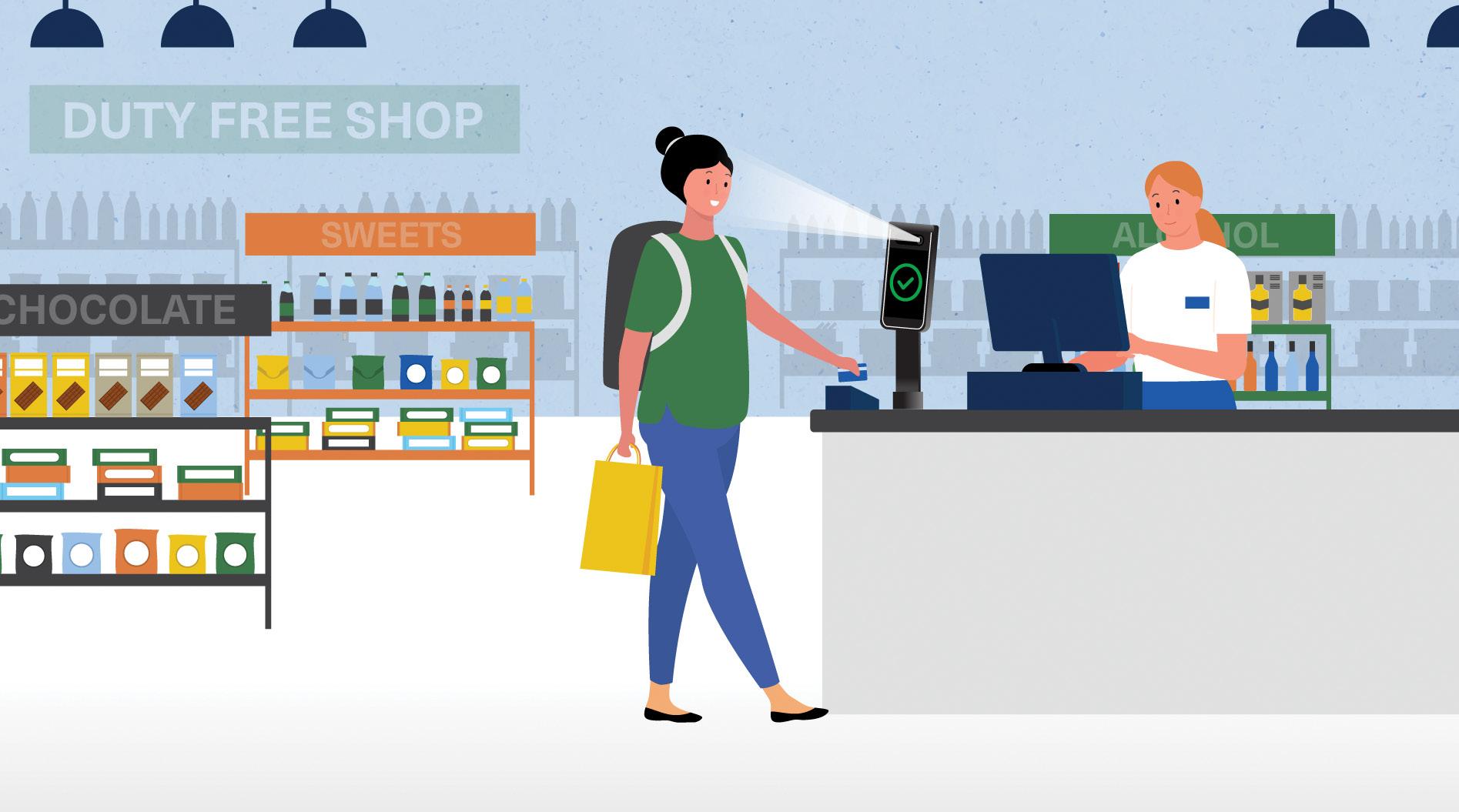
From the implementation of facial recognition to the curation of the retail journey, GTR Magazine examines the benefits, challenges and future of biometric technology in travel retail


Bby LAURA SHIRK
iometric technology is quickly becoming the center of frictionless travel, where innovative solutions streamline processes like booking, check-in, security and boarding to create a more relaxed and efficient passenger journey. “We’re now seeing its value extend into travel retail – where seamless, secure and personalized experiences are in high demand,” comments Adrian Thompson, Founder & Chief Solution Architect at imageHOLDERS. “Biometrics bridge the gap between operational efficiency and elevated customer experience, making it easier to serve passengers at every step of their journey, including within retail spaces.” When it comes to travel retail, biometric technology helps to reduce queue times and increase dwell times in retail areas, unlocking new revenue opportunities for airports, retailers and brands.
Specializing in self-service and assisted-self-service solutions, imageHOLDERS designs and builds interac-
tive kiosks and device enclosures for various industries such as retail and hospitality. The company’s solutions and products are highly modular, futureproof and accessible. Thompson says the three core drivers behind the adaptation of biometric systems in airport travel retail environments are: a rise among traveler expectations for convenience, retail personalization and operational efficiency. On the passenger side, biometrics can connect an individual to loyalty programs and preferences, enabling targeted offers and a curated retail journey. Whereas for retailers and airports, biometrics streamline processes, reduce friction and improve customer flow – especially when time is tight and during peak hours.
“Imagine a traveler walking into duty free and instantly being recognized as a loyalty member – they receive targeted offers based on past purchases or flight details and can make purchases with minimal authentication. It feels effort-



Specializing in self-service and assisted-selfservice solutions, imageHOLDERS designs and builds interactive kiosks and device enclosures for various industries such as retail and hospitality
less, premium and safe,” says Thompson. “This not only improves the user experience but also boosts conversion and dwell time for retailers.”
As a leader in air transport industry technology, SITA’s biometric solutions are designed to be modular, allowing airports to deploy step-by-step or across the full passenger journey. Stephen Challis, Senior Product Manager, Airports at SITA, says the integration of personalized services with loyalty programs, boarding time alerts or language preferences are all tied to a secure digital
identity which results in a more tailored, stress-free experience increasing both satisfaction and spend.
“We already provide biometric recognition technology to speed up the purchasing process by automatically sending ID and boarding pass data to retailers’ in-store EPOS systems,” remarks Challis. “This saves a passenger having to present their documents in the store, saving time and making things much easier and faster for all.”
Facial recognition leads the way While different regions worldwide have implemented different modalities, facial recognition is currently the most widely used biometric technology in air travel because of its speed, accuracy and contactless nature. It also has the ability to perform 1:1 matching using the biometric data in most passports. According to Rob Sutton, Director of Solution Enablement for Aviation and Travel at HID, “In travel retail, we have seen various modalities implemented for different use cases from the adoption of facial biometrics in Hong Kong for payment to the widespread utilization of palm biometrics at the numerous Just Walk Out stores in airports across the United States and Europe.”
Sutton says biometrics – specifically facial recognition – could significantly enhance the duty free shopping experience by automating many manual tasks while reducing human error. For
example, facial recognition could be used for age verification in the purchasing of alcohol and tobacco. Biometric systems could also be integrated with airline and/or airport systems to validate the allowances based on the passenger’s destination and automate the shipping process.
Daon’s President of the Americas, Bob Long, suggests that duty free delivery could potentially be made more streamlined and secure through facial recognition by using a locker-style system, like a big box store. Focused on providing solutions for identity verification, authentication and fraud prevention, the company has already carried out its technology into vending solutions to allow adults to purchase alcohol at sporting events and golf courses. “The same technology can be applied to a locker-style machine to ensure the right person gets their purchase while minimizing staffing requirements and reducing the number of hands touching a product,” explains Long. He reveals this could also work in the case of over-the-counter drugs or medicines for passengers.
Available across over 60 airports globally, from mobile to boarding, SITA Smart Path provides facial recognition at multiple touchpoints to allow for more streamlined travel. “Integration is seamless with airport infrastructure via cloud, on-premises or hybrid systems, and with airline systems through plat-



forms like SITA Flex, allowing biometrics to work with existing common-use terminals. This integration supports retail by streamlining access to airside shopping areas and providing real-time personalization potential,” says Challis.
Long list of challenges
The scalability and adaptability of biometrics at an international level is a key
challenge that the industry is working on via multiple channels. One organization that HID actively participates in is IATA’s One ID initiative. “Through this initiative and associated working groups IATA, its member airlines and strategic partners are working to develop a global framework for the widespread use of biometrics throughout the travel journey to include airport retailers,” says Sutton. He admits arguably the most complex aspect is data privacy. “It is important that retailers have clear and explicit consent mechanisms in place while ensuring that only necessary data is collected and the data is stored and transmitted via secure mechanisms,” he adds.
One of the largest technical challenges to overcome is integration – connecting biometric systems to legacy airport infrastructure, payment gateways, loyalty programs and retailer systems.
“Logistics can also be challenging: airports are complex, secure environments with limited downtime for installation and updates,” says Thompson. “Additionally, ensuring high accuracy across a diverse passenger base and varying lighting conditions in retail spaces can require calibration.”
Retailers must also consider the robust network required for data transfer and management, physical positioning and space constraints, as well as ongoing staff training and maintenance. Thompson points out, any biometric solution that is proposed needs to have a small physical footprint and be userfriendly to increase overall adoption.
On the flip side, Long believes the number one challenge will be the number of travelers who are willing to consent to their biometric template being stored by travel related organizations. “People love convenience,
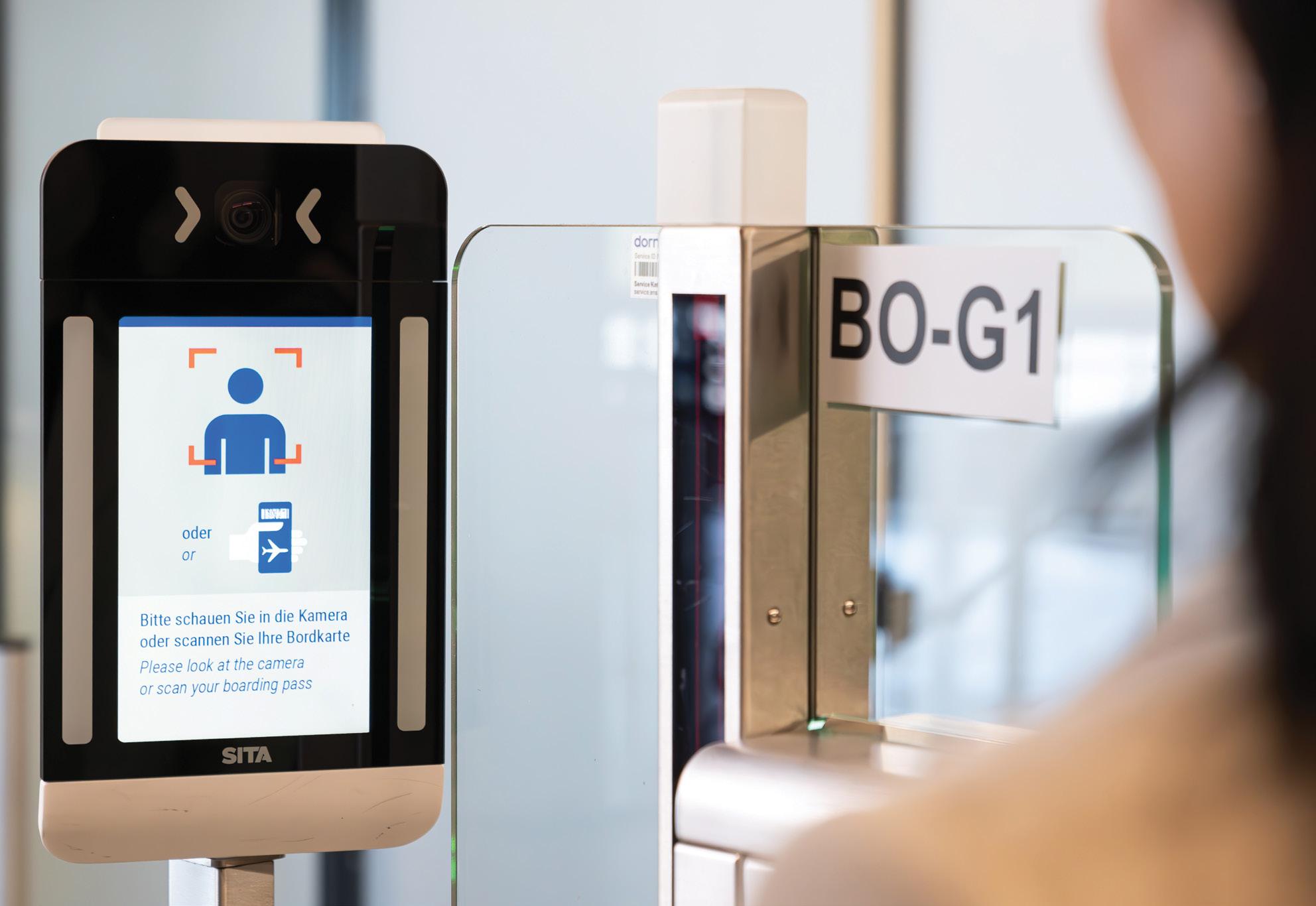















Welcome on board at the TFWA Cannes Exhibition, Harbour Village, M/Y ANTISAN

especially when traveling, but acquiring the majority of travelers as participants will be the task to solve. While biometrics are becoming more ubiquitous, an established relationship is still a key factor in adoption,” he states.
The tipping point
Expecting biometric technology to evolve from a convenience to a core enabler of both retail personalization and operational efficiency, Challis shares in the next five years biometrics will support curb-to-gate shopping, loyalty integration (tied to identity verification) and payment solutions within the travel environment. Biometrics will also drive wider adoption of mobile-based digital credentials that passengers can use across airports, airlines, retailers and hotels. “Biometrics will become the digital backbone of the entire travel and retail journey. Just like the widespread shift from cash to digital payments.”
Alongside an increase in the implementation of Just Walk Out technology across airport retail establishments, passengers will see an uptick in the combined use of artificial intelligence (AI) and biometrics. This will allow for real-time anomaly detection adding an extra layer of fraud prevention by flagging unusual purchasing patterns. Sutton concludes, “By combining technology such as the HID Facepod with other hardware such as the U.ARE.U Camera Identification System, airport retailers can future-proof their offerings while enhancing the overall customer experience and allowing their employees to focus on delivering exceptional personalized customer service.”

On the topic, Duty Free World Council (DFWC) President Sarah Branquinho tells GTR Magazine advances in biometric technology will be broadly welcomed by the duty free industry, however, the industry needs to be part of the discussion at the moment to ensure that its systems and processes are incorporated into the movement. She acknowledges the industry needs to be bold to fully capitalize on the potential.
Branquinho says, “Our current transactions rely on producing a boarding card at the tills. When biometric technology supersedes boarding passes, how will our systems be adapted to meet the new ‘normal,’ and what will the cost be?”
She notes the biggest prize lies in the potential to personalize the shopping experience for each individual shopper should data be shared between the airlines, airports and retailers. However, existing challenges linked to commercial and data protection will require innovative thinking to resolve –especially since the duty free industry is still reluctant to share its own data.
“As with the introduction of all new technologies, the pace of adoption will vary greatly across airports and even airlines globally and as regulations on the use of biometric technologies are likely to vary significantly across different territories there will be significant potential for travelers’ confusion during the transition phase,” adds Branquinho. “We have seen with the introduction of new generation scanning technology, how communication to passengers from airports and airlines needs to be clear and consistent.”
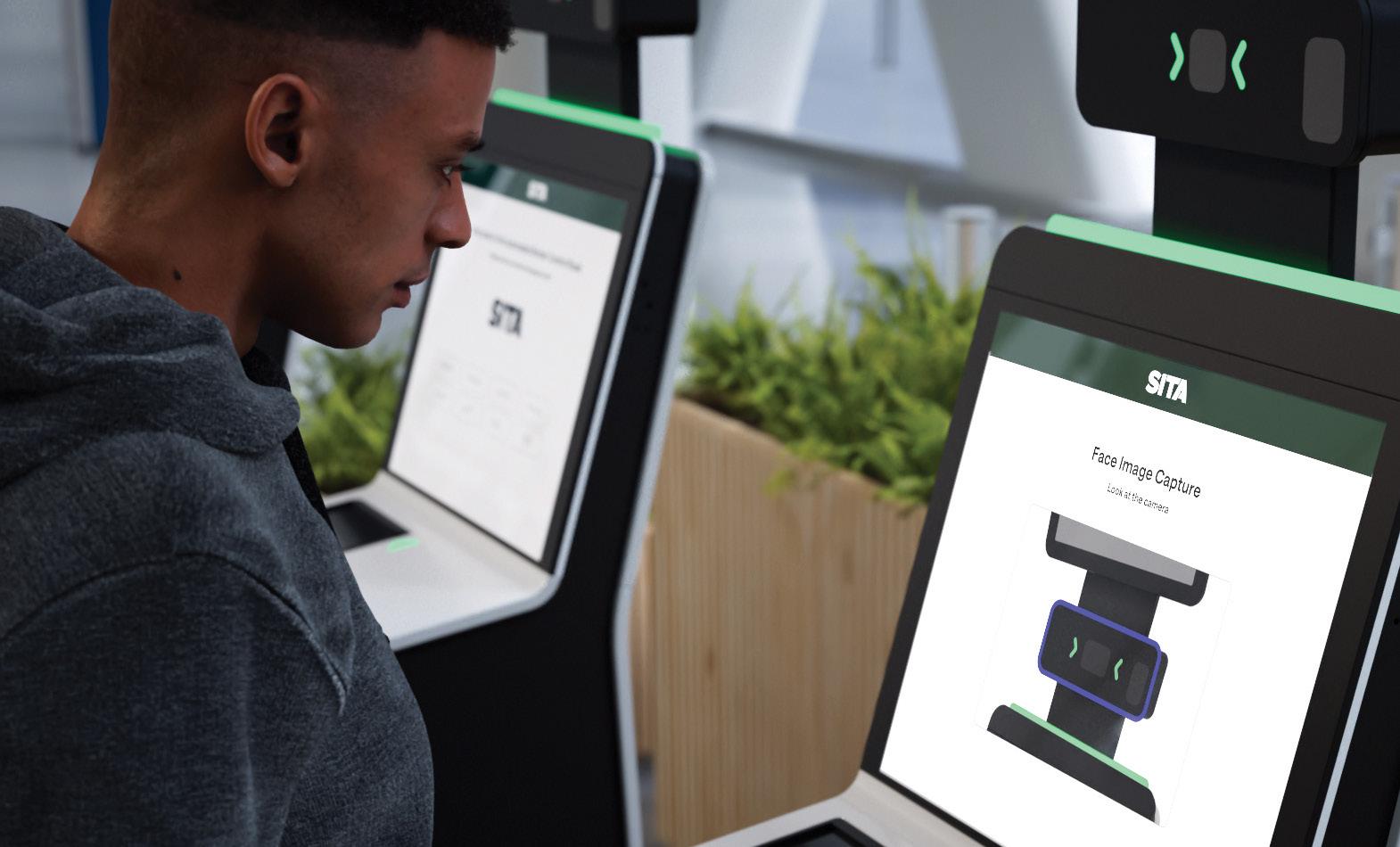







Influenced by the clinical insight of Professor Jacques Proust, the Nescens cosmeceuticals range is rooted in measurable results and exemplifies the medicalization of beauty

Driven by growing consumer literacy and the rise of dermacosmetics, the medicalization of beauty sees healthcare professionals playing a role in shaping current beauty norms. GTR Magazine turns to the experts to learn more about this integration and how brands are exemplifying the shift
by LAURA SHIRK
Described as a holistic, inclusive and conscious approach to self-care, today’s era of “new beauty” goes beyond purely aesthetic concerns to target skin health concerns and embrace wellbeing, sustainability and authenticity. Based on a fundamental shift toward a more precise outlook on beauty, Anne Laure Lecerf, General Manager at L’Oréal Travel Retail Worldwide – Dermatological Beauty and Professional Products Division, says “new beauty” emphasizes useful, safe and effective products and tools that are often developed with healthcare professionals and clinically proven.
“Our distinctive strength and the core of our value proposition in the current skincare market lies in our medical approach to treatment, directly address-
ing the growing consumer demand for scientifically validated skincare solutions,” she adds.
This approach is adopted by brands in the company’s Dermatological Beauty division including La Roche-Posay, SkinCeuticals and CeraVe. Lecerf remarks, born medical and recommended by dermatologists, the first two brands are sought after more and more by savvy consumers in the quest for efficacy, making beauty an extension of healthcare.
Recognized as a fusion of aesthetics and medical science, Caroline Siri, Director at Clinique Nescens, notes this new generation of beauty is a concept where wellbeing, prevention and rejuvenation go hand in hand. As one of the flagship clinics within Swiss Medical Network, the philosophy of Clinique
Nescens is influenced by the clinical insight of Professor Jacques Proust, the pioneer behind the Nescens cosmeceuticals range. “His vision, grounded in cellular aging science, has helped shape a beauty concept that is preventative, personalized and rooted in measurable results,” she notes.
“Today’s consumers – especially in travel retail – are looking for beauty solutions that nourish both skin and soul, grounded in science but inspired by nature,” says Mona L’Hostis, Director of Marketing, Global Travel Retail, L’OCCITANE Group. “At L’OCCITANE Travel Retail, this philosophy is reflected in our diverse portfolio: L’Occitane en Provence champions natural ingredients and sensorial rituals; ELEMIS blends cutting-edge science with luxurious formulations; and Erborian fuses Korean
















































Addressing the growing consumer demand for scientifically validated skincare solutions, the dermocosmetic brand La RochePosay is sought after more and more by savvy consumers in the quest for efficacy
skincare innovation with effortless routines. Together, these brands represent a shift from cosmetic quick-fixes to meaningful, results-driven self-care.”
Driven by growing consumer literacy, alongside the rise of dermocosmetics and active ingredients, and the integration of advanced diagnostic tools, the line between beauty and medicine has become increasingly blurred in recent years. The evolution of skincare has led to products that deliver results once only possible through clinical procedures, as well as the move of preventative beauty from the niche to the mainstream market.
According to Siri, the two fields have never been more interconnected and this integration is part of Clinique Nescens’ DNA. The Nescens Cosmeceuticals range exemplifies this shift. “With advancements in anti-aging science, hormonal therapies and regenerative skincare, consumers now expect clinical credibility behind the products and treatments they choose,” she says.
When it comes to the medicalization of beauty in travel retail, L’OCCITANE
Travel Retail is seeing an increase in demand for multifunctional products that prevent skin aging, support the skin barrier and boost long-term health.
L’Hostis says the integration of skin diagnostics and AI-based recommendations is a key consumer trend, allowing passengers to receive more personalized, preventative care – even in-transit.
“Our brands reflect this shift: ELEMIS is celebrated for its anti-aging and skin-fortifying ranges, while Erborian offers hybrid skincare that blends makeup and derm-grade skincare to prevent rather than mask issues. Consumers are no longer just treating symptoms – they're proactively preserving their skin’s health and also learning to feel comfortable and confident in their own skin,” she continues.
The medicalization of beauty in the travel sector presents a unique and strategic opportunity for skincare brands to highlight their expertise and to offer effective, scientifically-driven solutions says Lecerf. Elaborating on this point, she refers to dermatologist-recommended global skincare and suncare leader Roche-Posay, and the release of the brand’s Anthelios UVAir Daily Invisible Fluid SPF50 earlier this year.
Responsible messaging
As shared by L’Hostis, shoppers are asking more informed questions and expecting transparent, science-led answers. She remarks, “Consumers want to know what’s in their products, how

L’OCCITANE Travel Retail is seeing an increase in demand for multifunctional products that prevent skin aging, support the skin barrier and boost long-term health
they work, and the science behind them. At L’OCCITANE Travel Retail, our focus is on education and storytelling.” With the support of in-store visuals, digital content and trained beauty advisors, the company brings to life clinical trial results and before-and-after studies in the travel retail channel while reinforcing its commitment to evidence-backed beauty.
Speaking about how the industry should ensure responsible messaging and marketing in a space where beauty treatments are increasingly medicalized, L’Hostis states, “As the beauty industry adopts more clinical language, we must ensure our messaging is honest, respectful, and where relevant, rooted in science.” The group’s brands look to elevate the conversation around beauty with integrity and a sense of responsibility, whether it’s through ingredient transparency, sustainability commitments or wellness-led language.
“The scientific foundation is what makes [Clinique Nescens] so trusted, particularly among discerning international travelers. In travel retail, we’re not selling indulgence – we’re offering real, measurable results backed by clinical expertise,” concludes Siri. “As more beauty brands adopt medical language, it becomes even more essential that they match that language with rigorous research and clinical responsibility.”







In this Fragrance Report, GTR Magazine looks at Gen Z’s relationship with the category and how scent has evolved into a medium of selfdiscovery, exploration and creative expression
by LAURA SHIRK
For Generation Z, fragrance goes far beyond scent – it’s an evolving form of self-expression that shifts with mood, identity and context, says Fran Law, Vice President, Commercial and Business Development, Travel Retail Asia Pacific at Shiseido Travel Retail. “Unlike previous generations who gravitated toward signature scents, the Gen Z audience embraces fragrance as a flexible, layered ritual – one that matches their individuality and diverse lifestyle,” she continues.


The increasing demand for experimental formats, niche brands and limited editions reflects this mindset.
According to René Nijst, Travel Retail Director at PyD (Perfumes y Diseño), this is the spirit behind the Spanish company’s Kaos by TOUS and My World by HALLOWEEN, which are both designed to be mixed, matched and layered – offering Gen Z users the freedom to express their identity through scent. Drawn to meaningful storytelling and strong brand values,
he says when purchasing a fragrance, the demographic seeks an emotional connection.
“Gen Z is not only shifting what fragrances they buy, but also how they want to use them. Portable, smaller and travel-friendly formats are on the rise – not only aligning with their on-thego lifestyle but also allowing them to experience more without the commitment of a full-size product. Refills are also gaining traction, not only for their sustainability approach, but because


they offer a sense of customization and control,” says Nijst.
Unisex fragrances on the rise
Shaped by individuality, fragrance transcends traditional gender boundaries. According to Law, fueled by Gen Z, the global unisex fragrance market reached nearly US$19.7 billion in 2023 and is expected to grow up to US$33.4 billion by 2031. Within Shiseido Travel Retail’s portfolio, she says Serge Lutens stands out as a leader in authentic unisex perfumery.
From a strategic point of view, Nijst believes this generates exciting opportunities in the travel retail channel. “We should rethink how we merchandise fragrances in-store –creating inclusive spaces that encourage exploration and guide passengers through an olfactive journey, rather than prescribing who a scent is for,” he comments. “Our recent launch of SCALPERS The Band embraces this

philosophy, offering two fragrances that are emotionally driven and designed to be worn by anyone who connects with their vibe – regardless of gender.”
Social media as a sales driver
The fragrance industry is also seeing a cultural shift accelerated by social media platforms, where scent has evolved into a medium of self-discovery and creative expression. Helping to make scents visual, shareable and connected to identity, social media has developed Gen Z’s relationship with the category beyond physical retail. Platforms like TikTok and Instagram have led to an increase in planned purchases; however, the age group is also likely to be disrupted by interactive or engaging brand experiences in-store.
“Social media isn’t just a discovery tool – it’s one of the highest-performing short-term sales drivers in our category,” remarks Nijst. “It accelerates decisionmaking and helps us generate demand,
especially for limited editions and travel retail exclusives that aren’t available in local markets.”
To lean into this transformation, PyD has created immersive content around TOUS Kaos and HALLOWEEN My World that highlights their inspiration, ingredients and emotional resonance. “Thanks to social media, we’re able to create meaningful hype and connect with consumers in ways that feel personal, relevant and immediate,” he adds.
Personalization
British fragrance brand Molton Brown has upped its investment in social media and influencers, as demonstrated by its “Artists of Note” campaign. The campaign invites diverse creatives to reinterpret its fragrances through their own unique mediums such as painting, poetry and fashion.
“This new way to explore and express the sensorial power of scent is really resonating with Gen Z consumers, who

are very receptive to this tactile, open and creative way to understand the world of fragrance.
“In travel retail we have enhanced our in-store activation program and developed more interactive promotional spaces – notably through our first ‘contentainment’ collaborations – leveraging video content, strut cards and expert sales advisors to amplify our brand narrative at the point of sale,” says Rohanne Collis, Key Account Manager, Global Travel Retail.
Taking personalization to the next level, Molton Brown’s flagship travel retail location at London Heathrow now features an upgraded personalized gifting experience, including a gifting wall, a ribbon station and on-site engraving – offering travelers a seamless, threestep journey that includes fragrance consultation, bottle customization and bespoke gift wrapping.
Following its release this year, Moroccanoil’s Eau de Parfum L’Originale has garnered success beyond the brand’s expectations, both in terms of sales and visual impact
With the release of the brand’s debut fragrance earlier this year, Moroccanoil can now be described as a three-axis beauty brand (body, hair and fragrance). On the release, Sebastien Levi, Vice President, Global Travel Retail, says, “We are very excited with the launch of our Eau de Parfum L’Originale, whose success has been beyond our expectations, in terms of sales but also in terms of visual and image impact, especially during the many spectacular activations we had with Avolta in top airport locations such as Zurich, Madrid, Barcelona, London Heathrow or Milano Malpensa.
“This launch further establishes us as a multi-category beauty brand, which we have been in travel retail in the past 10 years. One of the ways to express this has been through our travel retail sets, where we can mix the hair and beauty category, to create routines that are not only about hair.
“When it comes to activations at the point of sale with services or gamification or sampling (or all three combined), we try systematically to play on different categories, thus meeting the needs and expectations of our customers.”





Rihanna’s inclusive, trend-setting beauty brand is now available in over 20 locations in the region
Miami-based distributor, Essence Corp is celebrating new Fenty Beauty listings in the Caribbean as the trend-setting beauty brand extends its network in the region.
In June the brand – launched by Barbadian superstar and businesswoman Rihanna in 2017 with a ‘makeup made for all, no matter your skin tone and type’ approach – opened its 20th Fenty Beauty location in the Caribbean.
Located at Castries Duty Free in St. Lucia, the new space marked the fourth Fenty Beauty space opened in partnership with leading global travel retail and F&B player Avolta, following the brand’s launch in Barbados in October 2024.
Another Fenty Beauty location, at Image’s Luryx Duty Free in St. Thomas, also opened in June.
Known for its brand-building expertise, Essence Corp serves as the bridge connecting successful U.S. brands with Caribbean markets. The latest Fenty Beauty spaces, according to Essence Corp, mark a “significant milestone” in the brand’s regional expansion.
With Fenty Beauty products now accessible in St. Lucia and St. Thomas, the brand is highlighting not only its products but also its high-quality makeup services and offer of personalized skincare consultations.
Essence Corp has been at the center of promotions and celebrations of Fenty Beauty’s expanding network of locations. Last year, a nine-island launch across the Caribbean featured Fenty Beauty, Fenty Skin & Fenty Eau de Parfum by Rihanna and included an exclu-
sive event attended by the superstar. Essence Corp remained at the fore of the brand’s launch in two locations with Fontana in Jamaica earlier this year.


Since 1992, The Estée Lauder Companies and its charitable foundation have funded more than $144 million for research, education, and medical services globally.

Coty SVP Mette Engell discusses how Gen Z’s demand for personalized scent experiences is reshaping travel retail strategy through layerable formats, sustainability innovation and immersive retailtainment activations
by WENDY MORLEY
Gen Z consumers are fundamentally changing how the fragrance industry approaches product development and retail experience design in travel retail, according to Mette Engell, Senior Vice President, Global Travel Retail at Coty. This generation’s preference for creating personalized “fragrance wardrobes” through layering and mixing different scents has prompted the P&C giant to rethink traditional fragrance formats and launch strategies.
“Consumers today want more than just a pleasing scent; they are looking for a full sensory experience that boosts their emotional wellbeing and empowers self-expression,” says Engell. “Younger consumers, especially Gen Z and millennials, are driving much of this demand, with 61% of Gen Z con-
sumers in the U.S. now using fragrance three or more times a week.”
The launch of Calvin Klein’s Hair & Body Perfume Mists and adidas Vibes’ Hair & Body Mists in travel retail demonstrate this approach, with each scent in the collection designed for solo wear or layering to create emotion-led scent experiences and signature combinations.
Younger travelers also demand eco-conscious options without compromising on product efficacy or travel practicality. “We are always looking for ways to create new, different and exciting fragrance innovations that embody both desirability and sustainability,” Engell adds.
Refillable and reusable packaging options, particularly refillable
travel sprays, support circularity while addressing travel retail’s portability requirements. For example, CK One Essence features upcycled turpentine from paper industry by-products that are extracted through fractionation processes to create modern scents, and the recent relaunch of Boss the Scent uses 17% less glass and a refillable design that reduces waste while modernizing the product.


The evolution of fragrance discovery has shifted dramatically as younger consumers increasingly turn to digital platforms before making purchasing decisions. This behavioral change has prompted Coty to rethink how it approaches influencer partnerships and technology integration in travel retail environments.
“Social media is playing an increasingly important role in the fragrance discovery process; it is now the thirdleading source of influence on fragrance purchasing decisions among younger consumers,” Engell remarks. “Yet, this is part of a much larger equation; younger consumers increasingly crave authenticity in their shopping experiences, whether online or offline. We are seeing greater demand for seamless omnichannel experiences that encourage this emotional connection, whether that is initial discovery online or point-ofpurchase in physical stores.”
Coty’s response centers on cocreation partnerships that begin earlier in the development process rather than traditional endorsements. “Advocacy is a key pillar of our strategy. We work very closely with our retailers and partners to develop dynamic experiences in travel retail, constantly exploring and enhancing how travelers discover and engage with our products through digital sto-
rytelling and cutting-edge technology,” Engell explains.
The exclusive Kylie Cosmetics pop-up experience at Incheon Airport marked the brand’s Korea debut while generating significant organic social media traction from beauty influencers and creators across multiple platforms, and the debut of Marc Jacobs Daisy Wild Eau So Intense in global travel retail earlier this year was a standout.
“To commemorate the launch, we unveiled Marc Jacobs’ first-ever crosscategory pop-up experience at Sydney Airport, Australia, in April, inviting visitors to immerse themselves in the iconic Daisy Marc Jacobs universe,” says Engell.
This digital-first approach extends to Coty’s broader technology strategy, with AI-powered makeup try-on tools from brands including Burberry, Kylie Cosmetics and Gucci representing investments that enhance discovery while creating consumer preference data.
Travel retail environments are being redesigned to create immersive brand experiences that transform shopping into entertainment while accommodating Gen Z’s expectation for personalized interactions.
“In travel retail, we are focused on creating highly exclusive, bespoke
experiences that generate intrigue and excitement among travelers,” Engell states. “Our omnichannel strategy is designed to engage visitors at every touchpoint of their journey, fusing innovative digital activations with dynamic in-store features to bring our brands’ values and stories to life.”
The avant-première launch of BOSS Bottled Beyond Eau De Parfum brought this comprehensive approach to life. “We wanted to create a premium fragrance experience that not only commemorated the launch of BOSS Bottled Beyond Eau De Parfum but also took travelers on an unforgettable journey into the BOSS universe,” Engell explains. “To achieve this, we delivered one of our most comprehensive global travel retail campaigns to date, ranging from multi-sensory fragrance mixology bars, themed photobooths, interactive digital games and photo filters to crosscategory installations showcasing BOSS fragrances, fashion and eyewear.”
Cross-category activations have expanded beyond single-brand experiences. “Another great example is our partnership with The Shilla Duty Free Singapore and Changi Airport Group to launch an exclusive Burberry crosscategory activation at Singapore Changi Airport in May, bringing the brand’s heritage to life through curated selections of Burberry clothing, accessories, eyewear, fragrances and makeup,” Engell concludes.


The 74-year-old fragrance house is transforming traditional Middle Eastern perfumery through creative freedom and emotional storytelling, scaling globally while keeping its soul intact
by HIBAH NOOR
Ajmal Perfumes has earned its title as the “King of Oud” through seven decades of mastery, but CEO Abdulla Ajmal is focused on evolution rather than reverence. The luxury fragrance house is reimagining how traditional Middle Eastern perfumery connects with younger, more diverse consumers while maintaining the craftsmanship that built its reputation.
“Today, we offer oud in three different categories – agarwood chips, oud oils and oud-based fragrances. It becomes part of the symphony, not always the main note,” Ajmal explains. “This versatility enables us to create compositions that resonate with younger, more global consumers who
seek depth without heaviness.”
The brand’s approach to modernizing oud extends beyond formulation to experiential education. Perfumers are invited to the Oud Tour in Hojai, Assam, India, where Ajmal’s story began. “They experience the raw material firsthand – touching the wood, inhaling the oils, and understanding oud beyond the lab,” Ajmal says. “This intimate exposure often redefines how they use it – less as a trend, more as a living, breathing story.”
Creative liberation
Ajmal’s latest collection, The Untold Stories, represents a radical departure from traditional fragrance development. The brand gave perfumers complete

creative freedom, asking them to “craft from instinct rather than instruction.” The result is five perfumes that feel deeply personal to their creators.
“For the perfumers, this approach unlocked new dimensions of selfexpression. For our customers, it offered something rare: the chance to connect with a fragrance not shaped by trends or demographics, but by feeling,” Ajmal explains. “Each scent stands on its own

– unfiltered, unexpected, and driven by personal experiences and memories rather than market trends.”
This creative philosophy reflects Ajmal’s broader business model, which Ajmal describes as “data-led but intuition-driven.” The company monitors traditional KPIs including footfall, product velocity and conversion, but places equal weight on emotional metrics.
“Some of our most successful initiatives – like The Untold Stories and Song of Oud launches – came from gutdriven bets following market trends, and the result was phenomenal,” he says. “Let the data inform the strategy, but let the soul guide the story.”
In travel retail, where consumers move quickly through high-traffic spaces, Ajmal has developed enticing activations that draw them in.
“Our immersive experiences are designed to slow the traveler down – to create pause, memory, and emotional connection in high-traffic spaces, which is crucial for business growth,” Ajmal explains. “Whether it’s a calligraphy
note, a live oud performance, or a curated scent journey, each interaction deepens the story. And when the story lands, conversion becomes natural, because the consumer walks away with more than a product. They take home a moment and a memory.”
Ajmal’s control over more than 10 million agarwood trees creates rare vertical integration in the fragrance industry. This connection extends beyond supply chain efficiency to cultural and environmental responsibility. “My grandfather started as a rice farmer, so giving back to the soil, the land, and the people who tend it is as much a part of our identity as oud itself,” Ajmal says.
The company ensures sustainability through ethical sourcing and community investment via the Ajmal Foundation, which supports education, healthcare and rural development in Hojai, Assam, and beyond. “In a world seeking purpose and provenance, this isn’t just a supply chain advantage; it’s a reflection of our values, rooted in respect for nature, people and legacy.”
Ajmal’s expansion across airports, cruise ships and luxury downtown locations has revealed how the brand’s emotional equity translates differently across environments. In airports, “Storytelling must be immediate, immersive, and layered with service,” he says, while downtown luxury retail allows for deeper engagement with “tailored consultations, rituals, and a more curated narrative around ingredients and heritage.”
Cruise retail offers a more indepth approach. “Ajmal resonates with fragrance connoisseurs and discerning travelers who look beyond mainstream designer luxury brands,” Ajmal notes. “Here, our expertise in oud, thoughtful personalization and rich legacy connects to those who value depth, authenticity and a more meaningful olfactive experience.”
The company’s decision-making process for scaling concepts balances creative intuition with commercial pragmatism. “We begin every concept by asking: Does this fragrance tell a story that deserves intimacy or reach?” Ajmal explains. “Some perfumes are meant to whisper, to remain rare, personal, and discoverable. Others have the potential to travel wider without losing their essence. Ajmal’s strength lies in knowing that not everything should be everywhere.”
Ajmal aims to expand from 60+ to 100+ markets by 2030, a growth trajectory that requires careful navigation between scale and authenticity. “Each market has its own rhythm, and we adapt without compromising Ajmal’s soul,” Ajmal says. “That means curating assortments that honor local preferences, training fragrance consultants to narrate our story with cultural sensitivity and choosing partners who align with our ethos.”

Serpentine’s development process combines complex fragrance architecture with innovative bracelet packaging to create a bold, globally appealing scent
Roberto Cavalli’s blockbuster fragrance debut at Dubai Duty Free signals a strategic pivot toward Middle Eastern markets as the company eyes global expansion through travel retail exclusivity
by HIBAH NOOR
Interparfums’ Roberto Cavalli
Serpentine launch at Dubai Duty Free delivered strong results during its exclusive May-August run. This launch represents Interparfums’ first major push with the Roberto Cavalli license, which the company acquired in 2023. “The response was very encouraging as we gear up to our global launch timing of September,” says Jean Madar, Chairman of the Board & Chief Executive Officer, Interparfums USA.
The fragrance’s strong opening weekend performance has positioned the company to execute an aggressive Middle Eastern expansion strategy, with partnerships planned across Emirates Airlines, Jeddah Airport and multiple duty free
operators in Qatar, Abu Dhabi, Beirut and Bahrain throughout Q3 and Q4.
The Serpentine exclusive period, which ran from May 26 through August 1, featured eight points of sale within Dubai Duty Free, supported by largescale outpost animations and media campaigns during the first half of June.
Strategic market entry
The Dubai Duty Free exclusive launch targeted a market where the brand already has strong recognition. “Given the existing, notable brand awareness of the Roberto Cavalli brand in the Middle East, we made a conscious and strategic decision to launch exclusively with Dubai Duty Free,” Madar explains.

Jean Madar, Chairman of the Board & Chief Executive Officer, Interparfums USA
Early consumer response data shows promise beyond that region. “In Italy, another clear focus market, we see Serpentine being listed with retailers that haven’t sold the Cavalli brand in many years,” Madar explains. “All very promising!”
The demographic data remains preliminary given the exclusive launch window, but initial reads suggest the fragrance is achieving broad appeal

across the targeted consumer base. The company positioned Serpentine to capture “all that the Roberto Cavalli brand is: sexy, seductive, and bold” while ensuring global market viability.
Serpentine features a complex fragrance architecture designed for global appeal. “Notes of cardamom, bergamot, jasmine, vanilla and patchouli deliver us a unique blend of floral, wood and amber. This gives the customer a seductive scent that matches the profile of the brand and the campaign, featuring Natasha Poly,” Madar explains.
The development process focused on creating a scent that would resonate across diverse markets. “The fragrance had to be bold, mesmerizing, and offer a global appeal while also playing well into the Middle East customer base,
where the brand awareness is strong and growing,” Madar says.
This approach aligns with Interparfums’ broader strategy of building on the success of the Roberto Cavalli fragrance business. “This was a brand we wanted to infuse with fresh energy, reintroducing the unapologetic flair and sexiness that define Roberto Cavalli fashion into its fragrance offerings,” he says.
The development process centered on a bracelet keepsake component that demanded extensive internal team coordination across sourcing, production and quality testing. “The engineering of this project has been nothing short of both incredibly challenging and immensely rewarding,” Madar says.
“The work from our internal teams
– not only in the sourcing and production of the bracelet keepsake, but the meticulous testing of the final product in delivering customers the ultimate satisfaction in their experience of Serpentine – was like nothing we’ve ever done before,” he adds.
The packaging complexity reflects Interparfums’ commitment to crosscultural market resonance, with a visual identity able to maintain Roberto Cavalli’s distinctive aesthetic while ensuring broad appeal.
Serpentine’s launch strategy demonstrates Interparfums’ evolving approach to travel retail channel development. The company utilized experiential marketing elements including outpost animations and digital media campaigns throughout Dubai International Airport to maximize brand visibility during the exclusive period.
The activation strategy reflects broader industry recognition of travel retail’s recovery momentum. “Travel retail remains a key area of focus for our company and is experiencing significant growth,” Madar notes. “We recognize there is considerable potential to expand and seize new opportunities across our entire portfolio.”
The Serpentine launch establishes a template for Interparfums’ broader travel retail strategy. “While every one of our brands is distinct, each holds a valuable place within the travel retail sector and offers a compelling story designed to create connections with travelers worldwide,” Madar says.
The Roberto Cavalli launch serves as proof of concept for the company’s approach to exclusive launches followed by strategic global rollout. “The launch of Serpentine for Roberto Cavalli marks an exciting first step and makes a powerful statement — introducing something bold yet precious to the market,” Madar states.

Tairo Group excels in the Caribbean and Mexico TR with the help of CapEx furniture, reaffirming its commitment to retail excellence
Tairo Group has reaffirmed its leading role in retail innovation with a series of strategic CapEx furniture installations across the Caribbean and Mexico TR.
These investments are said to reflect the group’s ongoing commitment to retail excellence, enhancing the customer experience and elevating brand presence in key markets.
In the Caribbean, Maggy’s Paseo Herencia in Aruba recently underwent a full renovation. The space now features the complete Coty brand portfolio, showcased through modern furniture and refined visual displays. According to Tairo Group, the upgrade improves store flow, enhances engagement, and reinforces each brand’s prestige while creating an inviting customer journey.
Burberry at Kirk Freeport in Grand Cayman is being expanded and
upgraded. The enhanced space will deliver a more luxurious and immersive retail environment, combining sophisticated design elements with local relevance to strengthen the brand’s presence in line with Burberry’s global identity.
In travel retail in Mexico, Tairo Group’s improvements span several key locations. Sears Cachanilla features a dedicated Gucci installation that transforms the space into an elegant, branded environment, “delivering an authentic and immersive experience that captures Gucci’s essence,” says the group.
Alongside this, Sears Cachanilla presents a dual-brand island installation for Boss and Burberry, spotlighting the exclusive Boss The Collection fragrances, a first for the region. The men’s fragrance line by Hugo Boss includes eight distinct Eau de Parfums inspired
by classic wardrobe staples, embodying timeless fashion through scent. The ultra-premium collection is showcased in a sleek, custom-designed setting, reflecting Tairo Group’s dedication to world-class retail execution.
Sears Las Americas has introduced new Boss and Calvin Klein furniture installations. “These upgrades bring a contemporary, premium feel that reinforces each brand’s identity through impactful visual storytelling,” Tairo Group states, noting that high-impact visuals and LED TVs play engaging brand videos to create dynamic and memorable shopper experiences.
“From full-scale CapEx remodels to targeted, high-impact installations, these projects demonstrate Tairo Group’s focus on delivering exceptional brand environments and elevating the customer experience,” the group adds. “With these impactful upgrades and ongoing expansions, Tairo Group reaffirms its dedication to creating retail spaces that inspire and engage customers at every visit.”







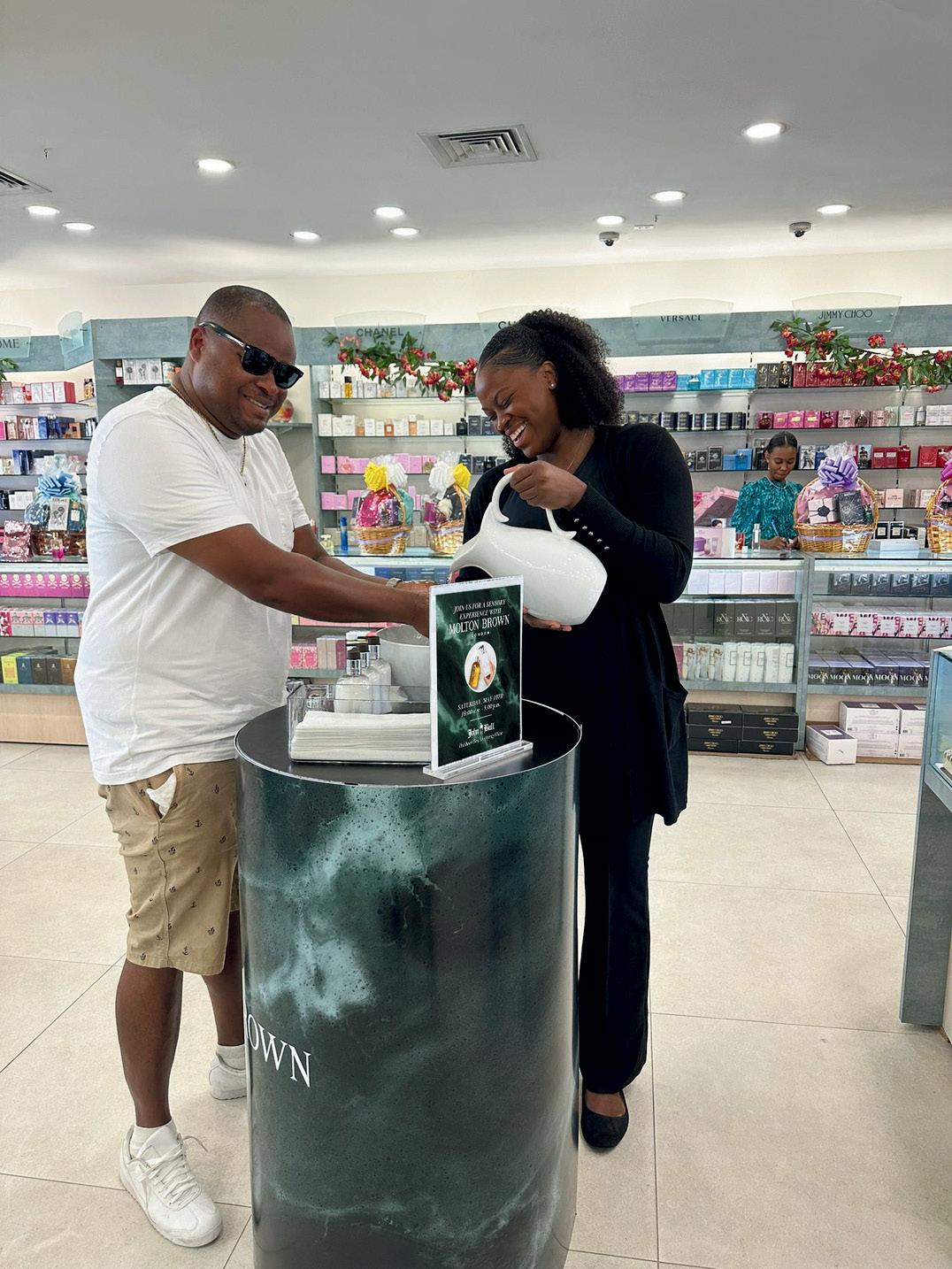


From crafting brand visibility and shopfloor retailtainment to catering to various snacking moments and budgets, confectionery brands are finding ways to mitigate consumer confidence in travel retail
by LAURA SHIRK
Global volatility has an impact on the overall state of consumer confidence in travel retail, shaped by a mix of economic, geopolitical and behavioral shifts. Despite these challenges, Jana Stroop, Global Travel Retail Manager at Cloetta Global Travel Retail (Cloetta GTR), observes the confectionery category remains resilient. Brands from across the category continue to mitigate consumer confidence by driving impulse purchasing, optimizing pack formats and enhancing perceived value through exclusive design and storytelling.
Cloetta GTR is currently focused on developing the sugar confectionery subcategory in travel retail with the
help of the hero brand The Jelly Bean Factory, by optimizing visibility, as well as retailtainment on the shopfloor. The company’s colorful carousel-style, bestselling display, which features flavor-first items like the Pop A Bean and 175-gram tubes, underlines the impulsive nature of confectionery shopping.
Stroop explains, “Travelers continue to seek joyful, premium and indulgent experiences, and confectionery still holds strong emotional appeal. Impulse shopping represents a majority of confectionery buying (71% according to PI Insight), which means that brands need to focus on being visible and positioning themselves correctly, as the modern traveler is not loyal to a respective brand.”

In agreement, Kellanova Global Travel Retail (Kellanova GTR) is shifting its focus from simple brand visibility to crafting immersive, shopper-centric experiences in the channel. Through lively activations and customized instore displays, the company looks to captivate travelers and spark purchases. “This strategy is further reinforced by




Pringles’ diverse product formats: from small cans ideal for on-the-go snacking, to larger sharing-sized options, and premium, travel-exclusive editions designed for gifting,” comments Jeanne Reijnders, Lead Global Travel Retail Duty Free. “Together, these engaging environments and versatile formats deepen emotional connections with shoppers and help rebuild confidence in the travel retail experience.”
A growing respect
Zeyneb Larabi, Global Retail & Travel Retail Director at Valrhona, has no doubt confectionery is becoming a stronger player in the duty free market. She says the team could sense the potency of the category at this year’s TFWA Asia Pacific Exhibition & Conference compared to previous years, and the Dubai chocolate trend has contributed to “a growing respect” for the category. However, she notes, with this comes higher expectations for creativity from the industry.
“It is clear that across the confectionery category, consumer confidence is returning, albeit cautiously. A good barometer for this is the immense trending popularity of Dubai chocolate, which showed great sales and bolstered confidence across the whole category. It confirmed that the impulse to spend on confectionery is alive when the offer feels local, exclusive and fairly priced,” she says.
In partnership with Avolta, Perfetti Van Melle recently opened its first Chupa Chups shop in Barcelona’s Josep Tarradellas Barcelona–El Prat Airport. According to Lauren Potter, Marketing Manager – Global Travel Retail, Perfetti Van Melle, which launched in the city in 1958 after being invented by a Spaniard, has strong ties to the region. “This oneof-a-kind experience showcases the full Chupa Chups product range as well as offers a fun, digital experience through games, a photo booth and educational facts displayed on an interactive touchscreen,” says Potter.
Under the Mentos brand, Perfetti Van Melle already has a strong range of impulse items including its Mentos Mints and Mentos Gum products, however it’s expanding its range to include several exciting new flavors for 2026 to keep up momentum and appeal to younger passengers. Next year will also see new pack sizes, formats and price points from Perfetti Van Melle.
When it comes to balancing premiumization with value-driven offerings to address more budget-conscious travelers, Valrhona has developed a clear offer ladder. This way it provides options that cater to all customers, all at premium quality. “This ranges from small bars that travelers can grab for self-gifting, through to the core premium assort-
ment – our ‘best of’ products. Beyond that, at the top of the ladder we have ‘high premium’ with destination exclusives and collaborations that are perfect for true connoisseurs,” says Larabi.
Valrhona has various new flavors and exclusive collaborations in the pipeline, in addition to two anniversaries in 2026. Coming up, a key focus for the brand will be its “The art of hospitality” concept featuring a series of artisan and chef partnerships.
In response to the same exercise, to strike a balance between premium offerings and value, Kellanova GTR has introduced a range of pack sizes suited to different snacking moments, combining accessibility with strong brand presence, Reijnders remarks. “Addressing rising concerns around health and HFSS (High Fat, Sugar & Salt) regulations, the company is also adapting its recipes by cutting down on salt and saturated fats, while expanding its portfolio with bold innovations like the Pringles HOT line. This dual approach caters to both the demand for indulgent experiences and the needs of health-aware consumers.”
Although plans are still in development, Reijnders says Kellanova GTR is identifying ways to connect with travelers through localized offerings and culturally tailored activations. Right now, the company’s evolving narrative centers on creating experiences that are just as impactful as the products themselves.
We are committed to protecting biodiversity, promoting regenerative agriculture, and preserving forests.
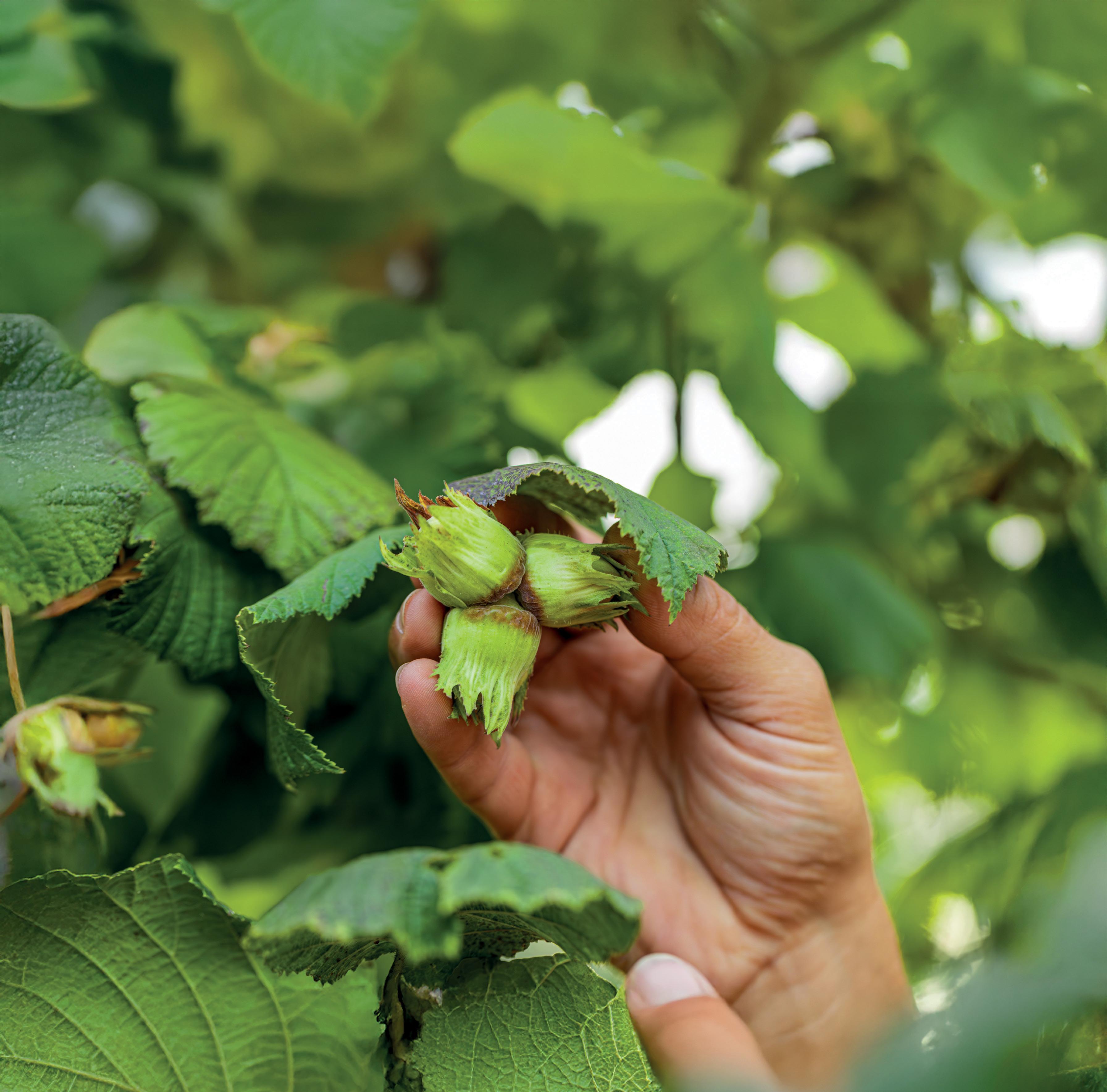
Scan the QR code to discover more about the journey of our hazelnuts.

GTR Magazine takes a closer look at Nestlé International Travel Retail’s 2025 in this case-style article. In addition to a regional overview, the company details the range of initiatives its implementing to drive shopper conversion
by LAURA SHIRK
Reflecting on the ongoing recovery of global travel retail, Nestlé International Travel Retail (NITR) reports the first half of 2025 has delivered a “solid” performance, particularly in core channels such as airports. According to General Manager Frédéric Porchet, the confectionery category continues to benefit from its role as an affordable indulgence – especially appealing in a climate where travelers are more selective with their spending. “Overall, consumer confidence in travel retail remains positive, albeit nuanced by region,” he observes. As experienced by NITR, below is a current regional overview of travel retail.
Europe:
• Consumer confidence remains steady, driven by intra-European travel, especially during key holiday periods
• Inflation and cost-of-living pressures continue to weigh on discretionary spending in some markets, particularly in Southern Europe
• European shoppers respond well to sustainability messaging, making launches such as Nestlé Sustainably Sourced Cocoa highly relevant
Asia Pacific:
• Asia has shown strong recovery, specifically with the rebound of outbound Chinese travel and increased regional connectivity in Southeast Asia. Consumers here exhibit higher brand affinity and appetite for premium gifting, often prioritizing packaging, exclusivity and sense of place
• Engagement levels are particularly high in digitally enhanced environments where gamification, retailtainment and personalization resonate

deeply with Gen Z and Millennial travelers
Latin America:
• Economic headwinds in the region have made price sensitivity more pronounced, yet confectionery remains a high-performing category due to its versatility and emotional appeal





• Regional hubs like Panama and São Paulo continue to show healthy performance, especially when engaging formats and regional flavor exclusives are available
Middle East & Africa:
• The region continues to serve as a key transit hub, particularly Dubai and Doha. Here, NITR sees robust performance in premium gifting and travel exclusives, supported by diverse passenger profiles and strong airport retail infrastructure
• Emotional connection and luxury cues are key conversion drivers in this region
When examining the confectionery category more broadly, NITR sees strong momentum from younger, experience-driven travelers across all markets. “These consumers are not just looking for products – they’re seeking interactions, personalization and unique moments, which makes confectionery a powerful conversion category,” explains Porchet. “Through global travel retail exclusive formats, engaging in-store activations and innovations like personalized gifting and digital experiences, we’ve been able to maintain high levels of shopper interest and sustain resilient category growth, even in the face of macroeconomic headwinds.”
The company views the balance between premiumization and balance as essential to category growth – especially in today’s evolving travel retail landscape, where shopper expectations are diverging across generations, regions and spending power, comments Porchet. NITR’s strategic approach is anchored in its Category Growth Drivers framework, which links every product to a clear shopper mission: self-treat, gifting or sharing.
“This framework empowers us to curate smarter portfolios, especially in environments where space is at a premium. By ensuring that every hero SKU earns its shelf space through purpose-driven design and pricing, we can cater to both the aspirational and budget-conscious traveler in a way that’s commercially effective and emotionally relevant,” adds Porchet.
As a response to today’s shifting consumer behaviors and dynamics, NITR is focused on maximizing impulse opportunities across the traveler journey and implementing a range of initiatives to drive shopper conversion: purpose-led portfolio curation, travel retail exclusive innovation and value, experience-led activation, strategic partnerships and retailtainment, pre-travel communication and digital engagement, as well as resilient supply chain performance to
maintain shelf presence.
A standout example of NITR’s experience-led activation component is its multi-brand hero installation with Ospree Duty Free at Mumbai Duty Free, which blends digital interaction, gifting and emotional connection through experience. Combining food and beverage, the new initiative supports cross-category promotion and marks the introduction of a dedicated coffee section featuring a curated range of premium Nestlé coffee products. The new space offers a vibrant, shoppercentric layout, intuitive navigation and impactful storytelling – creating a seamless blend of global appeal and local relevance.
On the partnership side, the company’s landmark global partnership between KitKat and Formula One (F1) demonstrates how it’s leveraging highenergy collaborations to drive future engagement and impulse. “Designed with Gen Z in mind, activations will offer a dynamic blend of exclusive promotions, digital interactivity and brand storytelling that taps into the passion and energy of F1 fandom. It’s a bold way to drive excitement, connection and repeat engagement while reinforcing KitKat’s global relevance and innovation.
“Ultimately, our goal is to make confectionery the most engaging category in travel retail – one that not only drives footfall and spend, but also builds longterm emotional loyalty through meaningful stories, purposeful branding and immersive experiences,” says Porchet.
This goal is sure to be achieved knowing that product quality and brand heritage serve as central pillars of the company’s storytelling approach. Nestlé prioritizes the integration of sustainable development into its activations, along with storytelling through product labelling, sleeving solutions, digital displays and informed staff members. This allows for the promotion of environmental and social credentials, as well as fostering of trust and long-term brand loyalty.








From Q1 2026, Sol Alpaca plans to expand into strategic airports across Europe and Asia, prioritizing high-traffic locations strongly aligned with its core values: authenticity, sustainability and textile excellence
by LAURA SHIRK
As a brand belonging to the Michell Group – a global leader and pioneer in the alpaca industry – travel retail represents a strategic pillar in SOL ALPACA’s international expansion process. Known for its high-quality alpaca wool clothing and accessories, the Peruvian brand sees the channel as a way to connect with travelers who value authenticity, sustainability and textile excellence. SOL ALPACA is present in premium locations with high international passenger flow to boost brand awareness and generate commercial opportunities. According to Matias Ressia, Commercial Director at BrandLink Group, SOL ALPACA is on a mission
to position itself in markets with a distinct value for quality, innovation and Andean heritage.
“Our travel retail strategy is initially being deployed across key Latin American hubs such as Peru, Chile, Argentina, Bolivia and Uruguay, where geographic proximity, cultural ties and recognition of alpaca fiber create an ideal context for SOL ALPACA’s positioning,” comments Ressia. “These regions not only strengthen our regional presence but also serve as a platform to project ourselves into high-value international markets.”
From the first quarter of 2026, SOL ALPACA plans to expand into strategic airports across Europe and Asia, pri-
oritizing high-traffic locations strongly aligned with its core values. The brand’s model includes both standalone stores and partnerships with duty free operators and commercial partners. “This hybrid approach ensures efficient implementation tailored to each market while consistently maintaining the brand experience and the Michell Group’s quality standards,” he continues.
Contemporary luxury
Described as warm, lightweight, breathable and naturally elegant, alpaca fiber possesses unique qualities that make it ideal for those seeking comfort and style on the move or a meaningful gift. It is also highly durable and
SOL ALPACA communicates its legacy and value proposition in duty free by offering a modern, elegant brand experience that aligns with the codes of contemporary luxury

responsibly produced, reflecting the values of today’s increasingly sustainably conscious consumer.
“As a gift, it offers an authentic connection to Andean heritage and conveys taste, sophistication and originality. More than a product, it provides a cultural and sensory experience,” says Ressia. “At SOL ALPACA, we firmly believe our product is our most powerful communication tool.” It’s all in the touch.
When asked how SOL ALPACA communicates its legacy and value proposition in the duty free channel, Ressia explains the brand does so by offering a modern, elegant brand experience that aligns with the codes of contemporary luxury. The company highlights the superior qualities of alpaca fiber and the deep textile expertise behind each garment via three pillars: sophisticated visual merchandising, integrated educational elements and premium packaging designed to elevate
value and turn each purchase into a memorable gift.
“At SOL ALPACA we tell an authentic story rooted in excellence, traceability and quality,” Ressia says. “While our roots lie in a privileged region of South America, we approach our product as a global proposition, with international standards, designed to connect with consumers anywhere in the world.”
When it comes to the digital side of business, SOL ALPACA’s omnichannel strategy is the key to extending the brand connection beyond the physical point of sale and enhancing the customer experience in the travel retail environment. It is because of this that the company can establish a direct, personalized and lasting relationship – especially with new generations of travelers.
SOL ALPACA is currently devel-
oping initiatives such as interactive storytelling via QR codes, connecting travelers to the story behind each garment, the benefits of alpaca fiber and the values that define the brand. The company is also exploring e-commerce platform integration, with the purpose to enable post-trip purchases and the shipping of gifts, thereby prolonging the customer relationship beyond the airport.
“Our aim is to build a seamless, inspiring, and coherent omnichannel experience that reflects the brand universe, promotes discovery, drives conversion and fosters long-term loyalty,” he states.
As extensions of travel retail, SOL ALPACA believes cruise business, border shops and inflight sales offer differentiated and complementary touchpoints with specific traveler profiles. Each allows the brand to bring its proposition closer to consumers at key travel moments, when they are most receptive to discovering and acquiring meaningful products, notes Ressia. The brand can also use each segment to leverage its industry approach, which aims to identify moments and channels where it can create impact, build recall and increase global engagement.
Looking ahead, the company is open to collaborating with brands from around the world that share its vision of authenticity and meaningful storytelling and can deliver real consumer value. “While we recognize the potential of synergies with regional brands, our approach is selective and aligned with international standards. Any collaboration must reflect the identity of SOL ALPACA, where alpaca fiber – a symbol of natural luxury, sustainability and sophistication – remains the central axis of our proposition,” says Ressia. With this top of mind, the company seeks partnerships that “respect and elevate” this essence, creating memorable experiences for a discerning audience that expects the best in every category.
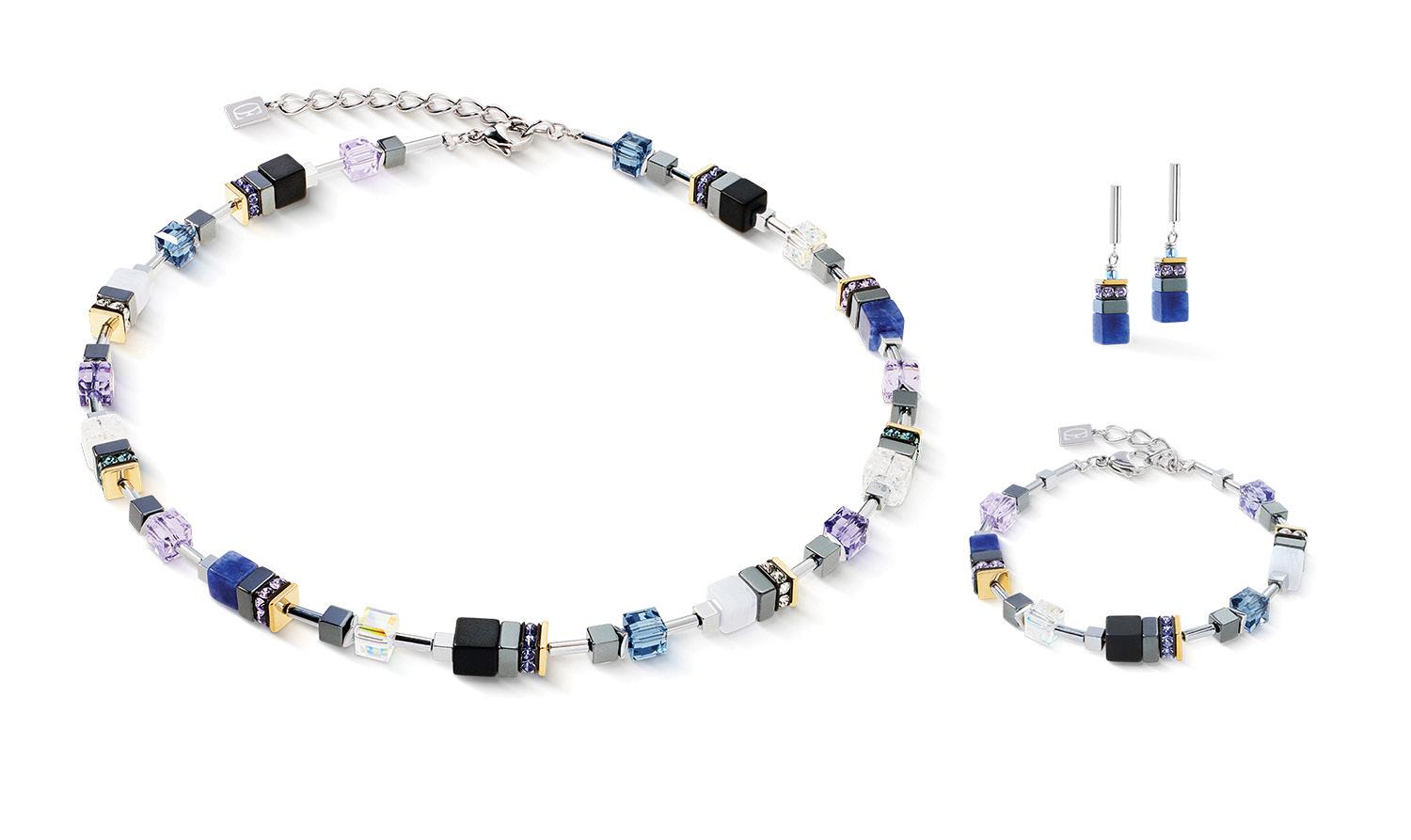
Coeur de Lion jewelry is known for its bold yet elegant use of natural stones, freshwater pearls, crystals, and timeless design


German jewelry house Coeur de Lion targets expansion in the global market, underlining its commitment to craftsmanship and quality
by HIBAH NOOR
German jewelry house Coeur de Lion is extendinwg its footprint in the global market.
According to Markus Lampe, CEO, Coeur De Lion is currently experiencing a dynamic phase of growth and expansion, both in domestic markets and increasingly within the travel retail sector.
“Travel retail has become a gateway for our brand to connect with a broader, more international audience,” he says. “It allows us to showcase our vibrant, handcrafted jewelry to travelers from different nationalities, customers who are drawn to our bold use of color, thoughtful design, and the craftsmanship that defines our identity.”
Each piece of Coeur de Lion jewelry is handmade in Stuttgart, Germany. “This heritage of quality and precision
is a cornerstone of our brand,” Lampe adds.
“We are particularly proud of our rapid expansion in collaboration with Avolta, with whom we’ve launched in key Caribbean markets such as the Dominican Republic, Jamaica, and Brazil. Simultaneously, our long-standing partnership with Heinemann continues to reinforce our presence at leading European travel hubs including Hamburg and Frankfurt airports.” The brand is also present in key airport locations such as Stuttgart, Munich, and Cyprus.
The cruise sector is another strategic growth area, with Coeur de Lion jewelry “a must-have at sea” through strong collaborations with MSC, Starboard, Harding+, AIDA, Heinemann, Avolta and Effy aboard both ocean and luxury river cruises.

Lampe notes the start of a new chapter for Coeur de Lion with the appointment of Gary Leong to lead its Asia Pacific expansion. “This is an important strategic move that we’re confident will bring the Coeur De Lion story to even more vibrant retail landscapes across the region.”
Lampe believes that today’s travel retail customers are seeking far more than aesthetics; they’re looking for jewelry with a story. “They want to understand where a piece comes from, how it was made, and the inspiration behind it. Transparency, craftsmanship, and a connection to quality and culture are now as important as beauty,” he says.
Coeur De Lion embraces this evolution by ensuring every collection reflects authentic craftsmanship, lasting quality, and a deep understanding of current fashion trends. The brand’s design process is rooted in continuous research, with color and style forecasts from the fashion industry’s most respected trend agencies interpreted through the brand’s unique design language.
The result is collections that feel both contemporary and timeless, blending design innovation with the heritage of handmade production in Germany.
“We make it easy for travelers to recognize and trust our brand by clearly highlighting this provenance in our visual merchandising,” Lampe says. “Every piece tells a story of excellence, artistry, and enduring beauty.”
Growth strategy
Coeur de Lion is a strong believer in long-term, meaningful partnerships, and “fortunate to work with exceptional teams who are equally committed to growing their categories and delivering value to customers.”
To date, the brand’s strongest performance has been in the cruise sector, where the leisurely, immersive shopping environment allows guests to truly engage with Coeur de Lion collections. “They have time to try on the jewelry, explore combinations, and speak with knowledgeable staff,” Lampe explains. “Experiences that often lead to deep brand connection and strong sales. As a result, Coeur De Lion has become a top seller aboard both ocean cruises and luxury river cruises.”
Airports remain an important and growing channel, with continued investment through enhanced training programs and the introduction of selfservice units.
“Geographically, our growth is robust across the Americas, and we’re
Every piece tells a story of excellence, artistry, and enduring beauty
building solid momentum in the Asia Pacific region, thanks to our strategic partnership with Gary Leong,” Lampe says. “We’re excited about the potential of these regions and are focused on continuing to adapt our approach to each market’s unique needs.”
Bestsellers and Cannes highlights Color has always been at the heart of Coeur De Lion. Its collections are celebrated for their bold yet elegant use of natural stones, freshwater pearls, crystals, and timeless design. At the core of the brand’s offering is the GEOCUBE® collection, the signature line inspired by the geometric clarity of Bauhaus design. It continues to be the most popular and best-selling series, resonating with customers across all retail travel channels.
Innovation is a key part of the Coeur de Lion design philosophy. This year’s German Design Award for one of the brand’s necklaces underscores its commitment to both artistry and innovation.
At this year’s TFWA World Exhibition, Coeur de Lion will present its AW25 Collection, showcasing not only new seasonal GEOCUBE® styles but also the growing Essentials line, which include versatile necklaces and bracelets designed for mix-and-match styling with existing Coeur De Lion favorites.

Tateossian looks to increase its footprint in the global channel, with cruise market and key airport hubs key targets
Jewelry specialist Tateossian celebrates its 35th anniversary this year with a sharpened focus on growth in global travel retail.
According to Founder, Robert Tateossian, that focus is on two key areas: expanding the brand’s Thompson of London inflight offer and strengthening the brand’s signature Tateossian collections.
Created to deliver stylish, contemporary men’s jewelry at accessible price points, Thompson of London centers on semi-precious stone bracelets and modern accessories designed for everyday wear. With retail prices under US$50, Tateossian says the line is “particularly well-suited to inflight and travel retail, where customers want versatile pieces that are both affordable and giftable.” The brand is also positioned to drive volume onboard.
Meanwhile, Tateossian’s signature collections – led by mechanical cufflinks and beaded bracelets – remain strong performers at airport counters, “appeal-
ing to travelers seeking meaningful, collectible purchases.”
“2025 marks our 35th anniversary, an important milestone for the brand,” says Tateossian. “Our wider campaigns this year celebrate Tateossian’s values of innovation, discovery, and individuality, themes that translate naturally into the travel retail environment where consumers seek out products with a story.”
The company is also eyeing cruise retail as a growth channel. “Cruise travelers are often in a celebratory mindset and open to meaningful purchases, which aligns well with our designs,” Tateossian notes. At the same time, the brand is in advanced talks to open additional airport counters, reinforcing its global presence in key hubs.
While Tateossian’s collections remain the anchor in airport retail, Thompson of London provides “an accessible entry into men’s jewelry.” Inspiration across both lines is rooted in “connection –between heritage and modernity, nature and craftsmanship,” with stones and
materials sourced worldwide to create pieces that resonate with travelers looking for something meaningful to take home.
Tateossian says men’s jewelry continues to be one of the strongest growth areas, with bracelets leading the category. “Travelers are looking for versatile, easy-to-wear pieces with individuality, and there’s a clear demand for jewelry that balances strong design with accessible pricing,” he adds.
Still, challenges remain. Limited shelf space for men’s jewelry in travel retail is one. “The modern male consumer is increasingly open to accessorizing, and the market has not yet caught up,” Tateossian says.
“Another challenge is price sensitivity, particularly inflight, where affordability drives purchasing. Our role is to meet that demand while still offering innovation, storytelling, and aspirational design.”


Swarovski’s balanced global footprint drives growth through collaborative partnerships, exclusive collections and microcapillarity strategies as the brand capitalizes on strong Middle East and Americas expansion
by HIBAH NOOR

SThe Ariana Grande collaboration continues to captivate travelers worldwide, driving excitement across diverse audiences
warovski’s travel retail strategy centers on delighting global travelers through craftsmanship, cultural relevance and memorable experiences. The brand is widely recognized for “bringing joy to travelers” through its sparkling creations, intersecting luxury perception with broad reach, says Andreea Marginean, Head of Global Travel Retail.
Growth hinges on partnership-led expansion and strategic presence across channels and regions, and Swarovski strengthens its brand through deeply collaborative relationships with travel retail partners. “By offering merchandising tools, innovative formats and co-created activations, we elevate the touchpoint experience,” says Marginean.
Swarovski maintains a balanced global footprint; currently momentum is especially strong in the Middle East and India, with steady expansion across the Americas. New openings have launched in destinations like Jeddah, Noida, Lima and MSC World America.
Airports remain the primary channel, with cruise retail and Hainan as key
contributors. Border stores are gaining importance in LATAM and Europe, while downtown and inflight channels provide complementary coverage. “Given travel retail’s impulse-driven nature, we embrace micro-capillarity, deploying compact, high-impact units like self-service turning units near gates, concourses and high-traffic zones to capture attention at the moment it matters,” Marginean says.
Collection highlights
The Ariana Grande collaboration continues to captivate travelers worldwide, driving excitement across diverse audiences while established favorites like Una Angelic and Matrix maintain their appeal through delicate, romantic design and exceptional craftsmanship. Travel retail’s exclusive Symbolica family leverages universally recognizable symbols like the Evil Eye in rhodium finishes, with FW25 expansions deepening the collection’s personal resonance for global shoppers seeking meaningful jewelry.
Artistic inspiration drives the Gema
collection’s tribute to Gustav Klimt, where dynamic crystal formations with uneven settings and mixed cuts celebrate bold self-expression through radiant design. Meanwhile, the Matrix family’s timeless tennis silhouettes echo “crystal DNA” through strategically placed round cuts that maximize sparkle, perfect for the layered bracelet, bangle and statement watch combinations that define effortless summer luxury. These design principles and creative expression carry forward into Fall/Winter 2025 through unified goldtone elegance.
The outstanding success of Swarovski Created Diamonds in travel retail demonstrates strong appetite for fine jewelry allure at accessible price points, while perennial favorite Kris Bear remains the Home category’s most iconic and giftable bestseller.
“Visitors to Swarovski’s booth at TFWA Cannes in October will see our stunning FW25 Collection while preview of our SS26 Collection will be available for selected audience,” says Marginean.
25 years of expertise in retail, live, digital, public relations and creative work











Canadian luggage manufacturer Heys showcases breakthrough collections and airport partnerships in Cannes, as travel retail becomes increasingly central to its global growth strategy
by HIBAH NOOR
Luggage manufacturer Heys transforms duty free locations into strategic brand showcases, using airport environments to connect with design-conscious travelers. The Canadian company’s approach extends beyond traditional retail placement, creating experiential touchpoints that align product innovation with traveler psychology.
“The duty free and travel retail channel supports our global brand visibility and plays a meaningful and strategic role in Heys’ overall business,” says Emran Sheikh, Founder and CEO.
“As a leading travel brand, our presence in airports and travel hubs is a natural extension of our identity and gives us valuable interaction with our core customers.”
Currently, the brand’s strongest duty
free performance is in Europe, particularly Germany, where recent shop openings at Cologne Bonn Airport and Düsseldorf Airport have generated significant momentum. These locations benefit from high international traffic and growing demand for premium, lightweight travel gear that addresses modern mobility challenges. North America and parts of Asia are also seeing steady growth for Heys.
Since 1986, Heys has differentiated itself with a portfolio of over 50 global patents and industry-first innovations, including introducing the world’s first lightweight hard-side luggage, as well as its patented SmartLuggage® system.
“What also sets us apart is the breadth and versatility of our offerings,” Sheikh says. “From sleek business travel solutions to vibrant, innovative kids’ luggage, Heys appeals to a wide range of traveler needs.”
In Cannes this year, Heys will showcase top-selling collections including the Xtrak, Luxe, Astro, Smart and Super Tots, alongside new launches that demonstrate how product development responds to shifting consumer priorities. The ReNew three-piece luggage collection addresses sustainability concerns by utilizing 100% recycled PET made from water bottles, featuring a removable, washable interior lining also crafted from the same recycled materials. This eco-conscious approach transforms waste into functional travel gear while maintaining durability standards.
Design innovation appears across multiple new collections. The HiLite series features highlighter-inspired colors constructed from ultra-lightweight polycarbonate composite material, targeting travelers who prefer bold visual statements. The limited-edition Xcase
Heys’ Kids Ride-On luggage combines functionality with entertainment value, allowing young travelers to ride their luggage while parents maintain control through innovative design features

Galaxy Cabin Collection celebrates Heys’ upcoming 40th anniversary by reimagining their iconic “World’s Lightest Carry-On” from 2003, with a new shell design and exclusive numbered production.
Product development extends beyond traditional luggage categories. The Pawsenger Pet Carrier Collection provides stylish, lightweight solutions for small animals, while the Turbo Tots Kids Scooter Collection combines transportation with storage through detachable hardside luggage cases, LED light-up wheels and foldable frames.
“Our Kids licensed collections, which include global partnerships with beloved brands, further extend our reach by offering travelers exclusive designs they can’t find elsewhere,” Sheikh notes.
Post-pandemic consumer behavior balances practicality with emotional connection. Travelers increasingly seek lightweight, durable luggage that simplifies their experience while reflecting personal style preferences. Sustainability has emerged as a stronger purchasing factor, with consumers responding positively to collections made from recycled materials that maintain durability and longevity.
“Travelers today are more intentional with their purchases,” Sheikh states. “There’s a noticeable increase in demand for lightweight, durable luggage that supports a more streamlined and less complicated travel experience.”
The rise of tech-enhanced luggage reflects growing interest in smart features and multifunctional designs. Compact carry-ons and entertainment-
value items for children demonstrate how product development addresses convenience alongside emotional engagement.
“Customer interest in gifting has also gained momentum in duty free, especially with our kids’ licensed collections and novelty items like the Heys Turbo Tots scooter luggage,” Sheikh expands.
Heys’ duty free strategy leverages high foot traffic and international audiences to introduce new collections and innovations. This approach transforms airports into brand discovery platforms where travelers encounter products during peak travel anticipation moments. The company’s presence in travel hubs creates valuable brand storytelling opportunities that extend beyond immediate sales transactions.
Regional expansion plans include launching retail stores in Perth and Cairns, Australia, targeting important travel gateways that align with the brand’s positioning and growing customer base. These locations represent strategic entries into the Asia-Pacific region, supporting broader global growth objectives.
“In duty free environments, where travelers are often seeking something functional, distinctive and giftable, our products stand out for their visual appeal, patented innovations and brand storytelling,” Sheikh states.
This evolution reflects broader industry trends toward experiential retail that combines utility with emotional resonance. Modern travelers seek products that enhance their journey while expressing individual style preferences, creating opportunities for brands that successfully balance innovation with accessibility.
“Today’s traveler is looking for more than just utility,” Sheikh concludes. “They want quality, innovation, sustainability, but with an emotional connection that maximizes their sense of fun as well.”

With an emphasis on animal welfare, food security, community rebuilding and more, Tito’s Handmade Vodka’s philanthropic platform Love, Tito’s supports non-profits that are meaningful to employees and fans alike
by LAURA SHIRK
From donating liquid to nonprofit fundraisers to rescuing dogs wandering its distillery, giving back has been part of Tito’s Handmade Vodka’s mission since the beginning. According to Chief Joyologist Amy Lukken, the brand has been turning spirits into love and goodness for more than 25 years by supporting various charitable causes and initiatives. Over time, this generous nature evolved into the philanthropic platform Love, Tito’s, which focuses on giving back, with an emphasis on animal welfare, food security, veteran services, community rebuilding and supporting non-
profit organizations that are meaningful to employees and fans alike.
According to the numbers, Tito’s Handmade Vodka has donated over US$150M in philanthropic support in the last five years; plus, the brand has backed 50K+ non-profit events and 20K+ non-profit organizations in the same time period. Described as “being at the heart of everything we do,” the company is just as committed to making the perfect drink as it is to making a positive impact on the world. Each year, it brings philanthropic elements to its festival activations and invites fans to join the brand in hands-on community

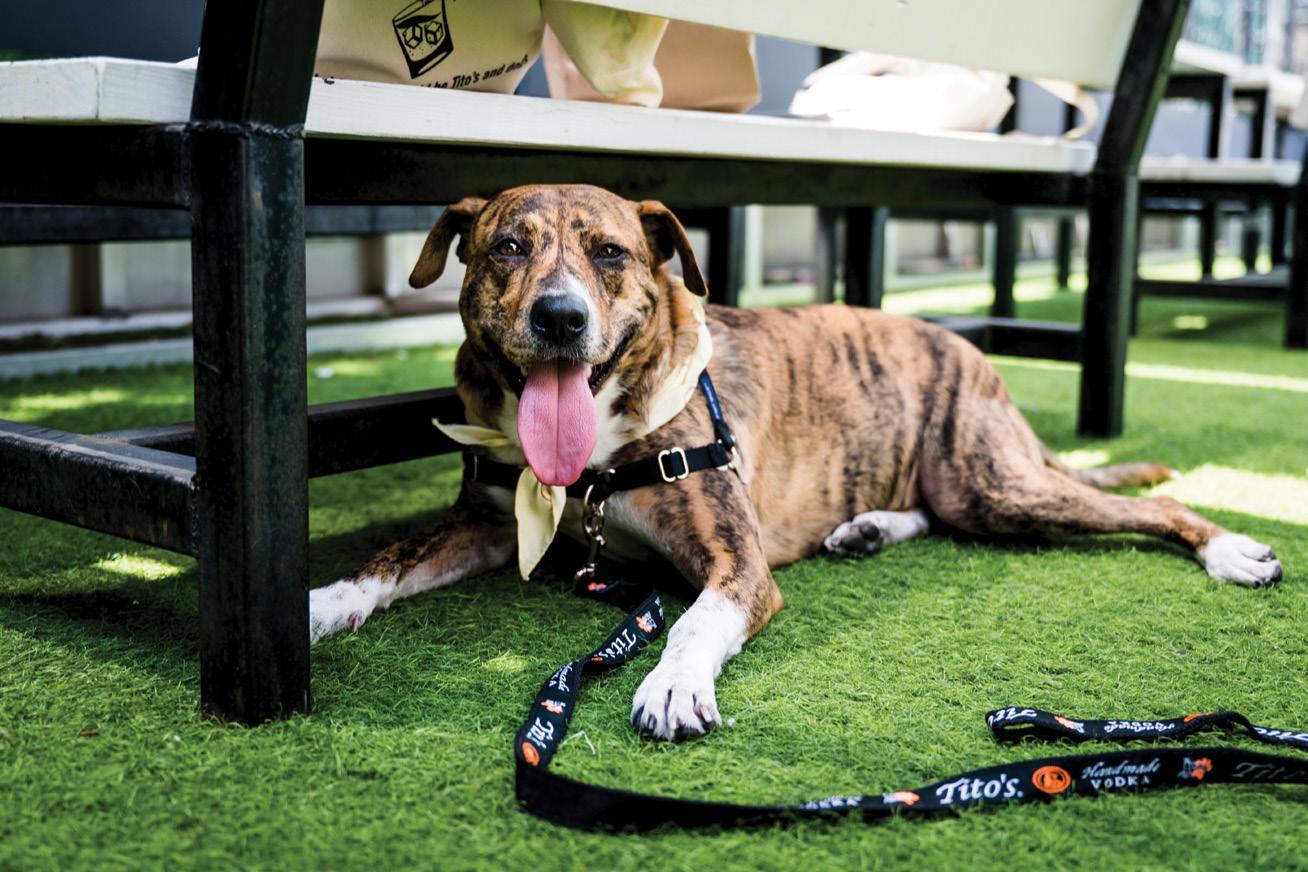
Tito’s Vodka for Dog People program amplifies the work of animal-focused non-profit organizations across the U.S. and beyond, focusing on affordable veterinary care and low-cost spay and neuter services
work. All proceeds from its Love, Tito’s merch store (available online or at the brand’s Austin, Texas, location) are also donated to a non-profit of choice.
“Giving back has been woven into the fabric of our company,” says Lukken. “It shows up in how we support nonprofit [organizations], how we empower our employees to help non-profits in their communities, and how we show up for our fans, our retailers, our distributors, and the causes that matter most to them.”
Leading the conversation
Tito’s Handmade Vodka relies on the
use of Love, Tito’s in the duty free channel to strengthen its overall philanthropic efforts. The brand strategically leads conversations with its customers and travel retail operators to learn more about the causes close to their hearts and find ways to get involved. This includes sponsoring charity golf tournaments and fundraising galas, donating US$1 per bottle sold in-store or matching donations to help expand their reach.
“It’s not just about the number of dollars donated or the number of organizations supported. What truly matters is the emotional connection
we create, the happiness we help bring, and our ability to amplify the efforts of non-profits making a real difference,” shares Lukken. “Those are the metrics that guide us.”
Through the platform, Tito’s Handmade Vodka utilizes its tools and resources to help generate awareness of non-profits and the work they do, as well as the difference they make on both a local and national level. “While data matters, it’s the power of storytelling that truly resonates. Stories show us that anyone can spark change,” she continues. “We strive to inspire others to join alongside us, whether by volunteering, donating, or simply raising awareness for a cause they care about.”
The Tito’s team is dedicated to staying connected with non-profits to understand their evolving needs and the needs of their communities. “We’re always exploring how to best support those needs and adapt our efforts over time, while staying true to our roots of turning spirits into love and goodness,” says Lukken.
Looking ahead, the brand plans to keep building on what is working while staying flexible and responsive to needs. Whether it is responding to natural disasters or remodeling an animal rescue, Lukken ensures Tito’s Handmade Vodka will continue to show up where it counts.
Although interest in lowand no-alcohol options is rising, consistent demand in travel retail is still emerging. Direct sampling remains one of the most effective ways to convert curiosity into purchase

Since the pandemic, travelers have been rethinking how wellness fits into their lifestyle, especially when it comes to alcohol and tobacco. Some are cutting back completely, while others choose non-alcoholic drinks and nicotine alternatives that better align with their health goals. The “sober-curious” mentality is gaining momentum, and travel retailers such as Gebr. Heinemann are responding by
ATOOSA RYANNE ARFA
Recent m1nd-set data shows growing interest in the “sober-curious” lifestyle. 59% of Gen Z travelers plan to reduce alcohol intake in 2024, a 43% increase from last year. Their motivations align with wellness goals: 65% want to improve physical health, 58% want to focus on mental wellbeing and 44% seek cost savings, highlighting how
financial wellness also factors into their choices. Mocktails lead substitutes, with 36% choosing non-alcoholic mixed drinks when flying or shopping.
Retailers such as Gebr. Heinemann are integrating wellness into their category strategies by broadening their product mix and challenging traditional definitions of indulgence in travel retail. This includes no- and low-alcohol
options, next-generation tobacco alternatives and an expanded range of wellness-oriented products, including healthy snacking.
Gebr. Heinemann’s mantra to “turn travel time into valuable time” guides curation of categories that meet the needs of health-conscious, experience-



driven travelers. “We bring a long-term view and entrepreneurial agility to category development,” says Niels Altmann, Head of Buying for Tobacco.
Heinemann treats alternative nicotine products as a category-wide transformation, offering heated tobacco, vapes and oral nicotine pouches – also known as Next Generation Products (NGPs) – for younger travelers seeking discreet, tech-enabled and flavorful options without traditional tobacco’s stigma or health risks.
Manuel Schilling, Head of Buying for Spirits, notes that demand for low- and no-alcohol beverages remains stronger in social settings such as bars and curated events than airport retail, but that Heinemann is still preparing for rising interest. “While we haven’t yet seen a significant shift in demand within travel retail, we continue to ensure that our assortment reflects broader consumer trends,” he explains.
Where wellness-driven momentum
shows up depends on category and location. For nicotine alternatives, Frankfurt and Vienna are standout hubs. “NGPs are outperforming expectations in these markets, confirming travel retail’s role as a platform for discovery and trial,” says Altmann. On the spirits side, the Nordic region leads globally in demand for lowand no-alcohol products. “This trend is shaping our category planning and assortment strategy as we continuously track and adapt to regional preferences,” adds Schilling.
The new buzz
Heinemann positions discovery as the gateway to wellness-driven change, centering its strategy on in-store engagement and sensory experiences that promote exploration.
“We feature branded category zones, staffed engagement tables and interactive merchandising designed to demystify NGPs,” explains Altmann. “Our experience shows that educa-
tion at the point of sale significantly lifts engagement. It’s less about selling a product, and more about offering a moment of discovery.” That sense of discovery matters for travelers curious about NGPs but unsure about how they function or how they fit into routines or health goals.
Schilling reinforces this approach, pointing to the effectiveness of the “liquid to lips” model within the spirits category, which includes sampling, tastings, and brand experiences. “These activations can generate strong initial interest, but maintaining momentum afterward remains a challenge,” admits Schilling. Heinemann tackles this challenge by collaborating with global brands pushing category boundaries. “These collaborations are grounded in transparency, reliability and mutual commitment, cornerstones of our company philosophy,” shares Altmann.
Recent spirits partnerships include William Grant & Sons’ Atopia 0.5% and Diageo’s Tanqueray 0.0%, products that gained traction in domestic markets and now are piloting within travel retail. “While there is curiosity around low- and no-alcohol products, sustained demand in travel retail is still developing,” Schilling says. “Again, we’ve seen that activations involving direct sampling are key to driving interest.”
Indulging intentionally
The wellness story goes beyond the mocktail glass or vape pen. Travelers across the board are making more intentional choices about what they inhale, sip and snack on. In response, Heinemann is broadening its overall wellness portfolio to include functional snacks and sustainable products, reflecting a broader shift in how consumers balance indulgence and restraint in today’s era.
“Our long-term view is shaped by a broader shift that travel retail must respond to consumers who want choice, control and reduced-risk moments, even in traditionally indulgent categories,” concludes Altmann.


Gen Z is approaching spirits with priorities shaped by digital culture, shifting values and fluid brand loyalty. This generation’s palate calls for authenticity, social responsibility and meaningful engagement, pushing the industry to innovate
by ATOOSA RYANNE ARFA
Gen Z is rewriting the travel retail spirits playbook, guided by peer influence and aesthetics and often deciding on impulse. The challenge for brands and retailers: how do you show up and sell to a generation that rejects traditional rules?
Recent m1nd-set data offers insight. Gen Z values price most, with 60% buying on promotion and an average spend of US$70, below the US$84 overall average. But price is only part of the picture: 14% say packaging drives purchases, and 11% are swayed by friends. Only 60% are influenced by staff, compared to 72% overall. Nearly one-third make
unplanned purchases, often at the airport or in-store.
Industry leaders such as ARI, Pernod Ricard GTR and Quintessential Brands respond by meeting Gen Z where they are, balancing connection with tangible results.
Pouring into Gen Z preferences
Gen Z lives online, where influence moves fast. “It’s essential to engage with them as early as we can in their travel journey,” says Shane O’Sullivan, Global Buying Manager at ARI. The retailer leans into TikTok and Instagram with content such as recipes or viral trends. “It’s about keeping the category current
and showing different usages for products,” he adds.
“This generation is extremely digital-savvy and thinks digital-first,” says Oliver Storrie, Managing Director at Quintessential Brands. “If they have a good experience with our brand, they will let the world know. But if they have a negative experience, they’ll be even louder.” Quintessential taps into consumer trends through gamification, competitions and geotargeted campaigns. The company also leverages third-party partnerships to drive buzz around popular products, such as its Kir Royal ready-to-serve cocktails, launched with Avolta in more than 100 airport stores as part of an Emily in Paris tie-in with Paramount Pictures.
Rae Gibson, Brand Director at Pernod Ricard GTR, says digital culture shapes both how Gen Z lives and how they shop. She points to projects such as Absolut Gift, a travel retail first with Heinemann Duty Free. The activation

lets travelers personalize Absolut Vodka
Original bottles by scanning a QR code, then co-creating a custom message with up to five people using photos, emojis or voice notes. The recipient then unlocks the message through augmented reality.
That said, the spirits category faces growing pressure as Gen Z’s views on wellness shift. In 2024, 59% of Gen Z travelers said they planned to cut back on alcohol, up 43% from the previous year, according to m1nd-set. The main drivers: physical health (65%), mental wellbeing (58%), and saving money (44%).
Gibson also notes category limitations as a challenge. “The liquor category has certain restrictions around aggressively targeting Gen Z travelers, as not all of them sit within legal drinking age,” she says.
To address these challenges, key players are leaning into research. ARI recently completed its Future Customer Initiative; an in-depth project aimed at
pinpointing both near- and long-term engagement opportunities. “This was an extensive piece of work we undertook to reformulate our customer segmentation and identify the opportunity spaces to engage with passengers,” says O’Sullivan. ARI’s strategy is now tailored to the specific customer profile of each location, including Gen Z. “We know through our research that Gen Z passengers value authenticity and seek brands with compelling stories, traditional production methods and high-quality ingredients.”
Innovation on tap
Innovation fuels Gen Z engagement through new flavors, formats, limited editions and digital perks. Readyto-drink (RTD) cocktails, no- and low-alcohol options and liqueurs are in rising demand. “RTDs are a long-term US trend going global,” says Gibson, with vodka leading, followed by tequila and whiskey mixes.

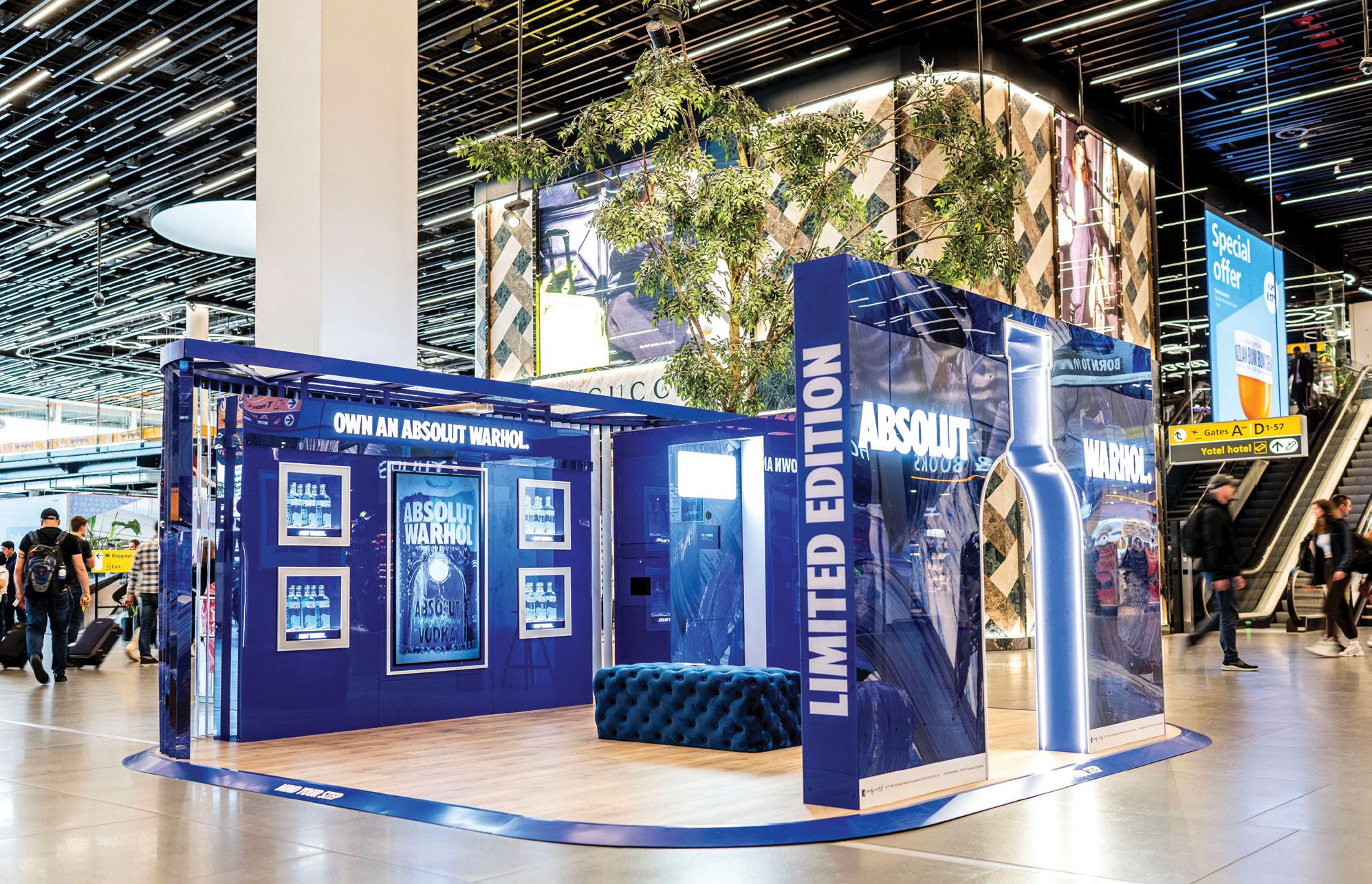
editions leverage design collaborations
Limited editions grab attention through design collaborations spanning culture, music, fashion, and flavors. For example, Pernod Ricard GTR’s Absolut x Warhol partnership featured a striking blue bottle inspired by a rediscovered Andy Warhol painting. The campaign combined pop-ups, 3D airport media and influencer content, initially targeting millennials but resonating stronger with Gen Z, according to Gibson.
When it comes to categories, white spirits dominate Gen Z travel retail, especially vodka. “Gen Z buys twice as much vodka as the average traveler,” says Gibson, who adds that Absolut leads as the number one vodka globally, backed by innovation and its inclusive “Born to Mix” ethos and mantra.
Tequila is gaining momentum but remains underdeveloped in travel retail versus domestic markets. “It’s an ideal category for premiumization,” Gibson notes, highlighting strong response to super-premium Altos Tequila and the
European expansion of ultra-premium Código 1530 Tequila. While the US leads sales, EMEA, APAC and GIBU show the strongest growth forecasts. Agave spirits purchases among Gen Z are also twice as high, prompting further investment from Pernod Ricard GTR.
Gen Z’s adventurous palate fuels interest in flavored and novel spirits.
ARI’s O’Sullivan points to brands such as Dead Man’s Fingers rum and honey whiskey liqueurs such as Tullamore Dew Honey, which add playfulness to the category.
Gin also resonates. “Opihr Oriental Spiced Gin connects consumers to the regions where we source botanicals, making it one of the fastest-growing premium gins,” Quintessential Brands’ Storrie says, adding that its narrative of travel fits naturally within the travel retail space. Educational digital marketing on Greenall’s Gin is also resonating, highlighting its heritage and quality.





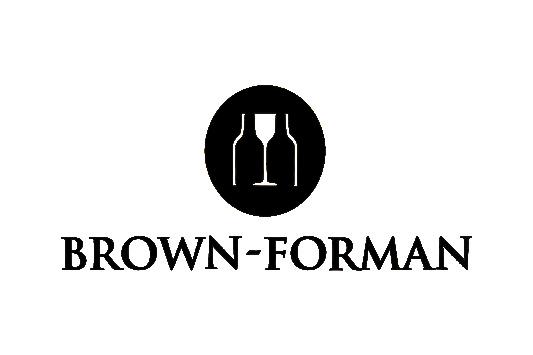

















Driving sales today means going beyond the shelf. Immersive, experience-led retail, often referred to as “retailtainment,” is proving essential, particularly when it comes to younger shoppers.
“Conversion can be a challenge with this particular demographic,” says O’Sullivan. “Retailtainment is essential and something we do incredibly well at ARI.” A core strategy is “liquid to lips,” or putting product directly into consumers’ hands, which adds to the overall travel retail theater. “It’s fundamental for the spirits category, and is particularly important for local and new products,” adds O’Sullivan. “We know that Gen Z passengers want this sort of engagement.”
ARI has brought this approach to life through seasonal activations such as World Cocktail Day and World Whiskey Day, which includes tastings, product demos, whiskey ambassador insights and value-led promotions. “We take a very bespoke approach across each of our locations, ensuring that our range and assortment is adapted to the passenger demographic,” explains O’Sullivan.
“Travel retail exclusive and first-tomarket launches add an air of exclusivity to the retail experience that Gen Z
passengers love,” O’Sullivan adds. “We have brilliant partnerships with our brands and often work with them as a launchpad for new products or to trial new concepts.”
One standout example was “Arrive Like a Local” a digital campaign created in collaboration with Pernod Ricard GTR. The activation connected with travelers across multiple touchpoints. “It’s about creating memorable, engaging and localized experiences,” shares O’Sullivan.
In 2024, Pernod Ricard GTR upgraded the omnichannel campaign and rolled it out to over 36 airports worldwide as “Jameson Passport,” powered by AI learning and Visa payment technology. “The incorporation of Web3 technology not only enabled seamless engagement, but also allowed us to debut interactive features such as virtual token collection, augmented reality and gamification,” says Gibson, adding that offering a digital gift-withpurchase (GWP) in multiple airport locations aligned perfectly with their strategic objectives and gave consumers something of value they don't have to physically carry.
Pernod Ricard GTR also brought retailtainment beyond the airport in a

campaign for Chivas Regal, launched in partnership with Avolta and Manchester United FC. “It aligned with our mutual objective of targeting incremental travel retail shoppers and simultaneously increasing footfall and conversion,” says Gibson. Shoppers who purchased Chivas Regal at World Duty Free could scan their Red by Dufry membership for a chance to win tickets to a Manchester United vs. Arsenal match, using in-store QR codes, app-based integration and targeted emails.
For Gen Z, sustainability is the baseline. “Social issues matter to this generation, so we need to be authentic in everything we do and when we engage them,” notes Storrie. “They have an inclusive approach to the community, which we also need to be aware of in our various campaigns.”
One example Storrie shares is Quintessential Brands’ Greenall’s Gin, which uses a 94% paperboard bottle, thereby cutting weight, carbon footprint, and water usage. “With every sip of your G&T, you’re not only tasting something good, you’re doing something good,” says Storrie. The bottle’s carbon footprint is up to 75% lower than glass, water use is reduced dramatically, and its recyclable liner separates easily for optimal recycling and sorting. The brand also partners with Ecologi to plant trees in reforestation areas, extending its environmental impact.
Pernod Ricard GTR’s Future of Packaging team also pushes waste reduction, from modular pop-ups and lighter packaging to digital gifts, while local partnerships and Gen Z influencers boost authenticity. “We aim for responsibility at every step, from grain to glass,” says Gibson.
Looking ahead, this generation wants meaning, discovery and a reason to raise a glass with purpose. The future of spirits is being stirred, not served straight, and the ones paying attention now are best positioned to keep the next round going.



Mazaya’s Head of Travel Retail Rawan Elayyan discusses plans to amplify the shisha company’s differentiation through curated activations and exclusive product offerings, while detailing her vision for building lasting consumer connections and establishing Mazaya as a category leader by
WENDY MORLEY
Mazaya’s travel retail division is charting an ambitious course for expansion, building on its position as a top-three global shisha molasses brand with over 150 flavors and a growing footprint across major international airports and border stores. Since its launch in 2010, the brand has established itself as a premium player in the channel through strategic market expansion and innovative product offerings. Its aggressive post-pandemic
growth marked by new listings in Riyadh, Casablanca, Greece, Turkey and India has driven significant revenue gains, according to industry reports.
Head of Travel Retail Rawan Elayyan succinctly describes her vision for Mazaya as, “To expand Mazaya’s presence in the travel retail channel by offering a distinctive experience that blends innovation and premium quality at every touchpoint while building lasting connections with consumers and establishing Mazaya as the category leader.”

Elayyan’s leadership approach balances current operational needs with longterm market positioning as Mazaya continues its global expansion across multiple regions and channels.
“My immediate priorities will be to strengthen partnerships with key travel retail operators, enhance Mazaya’s brand visibility across strategic locations and tailor our product offering to meet the evolving preferences of international travelers,” she explains. “All while laying the groundwork for sustainable and long-term growth.”
The brand’s differentiation strategy emphasizes its premium positioning

and diverse flavor portfolio. Mazaya has built its reputation on contemporary brand imaging and innovative products, with flavor innovations including Two Apples Masri, Love and Pan Raas, alongside the successful Caviar Drops flavor booster line that continues to drive gift-with-purchase campaigns.
She explains, “I plan to amplify our differentiation in the travel retail channel through a multi-faceted approach, by highlighting Mazaya’s premium quality, contemporary brand image and diverse flavor portfolio.”
The strategy includes what she describes as “curated brand activations that speak to modern consumer lifestyles,” “standout in-store visibility that captures attention in high-traffic
Mazaya’s premium positioning and contemporary brand imaging drives consumer engagement across key travel retail locations, supporting the brand’s global expansion strategy
zones,” and “exclusive product offerings tailored specifically for the travel retail audience.”
“Our goal is to not only engage global travelers but to elevate the perception of the shisha category within this dynamic retail space,” she notes.
Understanding consumer preferences remains central to Mazaya’s strategy as the brand expands regionally. Elayyan emphasizes the importance of datadriven decision making and trend monitoring to maintain Mazaya’s competitive edge.
“Prioritizing ongoing market research, close monitoring of travel retail dynamics and active engage-
ment with consumers through brand ambassadors,” she lists as her areas of concentration to stay ahead of the curve. “Leveraging data insights and collaborating with trendsetters in lifestyle and flavor innovation will enable us to anticipate and quickly respond to evolving preferences, ensuring Mazaya remains relevant and desirable.”
The brand’s innovation pipeline includes plans for what Elayyan describes as “exclusive traveler-focused product lines and immersive in-store experiences that engage multiple senses.” However, she acknowledges the regulatory complexities facing tobacco companies in implementing digital marketing strategies.
“While leveraging digital technologies for personalized marketing and seamless omnichannel integration is an important part of our vision, we recognize that, as a tobacco company, regulatory restrictions may require this to be a longer-term, carefully phased strategy,” she says.
Elayyan's leadership philosophy centers on building teams that can quickly navigate the complexities of international markets while maintaining focus on consumer needs and brand excellence.
“I plan to cultivate a high-performing team by fostering a culture of agility, collaboration and accountability,” she explains. “Empowering team members to think creatively and stay consumerfocused in a fast-paced environment.”
“Continuous learning, open communication, and clear alignment on goals will be key to ensuring we not only adapt to the ever-changing travel retail landscape but lead within it,” she adds.
Beyond immediate operational priorities, Elayyan’s strategic vision encompasses broader market expansion opportunities. The brand has demonstrated particular strength in its giftwith-purchase campaigns and premium product positioning, elements that have contributed to its recognition as a leading player in the global shisha category.

In this Wine Report, GTR Magazine speaks with representatives from across the category for an update on market trends and challenges, as well as the integration of experiential retail in the channel
by LAURA SHIRK
Described by experts as dynamic, complex and challenging, the wine category in travel retail is one of the fastest growing categories in the channel. Competition is said to be fierce, especially now with new tariff regulations looming. According to Cathy Rolland, Global Travel Retail Manager at Osborne, most wineproducing countries tend to prioritize their own national wines, which leaves limited shelf space for international selections. “When stores do offer a broader assortment from multiple origins, Spanish wines often remain a
niche category,” she says. “Currently, European countries like France and Italy dominate the category, benefiting from both strong consumer recognition and strategic positioning by their national players.”
Pier Giuseppe Torresani, Export and Travel Retail Sales Director at Masi Agricola, believes a proper wine assortment adds credibility and prestige to the overall alcohol offering. Since its market share in travel retail is much lower than in domestic markets, Torresani points out that the wine category has significant potential. “Consumers are present;
they are simply looking for the right offer. Retailers who have invested in the category are reporting excellent results. Sales trends vary significantly from region to region,” he explains. Addressing extremes in the market, Torresani notes as a result of its arrival shops, ferries and border stores, Northern Europe is the largest market with a purchasing pattern focused on renowned brands and price advantages. Whereas, travel retail markets in the Middle East and Asia Pacific offer high-value fine wines that are particularly appealing to international travelers.
Although the wine category is facing an aging consumer base and a continued decline in consumption driven by financial concerns and changing social habits, Bruno Teixeira, Global Travel Retail Director at Familia Torres, says





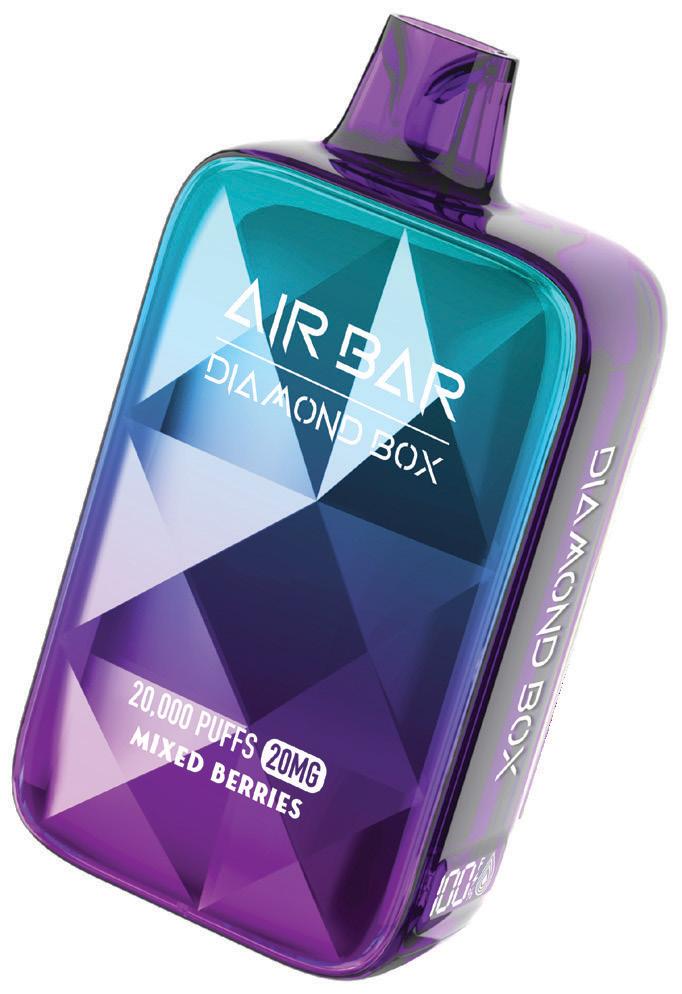










a winemaking history that spans over

there is opportunity to meet the demand of the next generation of “more involved and conscious wine drinkers.”
“For wine and spirits, we aim to recruit younger generations as many mature markets become increasingly reliant on older ones,” explains Teixeira. “Experienced drinkers are loyal, but less involved with the category, and lower spending than younger drinkers. Millennial consumers tend to be more highly involved in wine and attracted to brands, storytelling and experiences that reflect their lifestyles.”
Keeping in mind the current economic landscape, Familia Torres plans to continue optimizing its portfolio to create value and provide a reason to buy based primarily on a quality model. A timeless trust has been routinely exhibited between the final consumer and its collection. “The increase in the cost of living is causing a certain downward
trend, especially in the lower price levels or standard range, which is an important category for our company, so we keep a close eye on it together with our partners,” he adds.
Right now, the company is working on producing limited edition wines that come from unique vineyards and historic estates, as well as wines that are made with ancestral varieties. Following a decades-long project to recover the winemaking heritage of Catalonia in Spain, more than 50 ancestral varieties have been rediscovered such as Querol, Forcada and Gonfaus. This initiative will be included in the company’s differentiation strategy for global travel retail, with the purpose of creating unique experiences for travelers.
“We also rely on the unique in-store shopping experience as a key tool to engage with the traveling consumer. We want to ensure that consumers take
away with them a part of the brand's story, enabling them to pass on our values,” says Teixeira.
As one of the largest wine groups in Italy, family-owned Herita Marzotto Wine Estates strives to achieve quality above all else. While relatively recent to travel retail (compared to the domestic channel), Herita Marzotto brands have gained popularity due to their presence on a global level at top restaurants and venues. One of the first companies to invest in Prosecco with a vision of international success for the product, the group remains a category innovator. It most recently launched the Santa Margherita Prosecco Valdobbiadene Superiore DOCG. This sparkling Prosecco is Herita Marzotto’s latest limited edition and travel retail exclusive.
“We are firm believers in experiential

retail and, as a wine company, we work closely with our partners to ensure all the necessary tools are available to create memorable experiences for our traveling customers. We are putting the finishing touches to Santa Margherita branded ‘promo islands’ which are due to feature in several duty free stores worldwide during the coming months,” explains Giacomo Marzotto, Export & Travel Retail Director at Herita Marzotto Wine Estates.
The main objective of this initiative is to strengthen the presence and recognition of the Santa Margherita brand in a travel retail context, as well as support the new release by establishing a direct dialogue with the consumer. “The initiative has been carefully designed to activate a true customer journey, engaging and guiding shoppers through an experiential path, thanks to in-store tastings and a narrative [used] to spark interest, drive engagement, share our wine culture and support sell-out,” he continues.

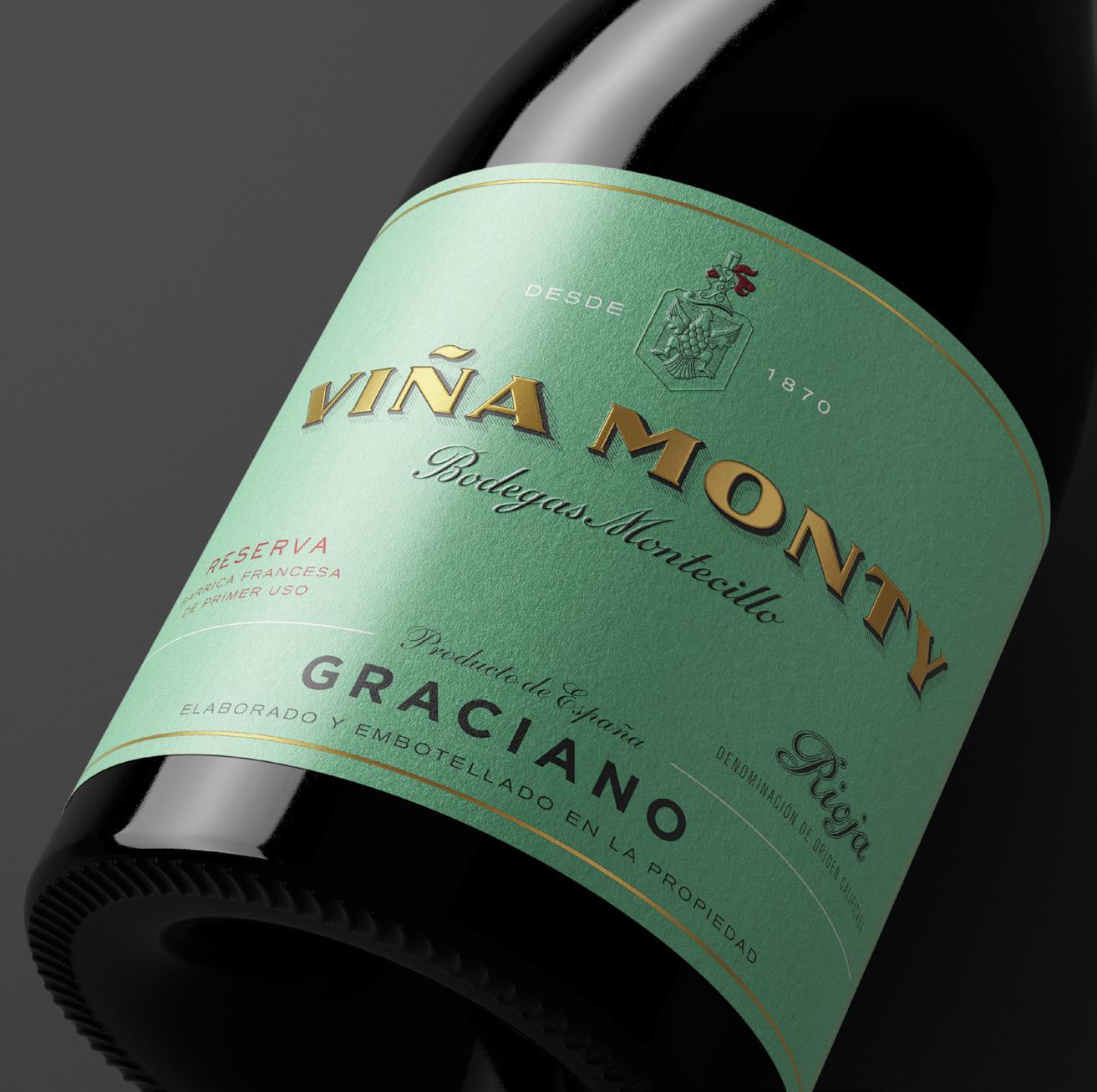
Following the announcement of its partnership with Duty Free Global, international wine group AdVini hosted a memorable tasting. The session, entitled “Revealing the terroir wines: Bordeaux versus Rhône,” featured a comparative vertical tasting of L’Oratoire des Papes versus Château Patache d’Aux and offered fascinating insight into the distinct terroirs and winemaking styles of the two prestigious French wine regions.
The partnership is focused on specific markets, such as Asia and other areas in global travel retail that AdVini does not currently cover. It includes AdVini’s global brands from Bordeaux and Rhône Valley, as well as other regions in the South of France, such as Provence, Languedoc-Roussillon and main brands from AdVini’s South African wine offer.
Founded in 1872, the group is driven by family spirit, entrepreneurship and people-focused shareholders. According to the team, AdVini is committed to the sustainability of its activities and strives daily to reduce its impact, both in the vineyard, where it is leading an agroecological transition, as well as at production sites, where careful attention is given to water use, energy efficiency and green design techniques in winemaking.
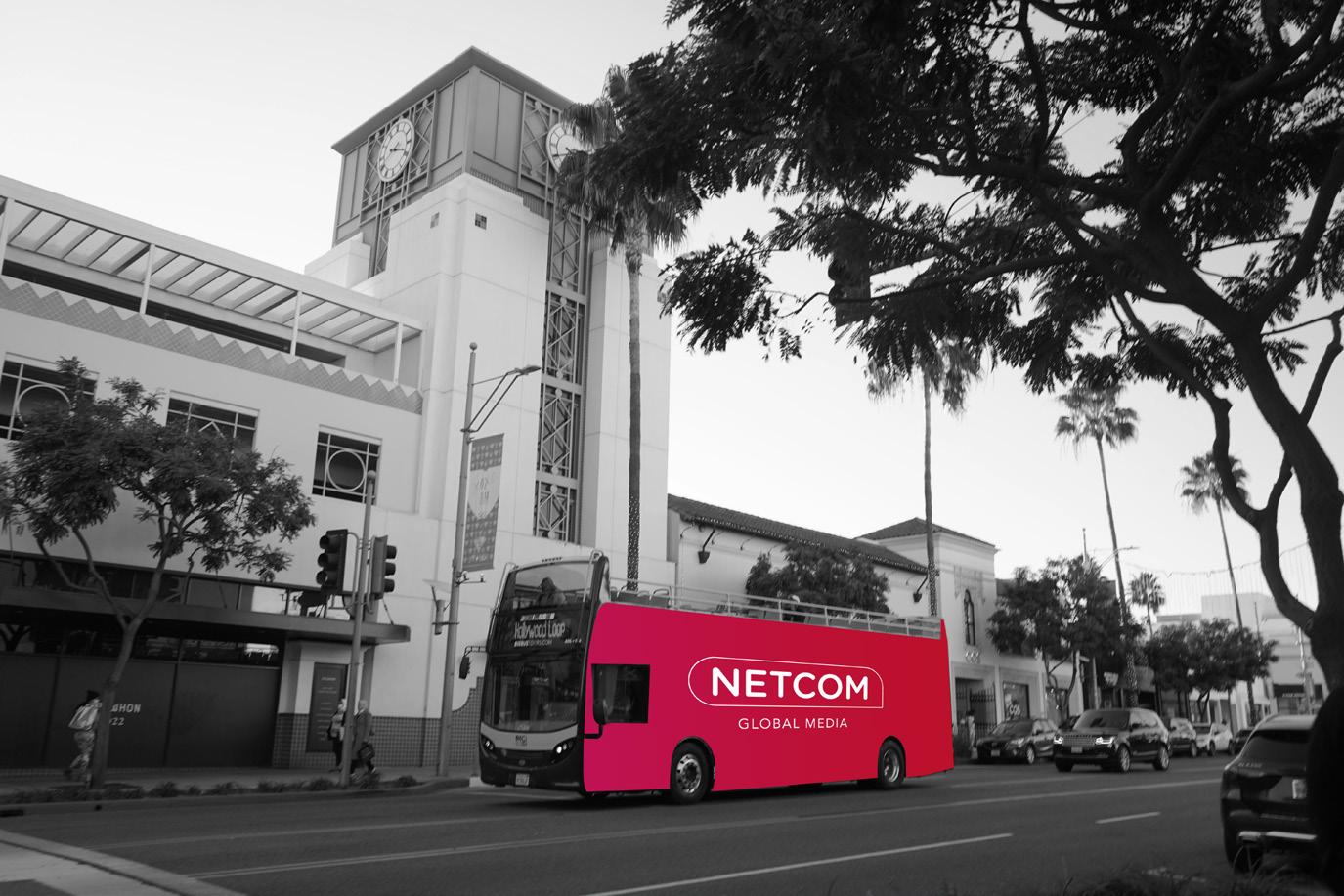




Herita Marzotto Wine Estates launched the Santa Margherita Prosecco Valdobbiadene Superiore DOCG. It is light, dry and wellbalanced on the palate

Speaking about experiential retail in the duty free environment, Rolland notes what truly resonates with passengers is the ability to create an emotional connection. The Osborne team works to transport travelers beyond the airport, even if only for a few minutes. “With the help of our brand ambassadors, we invite them to close their eyes and imagine themselves walking through our vineyards in Rioja or our centuriesold cellars in Jerez. We want them to take with them not just a bottle, but a piece of our story—our passion for terroir, craftsmanship and authenticity,” she says.
Although Osborne’s wine portfolio is not the widest, it is rooted in some of Spain’s most iconic appellations, as well as thoughtfully curated and recognized for its outstanding quality. Its Viña Monty Graciano was named one of the “Top 50 Wines in the World” by the Decanter World Wine Awards in 2024.
Sense of occasion
Considered more demanding than ever before, traveling consumers not only look for special prices and promotions,
but also want to participate in exciting shopping experiences. In some cases, this can reflect a broad offer, which can be intimidating for consumers. Masi Agricola’s goal in travel retail is to make the brand visible, and where possible, to provide consumers with the opportunity to sample products. “Our role is to educate them and help them understand the key distinctive characteristics of our
land and our wines. We can only do this through guided tastings,” says Torresani. “It is a long-term effort that we pursue consistently in domestic markets and replicate in travel retail whenever laws permit and operators are willing to collaborate.”
With a winemaking history that spans over 250 years, the winery has proudly led the success of Amarone and the Valpolicella Ripasso category, two of the most renowned Italian wine styles. According to Torresani, wine enthusiasts recognize the value of the name and often choose Masi Agricola in travel retail because they have already experienced the brand in fine restaurants at home or while on holiday.
In partnership with Heinemann, Masi Agricola introduced limited edition packaging for its premium rosé Rosa dei Masi, developed exclusively for the Norwegian travel retail market. Showcasing the colors of the Norwegian flag, this dedicated packaging celebrates Norway’s Constitution Day and caters to growing traveler demand for distinctive products that evoke sense of place and occasion. Torresani comments, “This initiative exemplifies how tailored exclusives can enrich the retail mix and differentiate the in-store travel retail experience.”
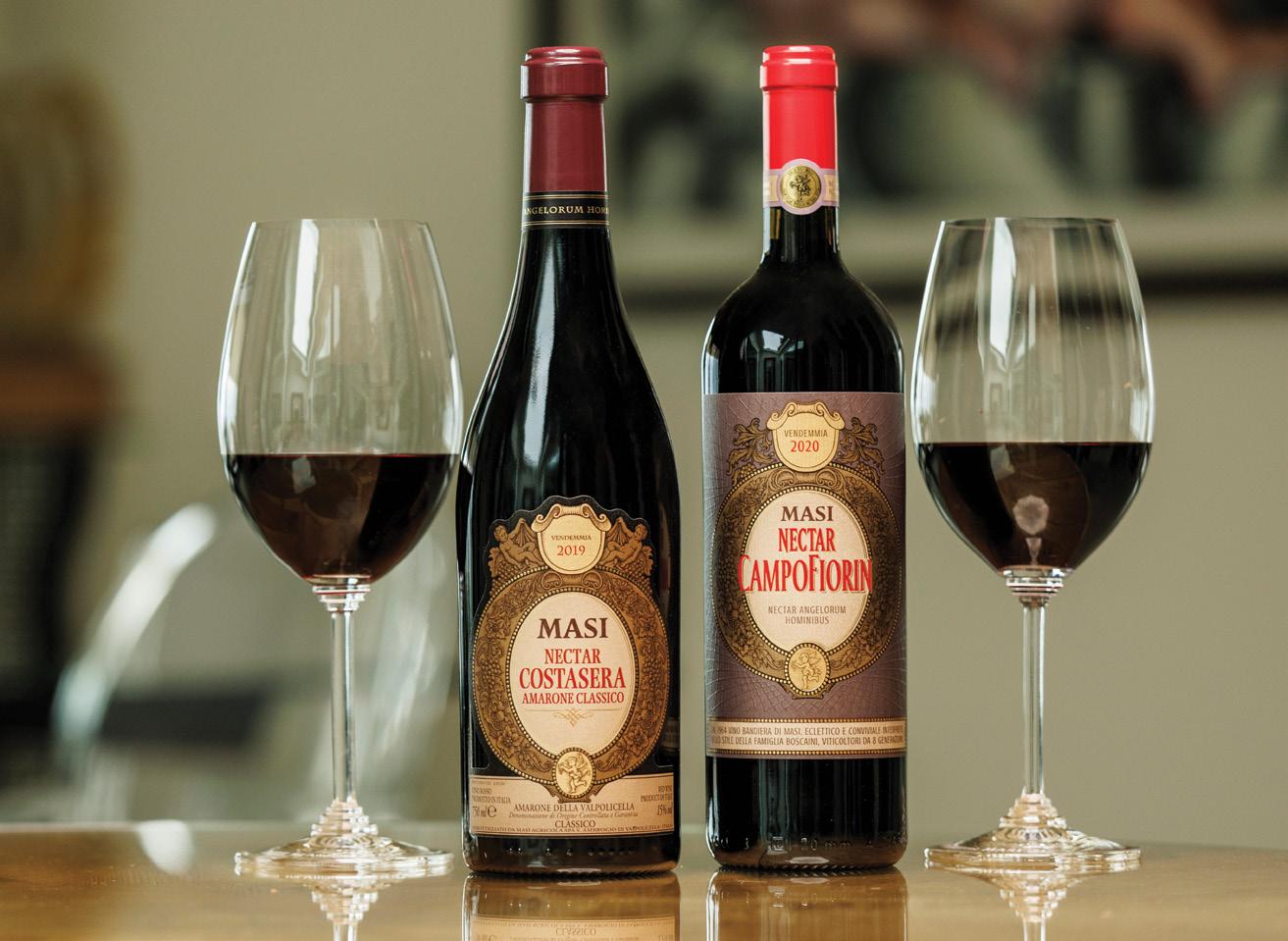


























































MONARQ Group’s diversified approach and Japanese whisky expertise are driving robust growth across cruise, duty free and domestic channels, with strategic partnerships fueling expansion into new markets
by WENDY MORLEY
Miami-based MONARQ Group is expanding its organizational footprint and partnership network as the premium beverage distributor accelerates growth across multiple channels and markets.
“The first half of the year has been very positive for us, due to a resilient premium portfolio and solid executions across cruise, duty free retail and domestic markets,” says Robert de Monchy, CEO. “Tariffs have not directly impacted our business, as we don’t operate in the U.S. domestic market.”
Despite the company’s continued growth, challenges of currency volatility and continued price sensitivity among shoppers persist. “These are not expected to disappear entirely in the short term, so they remain factors to manage, or even opportunities to leverage,” de Monchy says, adding that the company has managed successful navigation of these issues by “leaning into three levers: channel diversification, portfolio resilience and supply chain optimization.”

The group’s Japanese whisky portfolio has emerged as a particular growth driver in travel retail. Danielle Glazier, Director Duty Free, says quality, authenticity and new labeling standards from Japan have boosted consumer confidence, and the category’s gifting appeal resonates with travelers seeking unique discoveries.
“Japanese whisky has really captured the imagination of travelers in recent years and this growth is showing no signs of slowing down,” she explains. “Travel retail shoppers, whether they’re collectors or just curious about craftsmanship, are willing to trade up for something unique.”
The demographic profile is evolving beyond the traditional older male consumer base, Glazier adds. “We are seeing more interest from younger, millennial and Gen Z consumers who are looking for authentic discovery brands,” she states.
The group is also advancing Nikka’s entry into the cruise channel, leveraging the brand’s diverse portfolio that extends beyond traditional whiskies into premium vodka and gin. “We are in the process of launching the brand in cruise and are in discussion with several cruise lines for the upcoming season. We look forward to sharing more details in the coming months,” Glazier comments.
“Through its diverse portfolio, Nikka is very much involved in the global cocktail culture and prides itself on high quality and innovation, rooted in history.”
De Monchy identifies key growth pillars such as innovation, uniqueness, route-to-market and speed in execution as reasons for MONARQ’s success. The company will continue expanding its organizational footprint while maintaining focus on partnership, routeto-market, excellence in execution and category, as well as market trend analysis.



